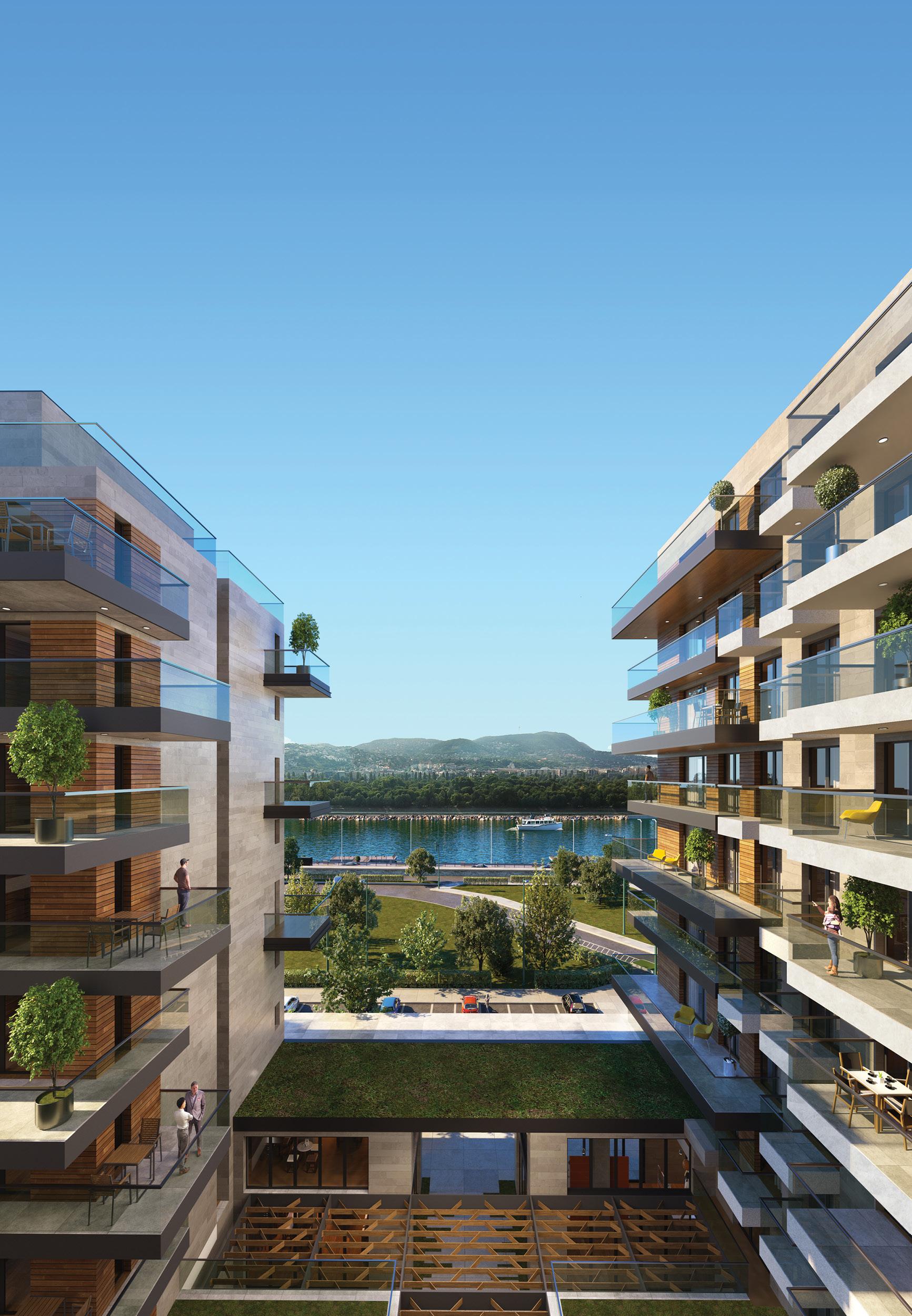SPECIAL REPORT INSIDE THIS ISSUE
Market Talk: Real Estate Market Learning to Embrace Sustainability Green Business

Analysts agree that commercial real estate projects are becoming more sustainable and efficient, notably in the office and industrial sectors. To what extent this is due to market demand, financial pressure, or regulatory influences remains to be seen.
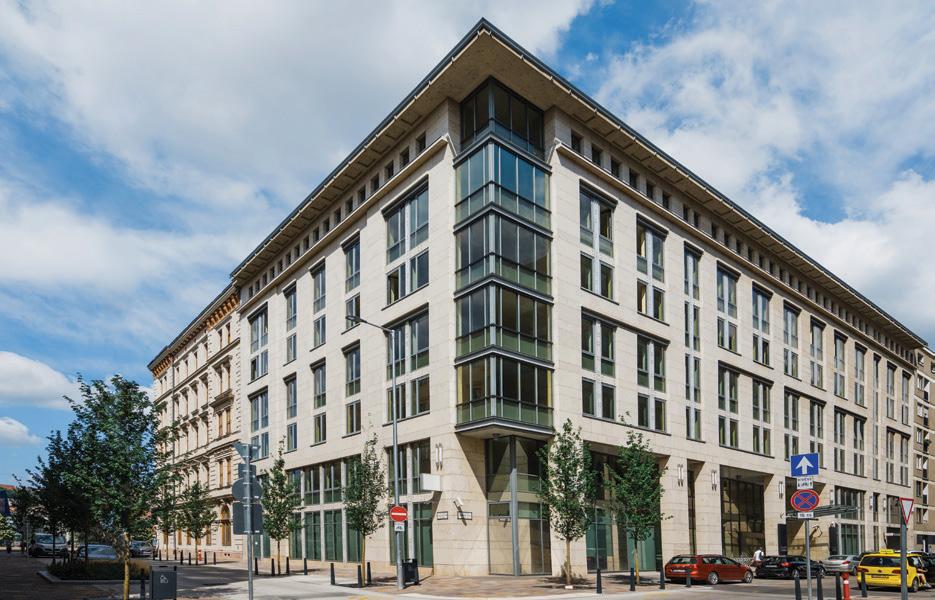
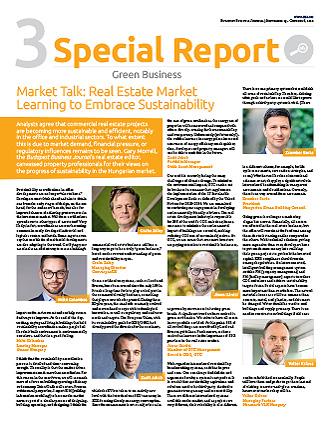
Inflation Keeps Breaking Records, Still Far From Peak
Consumer prices in Hungary are rising at a nearly unprecedented pace, and, according to analysts, there is no turning point visible on the foreseeable horizon.
In August, the consumer price index in Hungary accelerated to 15.6%, up from 13.7% in July, breaking another 24-year record.
Developing Along New Lines

A challenging time to do business is prompting a different approach in real estate, says Mátyás Gereben of CPI Hungary, where it provides “not only physical space but energy solutions, sustainability solutions, community solutions.”
Offices that combine classic luxury with modern technology to ensure a professional work environment and an outstanding visitor experience.

BUSINESS HUNGARY’S PRACTICAL BUSINESS BI-WEEKLY SINCE 1992 | WWW.BBJ.HU VOL. 30. NUMBER 17 SEPTEMBER 23 – OCTOBER 6, 2022 HUF 1,850 | EUR 5 | USD 6 | GBP 4
13
3
9
www.academiaoffices.hu NEWS
EDITOR-IN-CHIEF: Robin Marshall
EDITORIAL CONTRIBUTORS: Balázs Barabás, Zsófia Czifra, Kester Eddy, Bence Gaál, David Holzer, Christian Keszthelyi, Renáta Kónya, Gary J. Morrell, Nicholas Pongratz, Gergely Sebestyén, Robert Smyth.
LISTS: BBJ Research (research@bbj.hu)

NEWS AND PRESS RELEASES:
Should be submitted in English to news@bbj.hu
LAYOUT: Zsolt Pataki
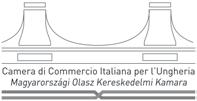
PUBLISHER: Business Publishing Services Kft.


CEO: Tamás Botka
ADVERTISING: AMS Services Kft.

CEO: Balázs Román
SALES: sales@bbj.hu
CIRCULATION AND SUBSCRIPTIONS: circulation@bbj.hu
Address: Madách Trade Center 1075 Budapest, Madách Imre út 13-14, Building B, 7th floor. Telephone +36 (1) 398-0344, Fax +36 (1) 398-0345, www.bbj.hu
 ONLINE: WWW.BBJ.HU
ONLINE: WWW.BBJ.HU
Why Support the BBJ?
• Independence. The BBJ’s journalism is dedicated to reporting fact, not politics, and isn’t reliant on advertising from the government of the day, whoever that might be.
• Community Building. Whether it is the Budapest Business Journal itself, the Expat CEO award, the Expat CEO gala, the Top Expat CEOs in Hungary publication, or the new Expat CEO Boardroom meeting, we are serious about doing our part to bind this community together.
• Value Creation. We have a nearly 30-year history of supporting the development of diversity and sustainability in Hungary’s economy. The fact that we have been a trusted business voice for so long, indeed we were the first English-language publication when we launched back on November 9, 1992, itself has value.

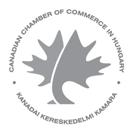

• Crisis Management. We have all lived through a once-in-a-century pandemic. But we also face an existential threat through climate change and operate in a period where disruptive technologies offer threats and opportunities. Now, more than ever, factual business reporting is vital to good decision-making.
For more information visit budapestbusinessjournal.com
THE EDITOR SAYS
KEEP BEING CURIOUS
If you will forgive me the indulgence, it has been an unsettling couple of weeks. The death of Queen Elizabeth II affected me much more than I thought it would.
Though I accept the concept of a constitutional monarchy is absurd for a liberal democracy, it is what the British have, and I see no great need to change it. Apart from anything else, it gives us a point of continuity that stretches back to William the Conqueror, which is quite something when you stop to think about it.
Hers was a life of service. Whether you are a monarchist or not, whether you are British or not, you cannot but admire a woman who proved more resolute and committed, dare I say it, than the vast majority of the politicians and statesmen and women she has seen come and go: 15 British prime ministers, 14 U.S. presidents (13 of whom she met); five freely elected Hungarian PMs.
Continuity proved to be one of the watchwords of the period of national morning that followed the death of the late queen. In my mind, she was, despite her diminutive stature, the Long Queen, the only British monarch in my 55 years on this earth, one stable point in an ever-changing world. She seemed at once frail and indestructible, and I felt much the same about my mother, 92, and my dog, a rescued German ShepherdHusky cross who is at least 15, quite possibly older.
But that’s the rub. The Long Queen is dead. My mother is unwell in hospital, and my dog is increasingly unsteady on her feet. The undeniable fact of the Long Queen’s mortality can only point to theirs. Queen Elizabeth’s death is unsettling even if there is solace in her own words: “Grief is the price we pay for love.”
But that is not the only factor behind my disturbed state of mind. Assuming you read this on our publication day and all has gone well, I will be back in the United Kingdom. I will, of course, visit my mother, though she may well not recognize me, but that is not the only reason for me being there. I will accompany my eldest daughter to help her move into her university accommodation.

It is, for her, a grand moment, the start of the next great adventure in her life; she worked incredibly hard for it and deserves all her success. But for her mother and I, it is also the end of something. My wife, given that special mother-daughter bond, will have her moment at the airport on Thursday; mine will be on the train on the way back from London on Saturday evening.
It is inevitable and natural. Parents across this country have already gone through the same as their children take up courses in hometown universities or further afield. It is a passing of the baton to a bright young generation. But still, it hurts. Only now do I know something of what my parents must have felt when I moved to Hungary all those years ago.
I was talking with a recruitment agency head last week and wondered what her advice would be to the cohort starting university this month. “Keep being curious,” she said. And not just now, get into the habit of continuous learning, she added.
As a journalist, I cannot help but like that. So, to my brave, clever and beautiful daughter Lili (she takes after her mother on all counts), and to all those starting their university studies across this country and abroad, I salute you, wish you well, and urge you to “Keep being curious.”
Robin Marshall Editor-in-chief
THEN & NOW
Historical and contemporary trams lined up in Budapest on September 17 to celebrate European Mobility Week, as captured in this photo from the state news agency MTI. In the black and white image from the Fortepan public archive, trams pass by Budapest’s Western Railway Station (Nyugati pályaudvar) sometime between 1890 and 1900.
Photo by MTI / Noémi Bruzák
Photo by Fortepan
Budapest Főváros Levéltára
Klösz György fényképei
2 | 1 News www.bbj.hu Budapest Business Journal | September 23 – October 6, 2022
The Budapest Business Journal, HU ISSN 1216-7304, is published bi-weekly on Friday, registration No. 0109069462. It is distributed by HungaroPress. Reproduction or use without permission of editorial or graphic content in any manner is prohibited. ©2017 BUSINESS MEDIA SERVICES LLC with all rights reserved. What We Stand For: The Budapest Business Journal aspires to be the most trusted newspaper in Hungary. We believe that managers should work on behalf of their shareholders. We believe that among the most important contributions a government can make to society is improving the business and investment climate so that its citizens may realize their full potential. VISIT US
IMPRESSUM BBJ-PARTNERS
/
/
macroscope
Inflation Keeps Breaking Records, But Still Seems Far From its Peak
Inflation in EU Member States (August 2022) 12-month change in consumer prices
durables. The smallest average price increase of 2.1% was found in household energy; the increase in official energy prices above the average consumption will appear in the September data.
In August, inflation in the Eurozone accelerated from 8.9% to 9.1%; a peak cannot be observed here either, although the monthly rate in several countries was negative. There is a significant difference between individual countries: while Estonian inflation already exceeds 25%, French inflation is only 6.5%, Regős pointed out.
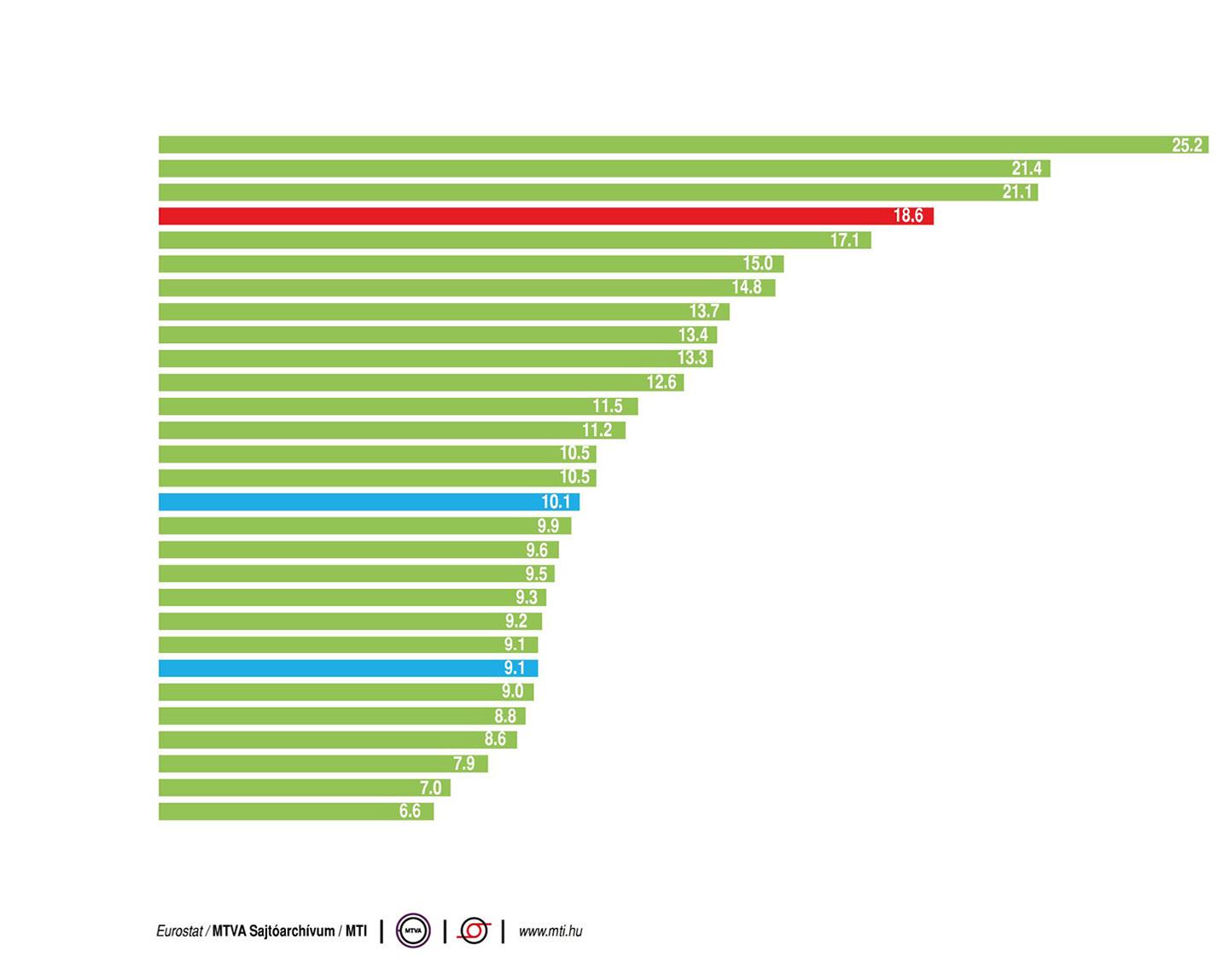
Hungarian inflation is expected to increase further in the coming months due to the weak forint exchange rate, record-high energy prices on the world market, poor harvests, and changes in official energy prices above average consumption, the analyst said.
The rate of inflation climbed above 10% in the European Union, with Hungary among those countries way above the EU average. In August, the consumer price index in Hungary accelerated to 15.6%, up from 13.7% in July, breaking another 24-year record.
The rising price pressure is reflected in the fact that core inflation jumped sharply to 19%, far exceeding expectations. The surprise was caused by the higher-than-expected increase in food prices and other consumer goods and services.
Due to inflation that is much higher than expected, the substantial weakening of the forint, the public health product tax, and the increase in the excise tax on tobacco products and alcoholic beverages, continued repricing due to the sharp increase of raw materials and energy costs in many product lines, and the partial lifting of the freeze on household energy prices, Takarékbank is raising average inflation expectations for this year and next to 13.4% and 11.9%, said head analyst Gergely Suppan.
He added that inflation could be increased by another four or five percentage points if the price restrictions on certain foods and fuels were abolished entirely, which could have resulted in average inflation of 14.3% this year and 14% next year. Suppan added that the abolition of price restrictions could also lead to a faster decrease in inflation, albeit from a much higher level, once the price of the affected products fell.
(Subsequent to him making those comments, the government has announced the prolongation of price caps until the beginning of next year.)
Permanent Inflation?
It was necessary to start the interest rate hike cycle due to the high inflation that, increasingly, seems to be permanent. In addition, the secondary effects of raw material and energy prices also represent an upward risk, together with the exploding demand after the reopening, with which supplies struggled to keep pace, Suppan said. Wages are also expected to jump significantly due to the labor shortage; all this leads to an increase in inflation expectations, meaning the National Bank of Hungary will continue the interest rate hike cycle.
Surging gas and electricity prices appear in many sectors and almost all industrial processes, from bakery goods and catering to fertilizers for food production, to the chemical industry, metal processing, and construction material production, also causing significant price increases.
In the coming months, due to repricing, tax increases, and the partial removal of the freeze on household energy prices, inflation will continue to rise significantly, which could reach 22% without the price-limiting measures and would exceed 25% without the freeze on household energy
prices below average consumption. The maintenance of price restrictions preceded a significant price shock, the analyst noted.
Although inflation in August accelerated to 15.6% from 13.7% in the previous month, it developed more favorably than the market consensus had predicted, commented Századvég analyst Gábor Regős.
The monthly inflation actually decreased from 2.3% in July to 1.8% in August, which is still a significant value, but, considering the tax increases in August, it was not a surprise, he said.
Factors at Play
At the same time, the lower value in August means that the effect of the tax increases was already partly visible in the July data. In addition, the high level of inflation, as in the previous months, is primarily caused by soaring energy prices, but the weak forint exchange rate, the disruption of supply chains due to the war, and, increasingly, the very poor harvest due to the drought also play a role.

Compared to the previous month, inflation accelerated for all product groups. The currency deterioration is the biggest concern in the case of foodstuffs, where prices rose by an average of 30.9% year-on-year after a 27% increase in the previous month.
The second most significant growth, 14.8%, was measured for consumer
In the coming months, due to repricing, tax increases, and the partial removal of the freeze on household energy prices, inflation will continue to rise significantly, which could reach 22% without the price-limiting measures and would exceed 25% without the freeze on household energy prices below average consumption.
The stabilization of the energy market and the strengthening of the forint are necessary for inflationary processes to become more favorable. Accordingly, the central bank must further tighten monetary policy, meaning the base interest rate may continue to rise in September, Regős concluded.
Numbers to Watch in the Coming Weeks
The Central Statistical Office will release the August data for Hungary’s industrial production on October 6. On the same day, August retail trade figures will be published. In the meantime, the Monetary Council of the National Bank of Hungary will hold its next rate-setting meeting on September 27.
Consumer prices in Hungary are rising at a nearly unprecedented pace, and, according to analysts, there is no turning point visible on the immediate horizon.
ZSÓFIA CZIFRA
www.bbj.hu Budapest Business Journal | September 23 – October 6, 20221News •
Estonia Latvia Lithuania Hungary Czech Rep. Bulgaria Poland The Netherlands Slovakia Romania Croatia Slovenia Greece Spain Belgium EU average Denmark Cyprus Sweden Portugal Austria Italy Euro area average Ireland Germany Luxembourg Finland Malta France
Source:
Szijjártó Calls Russian gas cap ’Absurd’, Wants Focus on Peace
government support for the regulated gas and electricity prices amounted to a monthly HUF 150,000 per household.
Crisis
Assembly not as some kind of narrative contest but to achieve peace.”
According to a survey by Századvég Foundation, some 86% of Hungarians would prefer Ukraine and Russia to sit down for talks to end the war instead of imposing sanctions on Russia. Some 50% of respondents said the sanctions currently in force against Russia were “over the top,” another 25% saw them as “adequate,” with no need for further measures, while 20% considered sanctions not stringent enough.
“This is not a prediction; this is a statement of fact,” Orbán said in the post on September 10. “There will be gas and enough electricity in Hungary.”
Consequently, Hungary’s government decided to mandate a 25% reduction in gas consumption at state institutions, barring hospitals and nursing homes, and state-owned companies, the PM’s chief of staff Gergely Gulyás said, according to state news agency MTI.
He added that the government could maintain the regulated utilities price system for households, up to average consumption, calling on consumers to keep their gas and electricity use “within reason.” Gulyás added that
After a meeting of European Union energy ministers in Brussels on September 9, Minister of Foreign Affairs and Trade Péter Szijjártó said the European Commission’s proposal to put a price cap on Russian gas delivered to Europe was “absurd.”
He added that the proposed cap would raise prices and put Hungary’s energy supply at risk, emphasizing that gas accounts for 40% of the country’s energy consumption. He said that nine member states were opposed to or had expressed reservations concerning the gas price cap at the meeting. Szijjártó added that Hungary has enough gas in reserves to cover 38% of consumption, well above the 22% average ratio for the EU.
Make Peace the Priority
Later, at the United Nations General Assembly (UNGA) in New York, Szijjártó said peace should be the main topic of discussion, according to a video message posted on Facebook on September 20. Szijjártó said fellow EU foreign ministers had earlier discussed how to change the global perspective that the impact of sanctions is more significant than the effect of the war itself.
“I think this is a waste of time, and we finally have to focus on peace,” he said. “We have to use the UN General
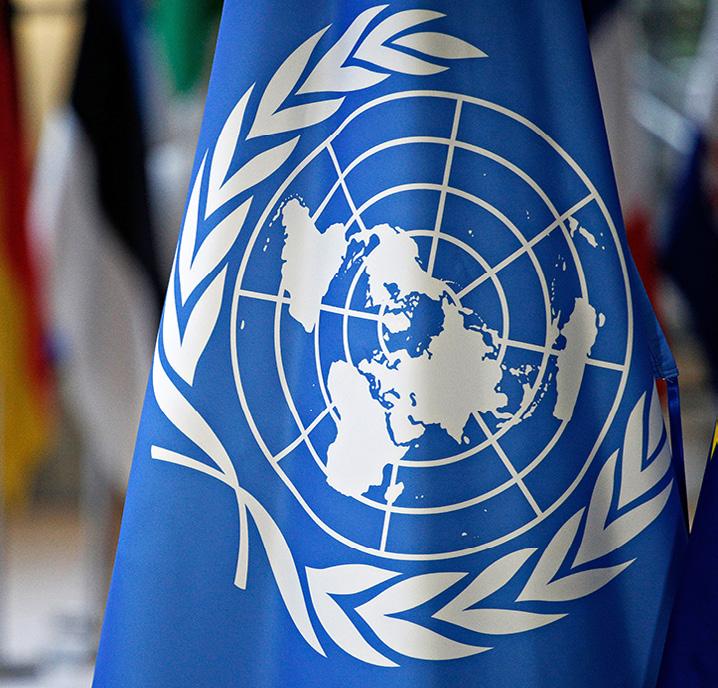
ITR Names Andersen Tax Firm of the Year in Hungary Again
According to the prestigious International Tax Review, Andersen was again the best performing Hungarian tax advisor this year. For the second year in a row, the firm has earned the highest professional accolade of the year, while also collecting the Indirect Tax Firm of the Year award.
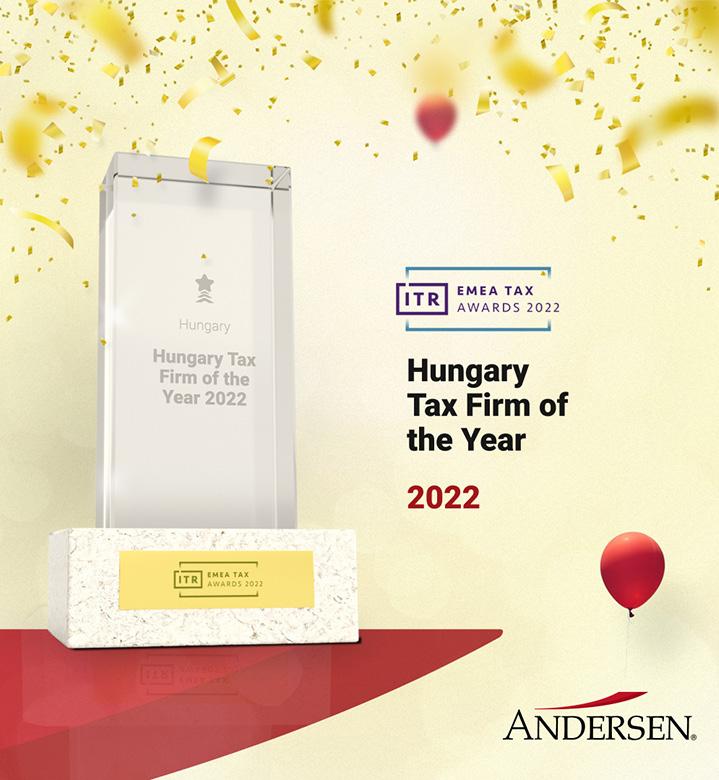
Founded in 1989, the International Tax Review (ITR), one of the world’s leading tax journals, has awarded Europe’s best tax advisory service companies for the 18th time. A jury of ITR’s editors and experts ranked the candidates’ performances in several categories based on the volume and complexity of the tasks they had completed during the period, the innovative nature of their implementation, and feedback from clients.
To win the ITR EMEA Tax Award 2022 / Hungary Tax Firm of the Year title, Andersen beat off competition from Deloitte, DLA Piper, Ernst & Young, and WTS.
This year, ITR judged Hungarian tax advisory firms in the top “Tax Firm of the Year” category and three others: transfer pricing, indirect taxation, and tax litigation. Andersen ranked among the best in all of them, a feat only matched by Deloitte. In Hungary, the jury also awarded the title of Hungary Indirect Tax Firm of the Year to the firm to Andersen.
ITR ranked the overall performance of Andersen’s offices in the top five in the field of indirect taxation (mainly VAT) at the European level. This demonstrates that Andersen’s Hungarian VAT advisory department is backed by a powerful
international network that can offer clients the best solutions to crossborder VAT problems.
Rising Star
The ITR also recognized the outstanding work of Bence Barta, head of the firm’s VAT service line, by making him one of the seven European tax advisers nominated for the Indirect Tax Rising Star title in 2022. This is a considerable achievement, not least because this was the only category in which a
Incidentally, the proportion of Hungarians who believe the attack to be an act of Russian aggression has increased to 63% in August, from a dip of 56% in April, according to research by the Publicus Institute.
After an informal meeting of EU finance ministers in Prague on September 9, Minister of Finance Mihály Varga said Hungary would support European Union financial assistance for Ukraine.
At the meeting on Friday, the ministers committed to transferring a further EUR 5 billion in so-called macro-financial assistance (MFA) loans as the second part of an exceptional MFA package of up to EUR 9 bln endorsed by the European Council early in the year, according to a statement from the Ministry of Finance.
Hungarian tax advisor was nominated at all out of the 76 candidates.
According to Károly Radnai, managing partner of Andersen in Hungary, the brand’s performance and success in Hungary are reflected not only in the business results of the past period but also in the number of nominations and professional awards it has received.
“Winning the most prestigious international award in the tax profession last year was not just a one-off flash in the pan. By being named the best Hungarian tax advisory firm by ITR for two consecutive years, we have proven that we are able to maintain this high level of professionalism in our work. In all segments of the tax advisory work, in all areas of expertise, we are a serious competitor to the biggest players, as the Indirect Tax Firm of the Year award confirms,” said Radnai.
Andersen in Hungary is the fifth largest player in the Hungarian consulting market. The Budapestbased tax advisory and law firm currently employs nearly 100 people. In 2021, it increased its revenues by 20%, well above the average annual growth target of 14-15% set by the company’s management. Andersen is catching up with the Big Four advisory firms faster than expected.
Further information: info@hu.Andersen.com +36 703 174 146
Although countries across Europe face energy supply crunches as the temperature drops with the changing season, Prime Minister Viktor Orbán said that Hungary “won’t have a shortage of energy,” according to his Facebook page.
NICHOLAS PONGRATZ
Photo by Alexandros Michailidis / Shutterstock.com
4 | 1 News www.bbj.hu Budapest Business Journal | September 23 – October 6, 2022
Roundup
Ukraine PRESENTED CONTENT
GARY J. MORRELL
The Maglód and Fót developments in the Greater Budapest area, which opened earlier this year, are the first industrial buildings in Hungary to achieve Breeam “Excellent” certification in the New Construction category.
A HelloParks megapark in Páty (20 km west of central Budapest) is also being developed. The company, established almost two years ago, plans to deliver two further projects this year. As a result, the total gross leasable area offered by the HelloParks portfolio will increase to 160,000 sqm by the end of the year, representing a total investment of EUR 190 million.
In January, the first 46,000 sqm building of HelloParks Maglód (MG1) received its occupancy permit, followed by the handover of the first
46,000 sqm phase of HelloParks Fót (FT1) in June. This latter hall reached maximum
occupancy less than two months after its handover.
The facilities are operated by a sustainable, smart building management system and Internet of Things technology solutions. The first building at the Maglód megapark has been occupied by FoxPost, Bútor1, Quehenberger, Karzol-Trans, and Esdwork, while the tenants at Fót include HTNS, Expert, K&V, and Seojin Auto Hungary.
The new halls have achieved very high sustainability standards in terms of technology, ergonomic design, environmental impact, and energy management, as well as operation and management of the entire development process, according to HelloParks.
The buildings provide smart ready lights in common areas, expandable solar panels on the rooftops, electric car chargers in the parking lots, and energy-efficient mechanical systems in the buildings.
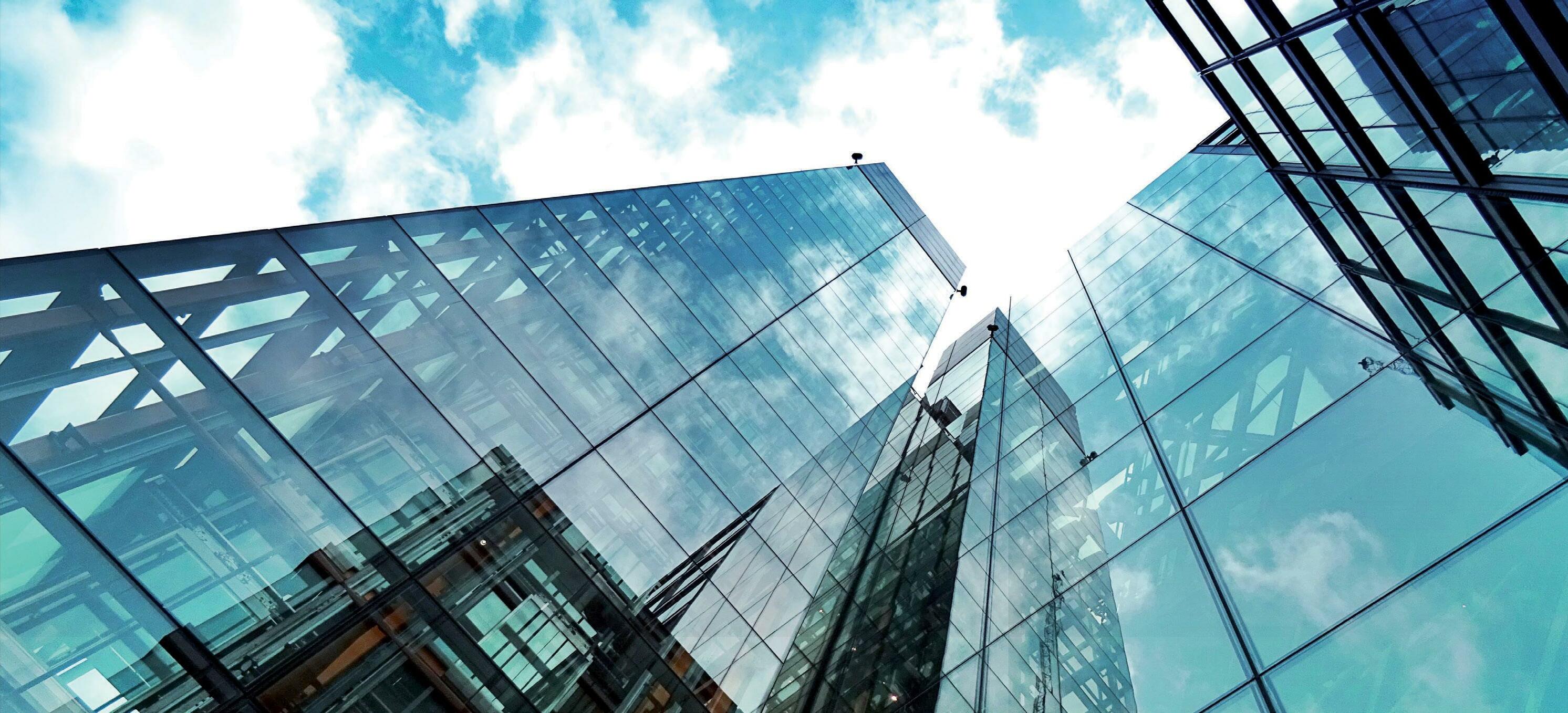
Tenant App
Tenants can manage their energy consumption via the HelloParks mobile app. This means they can monitor their utility consumption and adjust heating, ventilation, and lighting settings from anywhere. They can also create time schedules and check whether all lights are turned off.
“There is still a strong market demand for environmentally friendly, energyefficient and smart industrial and warehouse centers, which is confirmed by the significant demand for HelloParks Maglód and HelloParks Fót,” says Rudolf Nemes, CEO of HelloParks.
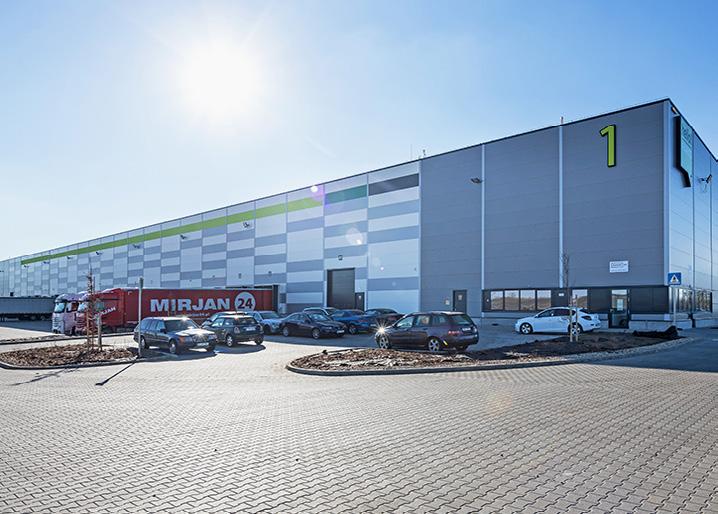
“Our projects are being developed at full capacity; that enables our megaparks to meet a wider range of needs and requirements. The upcoming phases, which will be handed over
this year, are also going to be groundbreaking in the industry,” he adds.
Preparations are underway for the second 45,000 sqm hall (MG3) at Maglód, and it is expected to be ready for occupation in the last quarter of 2022. With the new facility, HelloParks is already aiming to achieve an “Outstanding” Breeam New Construction rating, which is achieved by less than
3%
of buildings worldwide.
Construction work on the next 26,000 sqm hall at Fót (FT6), also aiming for that “Outstanding” certification, started in April on the 76-hectare site. The building reached structural completion at the beginning of July, and the first tenants will be able to move in at the end of the year.
At the same time, the final phase of earthworks, soil stabilization, and bedding preparation is currently underway at the first HelloParks Páty building; structural works will start soon. The initial hall on the more than 100 hectares of land will be 58,000 sqm. It is the beginning of what will eventually be 400,000 sqm of total gross leasable area.
Across HelloParks’ three current locations, it is working on the development of more than 900,000 sqm of warehouse and industrial space on a total of 222 hectares. The combined investment value of the ongoing projects is close to EUR 200 mln.
HelloParks warehouse.
1 News | 5www.bbj.hu Budapest Business Journal | September 23 – October 6, 2022
The first two warehouses developed by the industrial developer HelloParks, part of the Futureal Group, are now 100% occupied after just a few months, according to the developer. First HelloParks Industrial Halls Fully Occupied ADVERTISEMENT
EACH AGENCY INDEPENDENTLY OWNED AND OPERATED. Franchisee: T-SOLUZIONI ZRT., H-1054 Budapest, Szabadság tér 7. +36-30-591-7998 SPACE FOR YOUR BUSINESS
in BriefNews
Government Extends Food, Fuel Price Caps
Hungary’s government has decided to extend price caps on staple foods and motor fuel, Gergely Gulyás, the head of the Prime Minister’s Office, said at a press briefing during a cabinet meeting break on September 17, according to a report by news agency MTI.
The government rolled back prices for a number of staples, including pork, cooking oil, and flour, to mid-October levels from February 1 in an effort to dampen inflation.
The government has also capped prices at the pump at HUF 480/liter for both gasoline and diesel since November 15, 2021.
Vehicles with foreign number plates were earlier excluded from the measure, and from late July, corporate vehicles registered in Hungary also became ineligible.
The food and fuel price caps, which were set to expire on October 1, will be extended until the end of 2022, Minister of Economic Development Márton Nagy told the press briefing. He added that a freeze on mortgage rates would be extended by another six months until the end of June 2023.
Nagy said he had also supported the extension of the price caps, even though he continued to consider them “abnormal market intervention,” albeit under “abnormal market circumstances.” He added that the National
Bank of Hungary (MNB) augurs a continued rise in CPI in the coming months, with inflation expected to decline only in 2023.
Gulyás said the extension of the price caps is justified by the “extraordinary situation” for which there is “no realistic chance” of improvement as long as sanctions against Russia, which have driven up energy prices, remain in place.
He added that Hungarian households will continue to pay regulated prices for gas and electricity, up to average consumption levels, saving them HUF 150,000-180,000 a month.
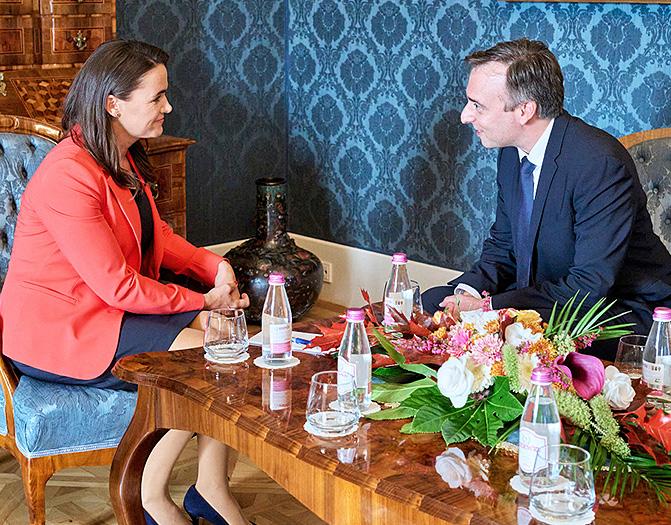
Majority of Companies Experienced Financial Difficulties in July
Some 44% of company managers did not find it challenging to meet their company’s financial obligations. In comparison, 56% experienced various difficulties and are less optimistic about the next half-year, the Economic and Entrepreneurial Research Institute (GVI) of the Hungarian Chamber of Commerce and Industry announced, according to hrportal.hu.
In July 2022, GVI asked 350 domestic businesses employing at least 20 people about their financial situation, including their ability to fulfill their financial obligations, their financial difficulties, and the level of their reserves.
U.S. Ambassador Presents Credentials to President Novák
U.S. Ambassador to Hungary David Pressman presented his Letter of Credence to President of Hungary Katalin Novák at the Sándor Palace in Budapest on September 14. The Ambassador was accompanied by his partner Daniel Basila, their children, and Acting Deputy Chief of Mission Derek Westfall.
During their discussion in the Blue Salon, Pressman expressed to Novák the significance of the long-standing relationship between the United States and Hungary, particularly as European and global security is under attack as a result of Russia’s unprovoked war against Ukraine. Pressman noted their productive conversation, saying the two discussed the need to strengthen the U.S.-Hungary relationship.
“In these complicated times, with a land war in Europe, it is more important than ever for our two countries to be united in opposing Russian aggression and working
According to the survey, the most significant economic problem for most businesses in the months leading up to July 2022 was the exchange rate loss, the payment of raw materials, and the payment of energy carriers.
Growth and Market Expansion at Sixt: Flexibility and Quick Reaction are Key
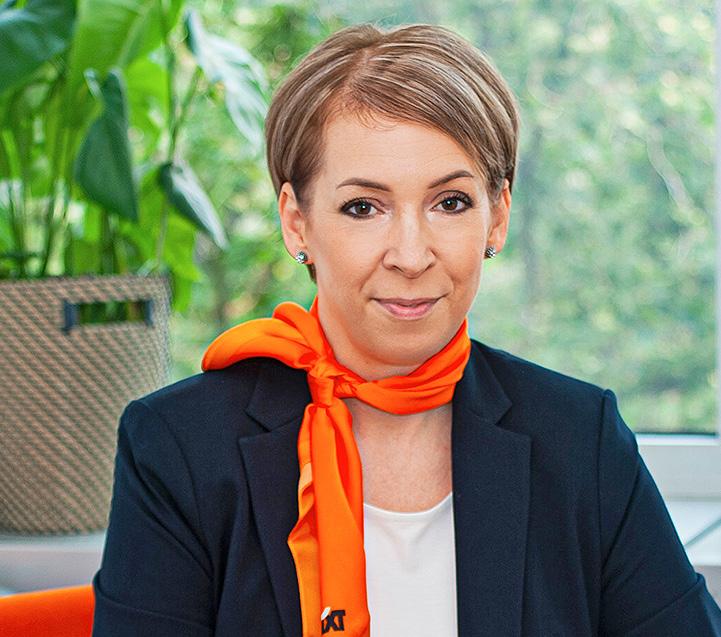
together to advance regional and international security on the basis of fundamental transatlantic values,” he said.
After departing the Sándor Palace, Pressman traveled to Heroes’ Square, where he laid a wreath at the Monument of Hungarian Heroes. After laying the wreath, the ambassador noted the significance of honoring the bravery and loyalty of Hungarians, long-time allies, and friends of the United States and its people.
The GVI research showed that company managers judged the level of financial reserves for the first half of 2022 to be more favorable in retrospect than what is likely for the next half of the year.
Of course, car rental costs can be calculated in the same way as for an operating lease, but car rental is a much more flexible solution for companies, as the vehicle can be returned to the rental company at any time, and the type of vehicle can be changed without any restrictions. The current inflation crisis also means that flexible rental solutions are more predictable, transparent, and convenient for our rental customers than fixed four- or five-year leasing solutions, which represent a significant commitment for companies.
Why Sixt?
Company Fleet Delayed? Sixt Offers Solution
The difficulties in the new auto market are also reflected in company car purchases. In many cases, employees entitled to use a company car must wait much longer than usual, sometimes even up to a year. This has prompted Sixt to adapt as quickly as possible to the changing environment and to develop a service that helps all companies waiting for a car.
For companies that want to maintain their own fleet despite the difficulties indicated above, Sixt offers flexible rental options until the arrival of new cars,
whether a temporary rental of one or two vehicles or a fleet of significantly more cars.
This type of rental arrangement is not new to Sixt: a significant part of the rental fleet has been booked by corporate partners for shorter or longer periods in the past. In the current situation, we see an increasing demand for rental cars due to the difficulties in car production and the ongoing delays.
We also intended to target the corporate segment, so we launched a website for business partners in June.
On www.sixtbusiness.hu, one can find more information about our business rental schemes, Sixt’s fleet available
at any given time, photos, videos, trim level lists, and a lot of helpful information to enable prospective rental customers to choose the best vehicle for them.
Car Rental vs. Leasing
Car rental is a highly flexible service: you can get into the car of your choice straight away and use it both at home and abroad. If the rental customer’s needs or living situation change, they can switch to another model at any time, be it a car, a van, or even a light commercial vehicle. The rental period is adapted to the customer’s individual needs, and the car user pays the rental fee accordingly.
We offer nearly 40 different models in more than 30 categories in our fleet, most of which have high trim levels and were acquired in 2022. We are proud that we could respond quickly and flexibly to difficult circumstances, thanks to which we won the Business Excellence Award in the Mobility Service category last year.
This flexibility and customer focus are also reflected in our corporate rental offers, which is why we look forward to becoming a mobility partner for more and more companies. We aim to ensure that once people have tried this type of long-term car rental, they will realize the potential and stop thinking about fixed, leased fleets only.
Before the pandemic, the dominant source of our income was generated by foreign leisure and business visitors. The customer portfolio also included domestic corporate customers with long- and short-term car rental schemes, but their importance has increased recently, and not only due to the pandemic-related restrictions.
Rita Szolnoki, Head of B2B Business Unit, Sixt Hungary.
Photo by Office of the President
6 | 1 News www.bbj.hu Budapest Business Journal | September 23 – October 6, 2022
PROMOTION
PwC Hungary Picks Tourism Advisory Team Head
PwC Hungary has announced the appointment of Bálint Rippert as the head of its tourism advisory team, effective from August 1.
The expert previously worked at the Hungarian Tourism Agency, which he joined in 2016. There, he was involved in several key projects, such as developing the National Tourism Development Strategy 2030. He also contributed to developing and implementing the National Tourism Data Supply Center. Earlier in his career, he gained project management experience in public administration and e-learning development.
PwC says that the new tourism advisory team leader’s main objective is to promote the market entry and successful operation of Hungarian tourism service providers and tourist attractions and to build
based in Budapest and report to Kim Ruymbeke, president of the Eastern Europe Region at UPS.
has recently made several significant investments in its healthcare business in the country, offering faster delivery times and greater flexibility to its customers in existing and new healthcare markets.
In addition, the company has renewed and expanded its UPS Premier service portfolio to deliver time-sensitive, highvalue items in Hungary and says it now offers three levels of flexibility to meet customers’ needs in different industries.
Fresh Director of Sales at Matild Palace
Viktória Berényi took over as the director of sales of Matild Palace in August, the establishment told the Budapest Business Journal
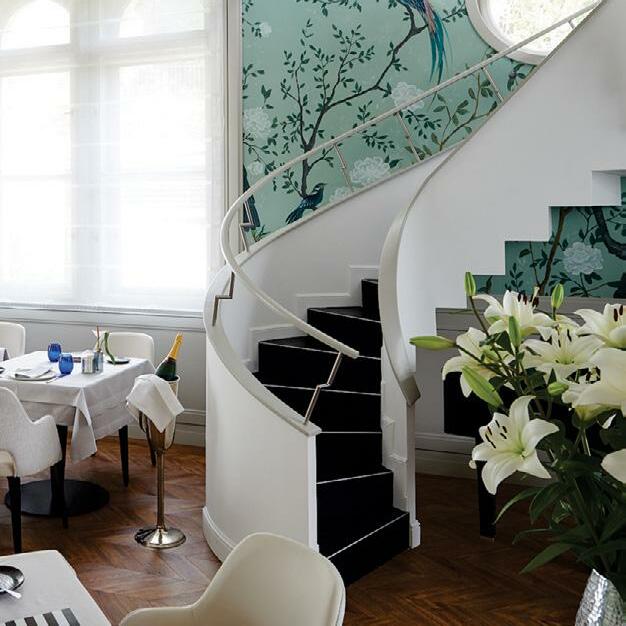
The new manager will be responsible for parcel operations in logistics markets that are among the fastest-growing in Europe. She is tasked with ensuring that the growing demand for e-commerce is met and that the countries under her leadership are better connected to other key export markets, both in Europe and worldwide.
“Throughout my professional life, I have accepted many challenges in different positions, both inside and outside my workplace. I have worked hard to remain ‘constructively dissatisfied’ and never believe that I have achieved perfection in anything,”
Constantinescu says.
To achieve the sales goals of the hotel, Berényi supervises and coordinates the sales team’s work daily while also ensuring training. As director of sales, she plays a crucial role in the preparation and implementation of strategies for the development of the company, Matild Palace says.
Fluent in English, Berényi previously gained extensive experience as the sales and events director of Corinthia Hotel Budapest and later held the position of business development director of Mistery Hotel Budapest.
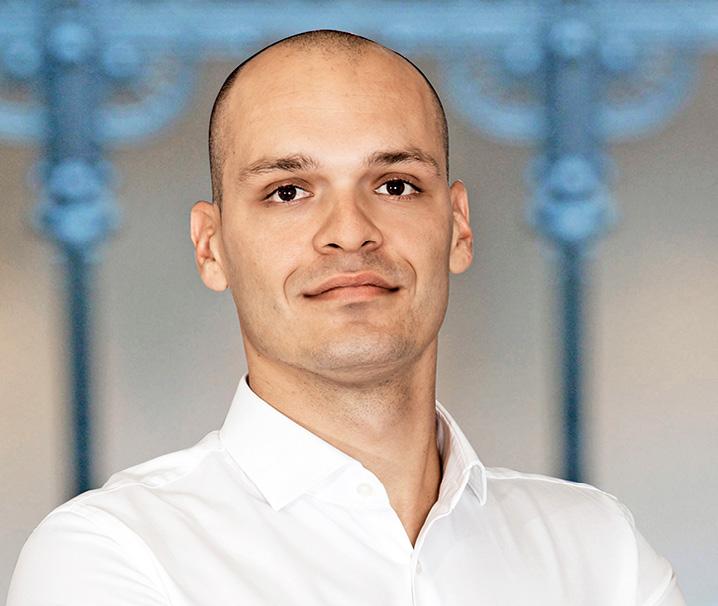
further strengthen its market position among both foreign and domestic guests,” the hotel management said.
Gresham Palace Names Hotel Manager
Four Seasons Hotel Gresham Palace Budapest has announced that Federico Giovine has been named the new hotel manager.
effective partnerships within the sector. Rippert said he considers it important for PwC Hungary’s tourism advisory team to become a regional player and support tourism development in Hungary and other European countries in international projects.
UPS Appoints Regional Director
UPS has appointed Daniela Constantinescu as the country director for its subsidiaries in Hungary, Greece, Romania, and Slovenia (HUGRROSI region). Constantinescu will be

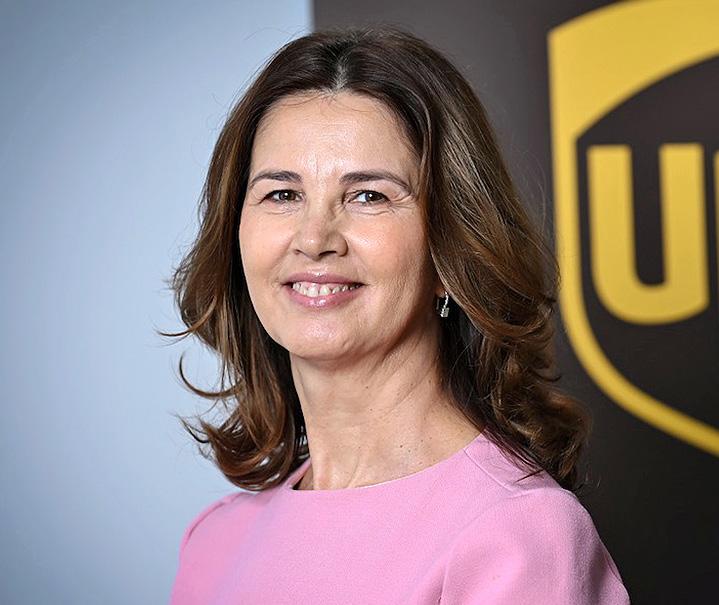
“I look forward to working to help businesses in these countries to exploit the opportunities of international trade better. Our smart, global logistics network means easier access to global markets and sustainable business growth, especially for small- and medium-sized enterprises,” she adds.
The director has more than 20 years of experience in finance and accounting. She started working for UPS in 2007 as head of finance and accounting for the company’s Romanian subsidiary and later held several other management positions. She was also previously responsible for the company’s financial operations in Hungary for one and a half years.
Hungary and the region play a significant role in UPS’s intensive global growth strategy. The company
“As a dedicated employee and based on her successes so far, the appointment of Viktória Berényi will greatly contribute to the achievement of the objectives of Matild Palace. We believe that by leading our sales team, she will contribute to Matild Palace continuing to maintain and
Giovine started his career in 2005 as a phone operator at Four Seasons Hotel Buenos Aires. Most recently, he held the position of senior director of rooms at Four Seasons Resorts at Jumeriah Beach and Dubai Financial Center.
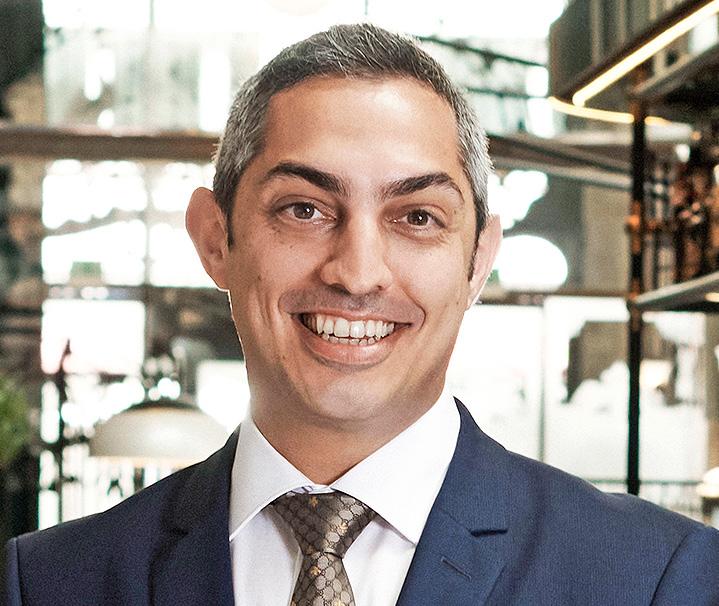
“I’m honored to be appointed as hotel manager of Gresham Palace, and I can’t wait to discover the city. Every destination and every property has its own unique history and traditions; I’m looking forward to learning about the Gresham Palace and its team and supporting them in continuing a successful journey,” Giovine said.
“Four Seasons provides the right environment for growth. What we are, and what differentiates us, is our culture, our people. It is the real asset we have. If we are able to create a true sense of belonging in our teams, raising the bar is a lot more feasible, fun, and exciting,” he adds.
Born in Buenos Aires, Giovine speaks Spanish, Portuguese, English, and French. He holds a bachelor’s degree in international relations and political sciences from UBA Universidad de Buenos Aires.
Yves Giacometti remains the Gresham’s general manager and a regional vice president.
 Bálint Rippert
Daniela Constantinescu
Viktória Berényi
Federico Giovine
Bálint Rippert
Daniela Constantinescu
Viktória Berényi
Federico Giovine
1 News | 7www.bbj.hu Budapest Business Journal | September 23 – October 6, 2022
MEET THE EXCLUSIVE BR HPOBOESTAURANT INARISARK WITH SECTION ROOMS FOR BUSINESS MEETINGS PRIVATE PARKING OPEN EVERY DAY 1022Budapest,Marczibányitér6-7. @bobobudapest +36 70 77 22 665 @boborestaurant_bp Bobo_Meet_252x77mm Monday, September 19, 2022 7:59:20 PM Composite 150 lpiADVERTISEMENT WHO’S NEWS Do you know someone on the move? Send information to news@bbj.hu
Ryanair’s O’Leary: Hungarians Suffer From ‘Idiotic’ Excessive-profits Tax
Michael O’Leary was at his clowning best for the first minute of his Budapest press conference on September 13, grimacing, gesticulating, and waving a placard for the cameras. But his message was deadly serious: “Scrap ‘excess-profits’ tax on loss-making airlines.”
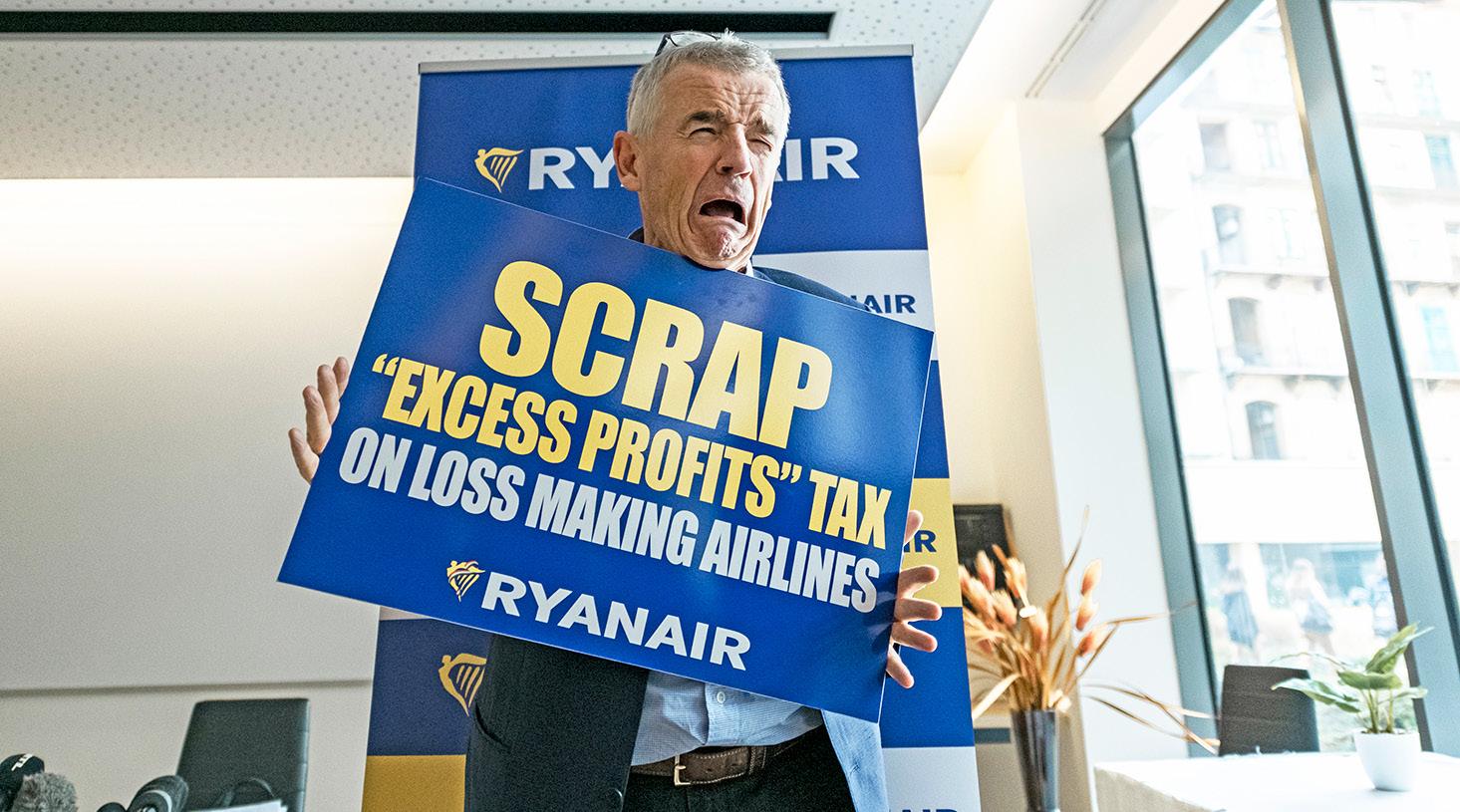 KESTER EDDY
KESTER EDDY
“I’m sorry that today we don’t have good news,” the Ryanair chief executive said after his PR antics were over.
The Dublin-based low-cost carrier had planned to launch its “biggest ever” winter schedule from the Hungarian capital this winter, with 10 new destinations and another aircraft at Budapest airport.
“Sadly, however, those plans have now fallen at the altar of the Hungarian government’s decision to impose a ludicrous and idiotic “excess-profits” tax on an airline sector which is reporting record losses,” O’Leary lamented.
Instead, Ryanair would be reducing the destinations served from Budapest from 53 to 45 from October 1 while reducing the frequencies on another seven. (See box for more on this.)
He said that the carrier’s passenger numbers using Budapest are set to fall to a “little below four million” this year against the 4.5 million expected earlier and 5 million in 2023.
The “excess-profits” tax referred to by O’Leary is the government-imposed charges on airport handling companies, effective from July 1, of HUF 3,900 for passengers traveling to European destinations and HUF 9,750 for those heading outside the continent. O’Leary said these had “inevitably” been passed on to the airlines.
The Irish CEO stressed that Ryanair “respected the right” of the Hungarian government to impose an “excess-profits” tax on sectors, such as oil and gas, “which are making excess profits.”
However, “what we don’t understand is how you can levy an excess-profit tax on the airline sector, which has been reporting record losses over the last two
years because of air travel being shut down by COVID-19 and the impact of Putin’s invasion of Ukraine,” he argued.
As a result of the restrictions, Ryanair had reported losses for those two consecutive years, an unprecedented performance in the last 30 years of the budget carrier’s existence.
As an upshot of the new levies, Ryanair, in turn, had “no choice” but to increase ticket prices, including those who had already booked flights to and
from Budapest before the taxes were announced in early June. (The carrier promised to refund the earlier fare in full if passengers opted not to pay the increase. Ryanair said earlier that only 3% of passengers had opted for the refund.)
This latter move had created another “minor dispute” with the Hungarian authorities, resulting in the Consumer Protection Authority issuing a fine of HUF 300 million on the carrier. Ryanair has appealed the fine, even though O’Leary is confident it will lose in Hungary. He pledged to take the case to the European court if necessary.
“We have politely pointed out to the Hungarian government that under EU regulations, the airlines are free to price our services as we see fit, and since we’re making record losses, we cannot afford to pay an excess-profit tax,” he said, adding that this would hit “Hungarians, Hungarian families and Hungarian tourism” most of all.
The additional aircraft originally planned to be based in Budapest would instead be located in a neighboring country.
“Hungary, as a result [of the new tax], has become a much more expensive destination this winter. At a time when neighboring countries like Austria, Slovenia, Slovakia and Romania, are cutting costs to try to recover their preCOVID tourism traffic, Hungary is going the other way and making itself more expensive,” O’Leary claimed.
While Ryanair had hedged its fuel prices up to next spring, he said fares would have to rise “by about EUR 5” next year to cover increased kerosene prices into 2023-24.
On the positive side, the carrier did not intend to close its base in Budapest, having “worked too hard to open it,” though the company would reconsider its plans next spring and could not rule out more cutbacks, he warned.
Ryanair Routes Affected Serving Budapest
Eight canceled routes: Bordeaux, Bournemouth, Cologne, Krakow, Kaunas, Lappeenranta, Riga, and Turin. Six routes at reduced frequencies: Amman, Bristol, Prague, Pisa, Sofia, and Warsaw. Michael O’Leary stated seven routes would be
affected in his press conference, but in an email to the BBJ , Ryanair only listed six. When asked to clarify, Ryanair failed to answer. Some Hungarian media outlets listed Tel Aviv as the seventh route affected.
Michael O’Leary on Ryanair’s PR, Tax policy, Brexit and Politicians
After the main press conference, the BudapestBusinessJournal sat down with the former Irish accountant, who sometimes can’t resist a little hyperbole.
BBJ: Didn’t you launch an ‘Always Getting Better’ program some time ago?
Michael O’Leary: That was a long time ago!
BBJ: But you’re not getting better now in the eyes of the Hungarian public.
MO: What?! People are selling their firstborn child to be able to get on a Ryanair aircraft in Budapest airport. They’re desperately trying to get off expensive Wizz and EasyJet flights.
BBJ: But what about the Hungarian government [and its budget deficit]?
MO: If you really want to levy an excess profit tax, levy it on an industry that is making excess profits.
BBJ: What have been the main effects of Brexit? Has it reduced demand for flights between Central Europe and the United Kingdom?
MO: Brexit has been very damaging to the U.K. economy generally. I think, generally, non-British people in the U.K., the Irish, Romanians and Poles, felt less welcome. But there has also been a dramatic recovery in the economies of Poland and Romania. Lots of people left the U.K. as a combination of Brexit and COVID, went back home, and have now got jobs at home where
essentially you have full employment, and they don’t want to go back to the U.K.
The U.K. economy is really struggling for labor in retail, hospitality, agriculture. It is going to do very badly for the next year or two, not so much because of Brexit [per se], the British were free to choose to leave the EU, but they should have left with a free trade deal with the Union.
It was Johnson and the other idiots who he appointed to his cabinet, and they insisted on the hardest possible post-Brexit deal, which has been very damaging to the U.K. economy. And it will continue to be damaging until Liz Truss or whoever comes after works out that you can have Brexit, but at least let’s have the greatest amount of freedom of movement of labor and capital between
the U.K. and the European Union. That’s the only way to deliver Brexit. Leave the EU if you want, but for [expletive]’s sake, negotiate a proper free trade deal which allows people to move freely between the U.K. and the EU.
BBJ: Do you have a politicians’ idiot ranking? MO: [Laughs.] Top of the tree would be [expletive] Johnson and anybody in the ERG [the pro-Brexit European Research Group] voting for a hard Brexit. The Hungarian company would come a close second. No, actually, third now, because the Dutch government will have leapfrogged them with their EUR 30 environmental tax from January 1. Look, most politicians are idiots; you have to be an idiot to be a politician in the first place.
Michael O'Leary, CEO of Ryanair, makes a point ahead of his Budapest press conference.
www.bbj.hu Budapest Business Journal | September 23 – October 6, 2022
2 Business
Multiple Challenges Changing the way Real Estate Market Operates
For anyone who wasn’t also working during the energy crisis of the 1970s, this must be the most challenging time to do business, regardless of the sector. That is certainly the case for real estate, and is prompting a different approach, says Mátyás Gereben, country manager of CPI Hungary.
“What we are trying to figure out is whether there an option to have a proportion of this energy product, let’s assume 60-70%, coming from resources where you can determine at least a price range, or a close estimation, or, hopefully, a direct price.”
Energy Resources
“We’re not focusing only on asset management, we’re not focusing only on a physical portfolio strategy. We’re focusing on how we will be able to sustain operations at a company that is in contact with 1,000-plus tenants and providing not only physical space but energy solutions, sustainability solutions, community solutions,” he explains.
“We’re not [just] providing physical space; we’re providing services related to how companies can maximize their know-how and their profit based on combining all these elements in their business.”
There is a multitude of challenges out there, from simply keeping tenants happy to finding construction staff, costing office fit out, and building a sustainable and ESG-compliant business. We cover all in a wideranging interview, but energy is perhaps the most pressing concern.
“What is clear is that energy as a product does not exist anymore, or at least not now on the Europe market,” Gereben says. “You cannot buy fixedprice energy to have a longer-term vision. Or, let’s put it another way, to budget.”
Those concerns are driving a different approach, one that probably would not have been considered even just a few years ago.
Options being considered range from CPI having its own energy-producing resources (whether that’s solar panels on roofs or power plants within the portfolio) to a long-term relationship with alternative energy producers, as well as possibilities connected to the national grid itself, though Gereben describes that as “an evershrinking bottleneck.”
“Right now, we are in the process of creating business cases for how we’re able to put together this combination to make sure that we could become a secure energy provider, in the sense that we become a landlord where the energy-providing element is an executive option, and not a vulnerable element of the operation,” he says.
Get that right, and, presumably, it would give CPI a market advantage, I suggest. “I assume so because then you give your partners the possibility to plan ahead, to understand, and this gives certainty and security, which is probably the most needed factor in today’s business,” Gereben replies.
Energy isn’t the only headwind out there, of course. Hungary enjoys near full employment, which is another way of saying the labor market is extraordinarily tight and sourcing workforce a bottleneck across skillsets and sectors.
Changes introduced over the summer to the simplified taxation system Kata have raised fears about people leaving
the labor market or going black if companies cannot afford to take them on the payroll. Those that can take them on such freelancers may need to raise prices to cover this more expensive option. Does Gereben fear an impact in the construction sector?
“Indirectly, for sure, there is an impact. At the end of our supply chains are individuals who use this taxation. In the already difficult construction market, this will not ease the price concerns we’ve been having for a long time,” he explains.
But there is also a direct effect, which affects the critical negotiation area with new tenants. Where the focus was on rental fees or service charges, today, it is on the fit-out cost.
“Until now, we provided a turnkey solution. Today, if we were to do so, there would be no profit on that piece of office area in the five-year period for which we are signing the contract,” Gereben explains.
The result is that who provides what proportion of the fit-out fees has become “a much more difficult element of the negotiation. And this is influenced by the change of Kata, because many of the subcontractors will set the prices based on the change of the taxation system, and it will not help ease this burden,” Gereben points out.
Sustainable Pioneer
The country manager says CPI has long seen itself as a pioneer in sustainable, ESG-compliant buildings. It works to the BREEAM standard rather than LEED as the former is more European in outlook, but rather than going for WELL accreditation, he prefers to concentrate on the company’s ESG rating.

“If I say we have an ESG strategy and a strong sustainability framework, I
believe that today, it is a bigger tool in your hand and worth more than a standardized rating in any category. The goals laid down in direct action plans must be achieved jointly with our tenants and individuals,” says Gereben.
What goals does CPI’s ESG framework set out?
“It states that we want to reduce greenhouse gas production by 30% and water intensity by 10% by 2030. The group has also set a target to switch to 100% renewable energy purchases by 2024 and pays close attention to selective waste collection. Overall, we have recently aligned our targets and strategy to Paris Agreement goals,” he says.
“The sustainability framework states many other important and achievable goals, like new building materials, and whenever we’re doing fit-out, we should aim for reusable elements,” he adds.
“We have very particular goals and plan, country by country, the actual actions: what do we have to do to add to this goal, what kind of actions will be taken, who’s responsible, and what are the deadlines? There’s a very big Excel sheet behind it, and believe me, we are putting in a load of effort,” he says with a laugh.
Sustainability brings us back to the energy crisis. Does Gereben believe it will drive companies to double down on finding green alternatives or, as in the case of Germany and Poland, prompt a possible return to coal? “Both” is Gereben’s immediate answer, but overall, he says he is optimistic about his industry on two grounds.
“One is that it’s actually happening because we’re all forced to confront that. Sustainability is not a ‘nice to have’ item any longer. The mindset is changing, which is very welcome. CPI has always tried to be a trendsetter in its vision of how to be future-proof or futureconsiderate. So, yes, there is that positive change. We can always speed it up more, and that’s what we must work on.”
Gereben adds that his optimism is also built on the fact that CPI itself is growing.
“As a result of the purchase of 76.8% of Immofinanz shares, CPI Property Group became a European leader in the commercial real estate market. Its portfolio is now valued at EUR 20.9 billion. And apart from all these concerns, I work for an organization that believes in real estate and the future functionality of real estate. And I love that and share that. So, from this aspect, I am super positive.”
ROBIN MARSHALL
“We’re not [just] providing physical space; we’re providing services related to how companies can maximize their know-how and their profit based on combining all these elements in their business.”
Mátyás Gereben, country manager of CPI Hungary.
2 Business | 9www.bbj.hu Budapest Business Journal | September 23 – October 6, 2022
PRESENTED CONTENT
Dawn of a New Era: More Expensive Energy and Wages?
Psychologists say that the human brain suffers from dozens of different biases, perhaps one of the most important being “recency bias.” We tend to project the past into the future. Assuming the hypothesis in the title of this article is correct, we likely face a very different future, says corporate finance columnist Les Nemethy.
I see, this period of high cost of energy and wages as being a phase; maybe five years, maybe ten. As the saying goes, the cure for high prices is… high prices. High prices will encourage energy innovation and substitution, robotics, etc., that will, over time, shift the supply of these production factors. But brace yourselves for a few tough years before we get there.
So, let’s look at the evidence behind higher costs for energy and wages, and then we will revert back to some implications for the future.
Over the past year or two, we have already seen a huge increase in energy prices. There has been a tendency to pin this on the Russo-Ukrainian war, but the trend was under way even before that, and in my opinion, would continue even if peace were to break out in Ukraine tomorrow. The Ukraine war did, however, accentuate the trend.
Let me summarize three non-war related reasons for increasing energy prices.
Spending: There has been a dramatic diminution in capital expenditure (e.g. drilling) for oil and gas companies, caused by societal expectations that we need to progress in a “greener” direction. Politicians and philanthropic organizations, for better or worse, have put huge pressure on industry, resulting in the cancellation or rollback
of pipelines, drilling, etc. Oil and gas companies also risk being left with “stranded” assets if the switch to alternative energies were to be successful, which increases the risk of new capital expenditures.
Decision-making: Mistaken government policies (such as the shuttering of nuclear reactors in a number of countries) and poor planning (assuming alternative energy could supply adequate base load) have been a part of the problem. The U.S. Government has been haranguing European leaders for many years about the risk of dependency on Russian hydrocarbons. The Europeans turned a deaf ear.
Time Lags: The transition to alternative energies is taking longer, and is much more expensive, than most policymakers assumed. We do not have enough minerals (copper, nickel, cadmium, etc.) to switch the auto industry to all electric vehicles in the coming decade or two.
Grossly oversimplifying, we have fallen between two stools. Don’t let the temporary and minor fall in oil prices fool you. While I am sympathetic to environmental considerations, we have neglected tried and proven fossil fuel supplies while under-estimating the cost and time needed to transition to alternative fuels. Once again, the good news is that this may only be a temporary (five-10) year phenomenon, provided that the policy errors are reversed, and proper planning is undertaken.
There is a vast demographic trend afoot in virtually all the world except part of Africa: the number of (highly productive) baby boomers leaving the labor market exceeds the number
The Corporate Finance Column
of (relatively inexperienced and less productive) young workers coming into the market by a very wide margin. At a time when the objective is “re-shoring” (bringing the production of at least
U.S. sovereign debt is more than 10 times what it was in the late 1970s (about USD 30 trillion today, compared to USD 2 trillion back then), meaning that even a fraction of the interest rate levels achieved by 1980 would be enough to trigger a wave of defaults for sovereigns, corporates and individuals.
strategic products home) we are likely to see demand for labor increase while supply decreases, causing wages to rise. (This theme is explored further in my last two columns on the subject of demographic trends.)
High energy and labor factor costs feed into all areas of the economy. Take, for example, agriculture, which requires large amounts of both factors. High energy costs have also caused radical rises in fertilizer prices, giving farmers the choice of eliminating or reducing fertilizers (and likely reducing yields), or charging higher fertilizer costs through to the consumer. Both are highly inflationary. To a greater or
lesser degree, energy and labor costs have a similar ripple effect in just about every sector of the economy.
Today central banks are raising interest rates with a view to preventing the type of prolonged high inflation that existed in the 1970s. The difference today, depending on the country, is that there are many multiples of the level of debt compared to the 1970s. For example, U.S. sovereign debt is more than 10 times what it was in the late 1970s (about USD 30 trillion today, compared to USD 2 trillion back then), meaning that even a fraction of the interest rate levels achieved by 1980 would be enough to trigger a wave of defaults for sovereigns, corporates and individuals.
Recession or depression is likely to occur much sooner than inflation can be tamed. Something will break, and then we may well have both high inflation and recession, at which time the Fed will have little choice but to bring on the most expansionary monetary regime since World War II.
Inflation is never an accident. It is always the result of monetary and fiscal policies; unfortunately many of them were poor decisions, taken in the past. Central banks are increasingly caught between a rock and hard place.
 Les Nemethy is CEO of EuroPhoenix Financial Advisers Ltd. (www.europhoenix.com), a Central European corporate finance firm. He is a former World Banker, author of Business Exit Planning (www. businessexitplanningbook.com), and a previous president of the American Chamber of Commerce in Hungary.
Photo by xalien / Shutterstock.com
Les Nemethy is CEO of EuroPhoenix Financial Advisers Ltd. (www.europhoenix.com), a Central European corporate finance firm. He is a former World Banker, author of Business Exit Planning (www. businessexitplanningbook.com), and a previous president of the American Chamber of Commerce in Hungary.
Photo by xalien / Shutterstock.com
10 | 2 Business www.bbj.hu Budapest Business Journal | September 23 – October 6, 2022
Kempi Corvinus at 30: ‘Belonging There, not Being There’
The general manager of the Kempinski Hotel Corvinus Budapest, Stephan Interthal, talks exclusively to the Budapest Business Journal about its 30th anniversary, ‘footprints in our history,’ the COVID recovery, and using Hungarian art for marketing.
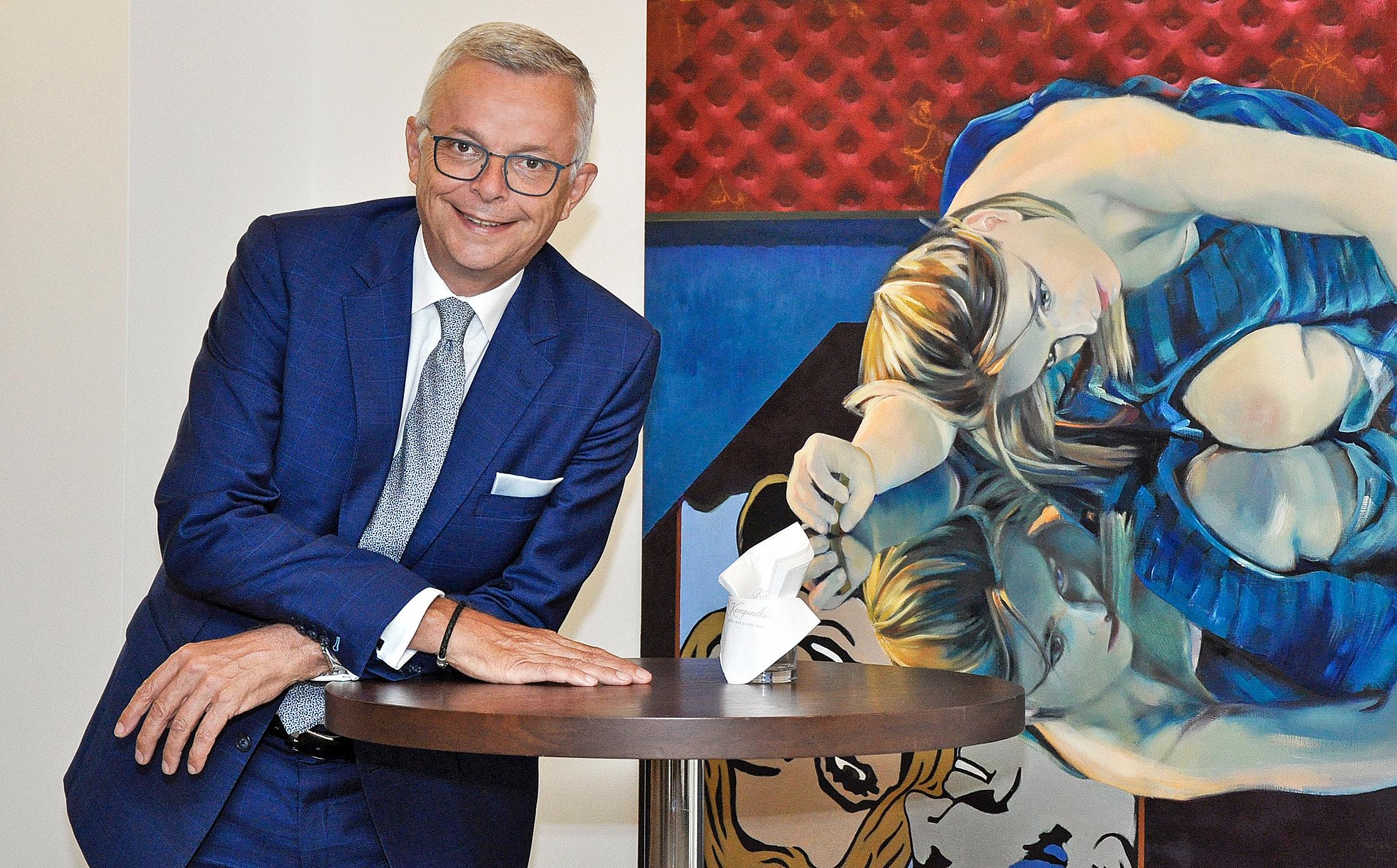
BBJ: How will you be marking the anniversary?
Stephan Interthal: The actual anniversary is September 11; this is the official opening of the hotel in 1992. We’ll mark this with the employees and their spouses at a brunch in Etyek at the Sonkamester [Restaurant]. As always, some will have to work, and we have morning and evening shifts, but I think we will have approximately 150 people coming. We have done many other activities, starting from April 5, which was the 125th anniversary of Kempinski. Our 30th anniversary celebrations will continue until the end of the year. On September 29, we are inviting our partners who have accompanied us from the beginning to an official party. Earlier that same day, my owners will be giving lunch for those employees who have been here for 30 years: we have 10. And we’re going to invite people from the former board and supervisory board, the construction, our lawyers, all those who left a footprint in our history.
BBJ: Having 10 staff who have been with you the whole time seems quite impressive.
SI: To retain these employees for so many years is really a commitment from both sides. It is the difference between being there or belonging there; we have a great sense of belonging from the employees, management, and owners.
BBJ: Is this “belonging” the secret of your enduring success?
SI: I was GM for seven years, from 19972004. And 10-and-a-half years later, the owners asked me to come back. The owners are very much aware that one part of the success of a hotel is continuous good management and ownership and having young employees mixed with senior employees. This is not something you can explain plainly, like mathematics. Besides the quality ratings and the scores we are getting, the nicest compliment is that people say this hotel has something that makes them ‘feel good.’ This makes me proud. We have
a good atmosphere and spirit among the staff, which automatically relates to the customers. We care, especially during the last two and a half years, we care big time, and eventually, it pays off. This is, I think, one of our strengths.
BBJ: How important is employee branding?
SI: I worked for 30 years for the company in different countries. We have a very good name in the employee market. This comes both from the brand and from the longterm HR policy of our hotel, how we have built relations and dealt with our employees over many years. I think the success of our rehiring and rebound and having been so successful in bringing people back is not only due to the brand but a local issue too.
BBJ: How has the hospitality market changed in Budapest over the past 30 years?
SI: When I came here in 1997, I didn’t know what to expect. We were the clear market leader in a small, introverted hotel market. That started expanding from 2001-2003. The bigger surprise was returning almost 11 years later, discovering a city that had developed so much for the better. It was utterly different regarding shopping facilities, high-end brands, restaurants, bars, etc. But I always felt this strong connection with Budapest. I cannot tell you why, but it happened immediately we arrived. And the time from 1997-2004 was also good. We had a good life here.
BBJ: Has the hospitality scene recovered from COVID?
SI: It’s not over yet, but I believe that those who are serious and who have a strategy and a concept, and, yes, who probably have
a little financial backbone, will survive. The whole utility gas and electricity issue is beyond our control. When these increases go from a couple of EUR 100,000 to, in our case, over EUR 1 million, you cannot pass this on to your customers. You have to digest it and understand that this is just a period Europe has to go through. Until then, we must work around the problem.
“I am convinced that the future ahead of us in this city is bright. We just had a threehour meeting this morning; we have to submit our budget for next year: we expect 2023 to be a good year.”
much volume as before, but the costs would still be there. To position the hotel, we changed our pricing and sales strategy. It was clear that there would be no Chinese market for some time. We didn’t know then that there would be no Russian market, but we knew that the American market would be much less in volume. So, we repositioned.
Our rate today is higher than in 2019, with lower occupancy. But we accept the occupancy because we know there is still a market for us big enough to be sustainable. I am convinced that the future ahead of us in this city is bright. We just had a three-hour meeting this morning; we have to submit our budget for next year: we expect 2023 to be a good year.
BBJ: Kempinski Budapest has an extensive art collection. How did this come about?
BBJ: Has the pandemic and subsequent crises altered your marketing at all?
SI: We are not yet back to 2019 figures. Eventually, we will be back there, but my goal is not ultimately to achieve this as fast as possible. You must have a strategy for how to get out of this dilemma. One part that was very important during Corona was that we kept a certain number of key employees on the payroll because I knew I had to retain these people. This included all the senior managers and those getting a higher salary. If I let them go, I would never see them again.
Secondly, during Corona, we did many repairs, cleaned the hotel, renovated, and had many meetings about the rebound. What would the market expect, and what could we expect from the market? We knew one thing: there would not be as
SI: For us, it’s a privilege, and it started from the beginning; this was a commitment to Hungary, to Budapest, that we will always support Hungarian art. We have an annual budget given to us by the owners. Some years ago, we started two partnerships: one with Ar2Day Gallery, which is organizing our exhibitions on the Promenade, and another with the Kogart Art Foundation. It gave us professional assistance in curating our Corvinus Art Collection, consisting of more than 1,000 pieces of art.
As the next step, we selected 50 pieces and started an exhibition called “Gems of Corvinus.” Our second exhibition was in 2018; we went to the Hungarian Embassy in Berlin, opposite the Hotel Adlon Kempinski. We had a three-month show there, to the opening of which our chairman came because he was so proud about using art as a communication and marketing tool. Not many have done this. We are really proud of our Corvinus Art Collection.
ROBIN MARSHALL
Stephan Interthal
2 Business | 11www.bbj.hu Budapest Business Journal | September 23 – October 6, 2022
PRESENTED CONTENT
Bosch Innovation Campus: Automotive Technology Development Center Inaugurated
GERGELY HERPAI
The campus, construction of which started in 2018, is an extension of the Budapest Development Center campus. The HUF 70 billion investment will further strengthen Hungary’s role in international innovation and industrial cooperation, as well as in global automotive development.
The inauguration of the world-class facility in Budapest was attended by Prime Minister Viktor Orbán, chairman of the management board of Robert Bosch GmbH Stefan Hartung, and István Szászi, head of the Bosch Group in Hungary and the Adriatic Region.
“For 136 years, the Bosch name has been synonymous with cuttingedge technology. The Bosch Budapest Innovation Campus demonstrates that Hungary, with its many talented and skilled engineers, is playing an
increasingly important role in our global development and manufacturing network, creating technologies under the slogan ‘Designed for Life,’” Hartung said.
“In recent years, the Budapest Development Center has become one of Bosch’s flagships and an innovation leader in the international automotive industry.”
The Budapest Development Center is an increasingly important location for Bosch’s global development activities and one of Europe’s biggest in terms of staff numbers. Today, around
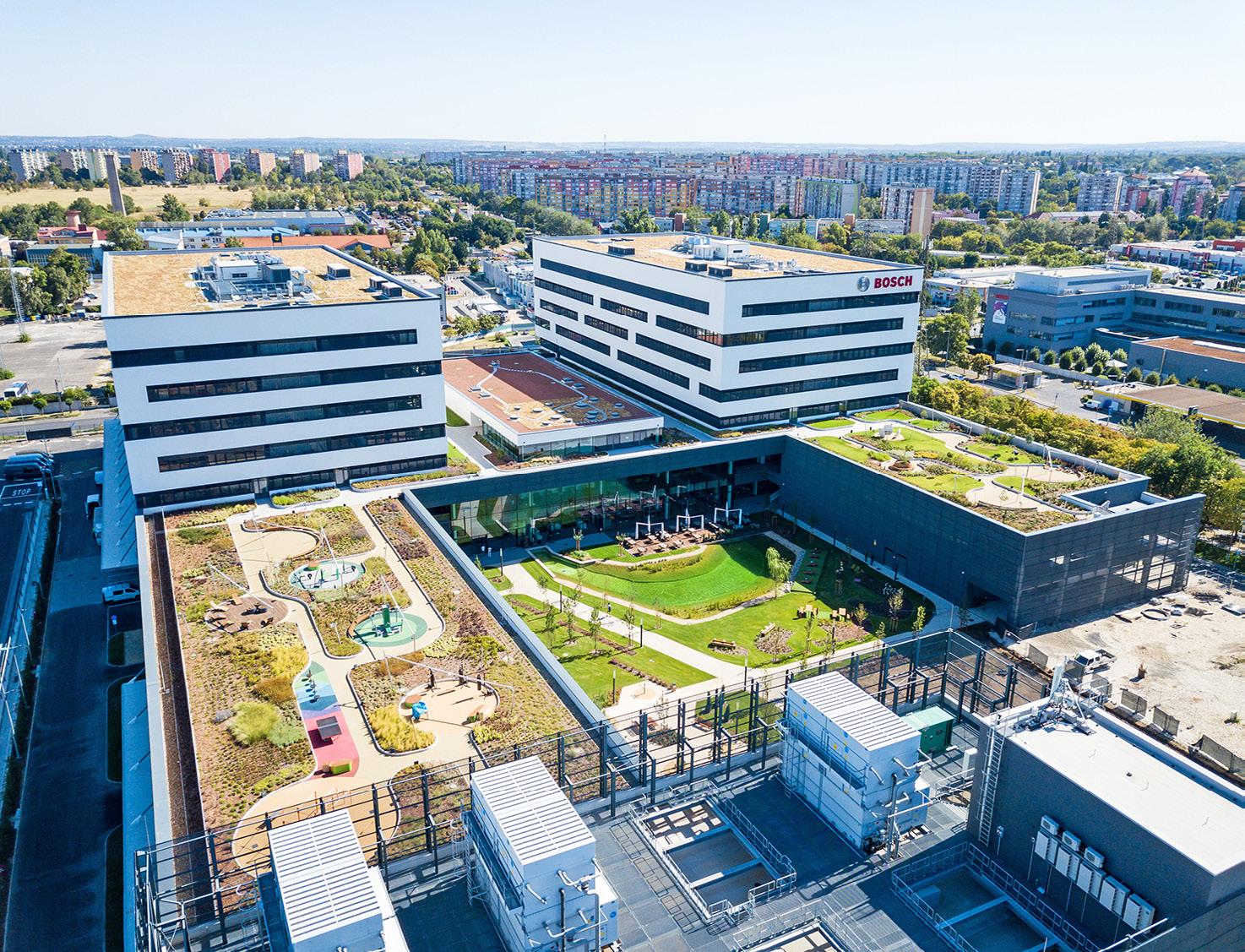
3,000
specialists
(programmers, electrical engineers, mechanical engineers and physicists) are working to shape trends, including the future of mobility, on Gyömrői út.
The Bosch Budapest Innovation Campus will be home to 1,800 nextgeneration workplaces, 14,000 square
meters of instrumented research and test laboratories, a unique outdoor test track and a high-tech giant test hall, all of which will serve the company’s wideranging technological developments.
“The new Bosch Budapest Innovation Campus plays a key role in developing our electromobility and automated driving solutions. The creation of the new campus was justified by the dynamic domestic growth and nextgeneration development projects of the Bosch Group,” said Szászi.
Unique Facilities
An essential part of the new campus is the 10,000-square-meter instrumented test track with unique facilities. Here, ultrasonic, radar- and camera-based driver assistance systems for future vehicles can be measured and fine-tuned under controlled conditions on various road surfaces and in different situations.
The enclosed test track has fuel and electric charging stations; a track lighting system has been installed to simulate twilight and night-time lighting conditions.
The development and testing of future passenger and commercial vehicles will occur using large scale yet precision measuring chambers. One of the special features of the Bosch Budapest Innovation Campus is a test hall that can accommodate several trucks simultaneously. Aerospace technology will ensure exact measurements for the fine sensors of the vehicles while completely filtering out ambient vibrations.
In Hungary, Bosch says it relies on the active involvement of industry and academia.
“The new campus also symbolizes a new approach, which my fellow leaders and I are committed to. We need to go beyond the walls and create a multistakeholder ecosystem with startups, universities, academic institutions,
small- and medium-sized enterprises and government to be truly innovative,” Szászi explained.
In addition to joining the Hungarian Startup University Program (HSUP), the Bosch Group in Hungary is also actively deepening a startup mindset in-house, he said.
In the new complex, particular emphasis will be placed on sustainability and energy-efficient operation, which will be achieved through, among other things, excellent thermal insulation, building management solutions adapted to the environmental impact, automated lighting and shading systems, and heat recovery ventilation.
Renewable energy sources are used for the operation of the campus, with only certified green energy purchased, highefficiency heat pump systems as the primary cooling and heating solution, complemented in the future by solar PV systems. The heat generated by the R&D site’s test systems will be reused for heating and hot water.
No Shortages
Welcoming the development, Prime Minister Orbán vowed there would be no energy shortages in Hungary, and no need to shut down factories.
“It is indeed a minor miracle that such a research and development center could be created,” the PM said. He saluted the Hungarian researchers, engineers and teachers, whose achievements have made it possible to expand the company’s research and development center.
“I have never experimented with natural sciences because of a lack of skills, but there is innovation in politics too,” Orbán said. The prime minister said that a Christian Democratic government is necessarily innovative and that Hungary’s government welcomes any technology that can move the country forward to its benefit.
He argued that Europe is running out of energy and that what we have must be brought in from elsewhere.
“What comes here is expensive, and we have to fight the fundamentalist greens and the bureaucrats to use different energy sources,” he added.
Bosch says the innovation campus is a vision of the workplace of the future, providing an inspiring and creative working environment. The design of the different functions aligns with the company’s new way of working concept.
Considering the latest HR trends and employee feedback, the architectural design emphasized creating community spaces that facilitate creative thinking and inspiration, the company says. In addition to the essential functions, the main building will also include a 500-seat auditorium equipped with state-of-the-art conference technology, which will host professional, business and artistic events.
Meeting rooms are equipped with stateof-the-art technology for professional online meetings. Work and relexation are catered for with a roof garden community space. The campus buildings are surrounded by a green park with walkways, ponds and resting islands.

Leading supplier of automotive technologies and services Bosch has inaugurated its Budapest Innovation Campus, a
sqm complex that will be the site of future automotive developments.
12 | 2 Business www.bbj.hu Budapest Business Journal | September 23 – October 6, 2022
90,000
Green Business 3 Special Report
Market Talk: Real Estate Market Learning to Embrace Sustainability
the case of green certifications, the energy use of properties will be measured and compared with others directly, creating further accountability and transparency. Unfortunately (or fortunately?), the sudden increase in energy prices increased awareness of energy efficiency much quicker; thus, developers and property managers will not be able to omit this in the future.
Zsolt Jakab Portfolio Manager Diófa Asset Management
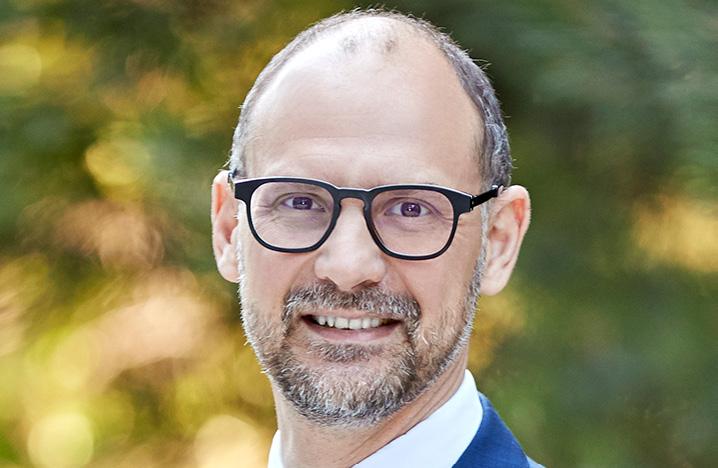
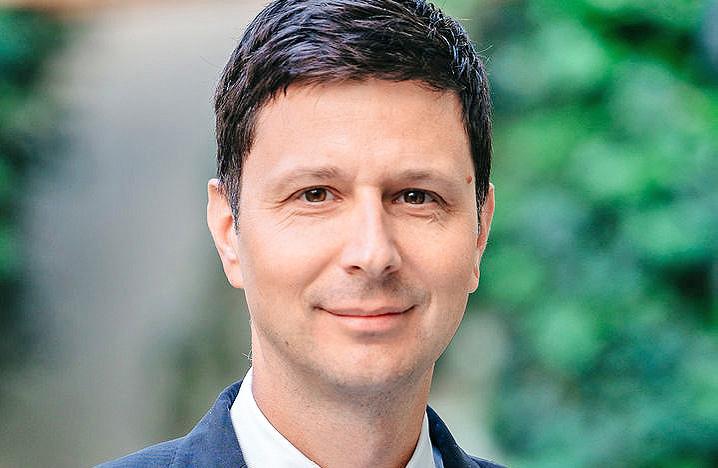
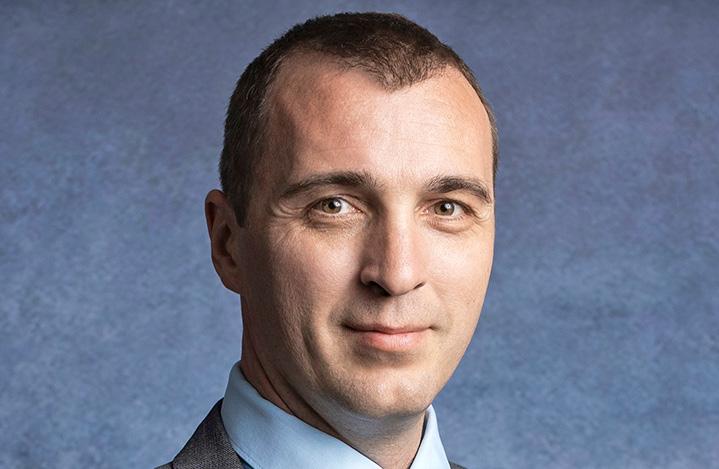

There is no one primary system that would tick all areas of sustainability. Therefore, defining what goals and actions we would like to prove through a third-party system is vital. (There
Sustainability accreditations in office developments are no longer “nice to have.”
Developers must think ahead and aim to obtain one from the early stages of design, on the one hand, for the end users’ benefit, but also for improved chances of achieving greater success in the investment market. Will these certifications spread over to other types of assets too? Very likely; in fact, accreditations are now becoming common in newly developed industrial and logistics centers and hotels. Some experts even say that new blocks of residential developments are also adapting to the trend. Certifying your asset is also an efficient way to assess a building’s
commercial real estate business still has a long way to go to be a truly “green business,” based on the current understanding of green and sustainability targets.
Csaba Zeley Managing Director ConvergenCE
Our world is currently facing the many challenges of climate change. To minimize the environmental impact, GTC carries out its business in a manner that supplements the implementation of the 17 Sustainable Development Goals as defined by the United Nations for 2015-2030. We are committed to continuing our engagement in developing environmentally friendly solutions. The real estate development industry is responsible for 38% of the world’s CO2 emissions; hence, measures to minimize the environmental impact of buildings are essential, making reducing CO2 one of our main objectives. At GTC, we are aware that ever more investors are paying attention to sustainable businesses,
is a different scheme, for example, for life cycle assessments, zero carbon strategies, and so on.) Whether we like these international schemes or not, they play a significant role in international benchmarking in transparent assessments and classifications. Currently, there is no way around these assessments.
Zsombor Barta
President Hungarian Green Building Council
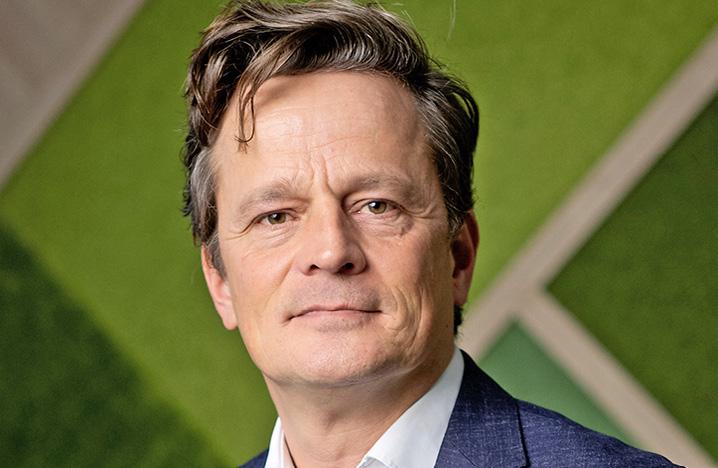
impact on the environment and can help owners find ways to improve. At the end of the day, working, staying and living in buildings that hold sustainability accreditation makes people feel like their built environment is environmentally conscious, and that is a good feeling.
Máté Galambos Leasing Manager Atenor Hungary
I think that the sustainability accreditation process is detailed and time-consuming enough. The reality is that the market drives improvements much more than accreditation. For this reason, in the near future, we will see much more of a focus on building operating efficiency and economy. This will affect all sectors. From an architectural perspective, I expect BIM [building information modeling] to become the market norm as part of a circular process of designing, building, operating, and designing. I think the
Green certification systems, such as Leed and Breeam, have been around since the early 1990s. It took a long time for it to play a vital part in the commercial realty business, something that players now take for granted. During these 30-plus years, the standards constantly evolved and were refined to cope with technological innovation, as well as regulatory and end-user needs and targets. The European Union, with its sustainability goals for 2030/2050, had already paved the direction for the continent,
as proven by our success in issuing green bonds. A significant trend we have noticed is green certification. We strive to have all assets in our portfolio certified. At this point, 88% of all our buildings are accredited by Leed and Breeam guidelines. Furthermore, we have noticed an increase in the importance of ESG practices in the real estate market.
János Gárdai Member of GTC Management Board & COO, GTC
Going green is no longer a marketing slogan but a must. Financially, all sectors are affected in the real estate business, but the office will remain at the forefront among them due to it starting earlier compared to the others. With technical solutions getting more expensive than ever, developers have to put much more money into realizing their green projects to get back the invested capital. ESG compliance should remain among the priorities. An interconnected, intelligent building management system enables PM [property management] and FM [facility management] experts to reduce CO2 emissions and achieve sustainability targets faster. Social aspects have become more important than ever before. The natural materials in use are still less common than concrete, metal, and plastics, and this must be changed. Water should be used to cool buildings and supply greenery. There is no need to construct new buildings if old ones
which the EU has taken to an entirely new level with the introduction of EU taxonomy in 2021 focusing directly on energy consumption. Since the measurement is not as subjective as in
With regard to international sustainability benchmarking systems, each has its pros and cons. One can always find deficits and arguments for why a system is not perfect. It is crucial that sustainability aspirations and solutions need to be third-party checked to guarantee transparency and accountability. There are different international systems available on the market, and as projects are very different, their suitability is also different.
can be refurbished economically. People will love them and prefer to go there instead of visiting concrete-and-glass creations, however attractive they will be.
Valter Kalaus Managing Partner Newmark VLK Hungary
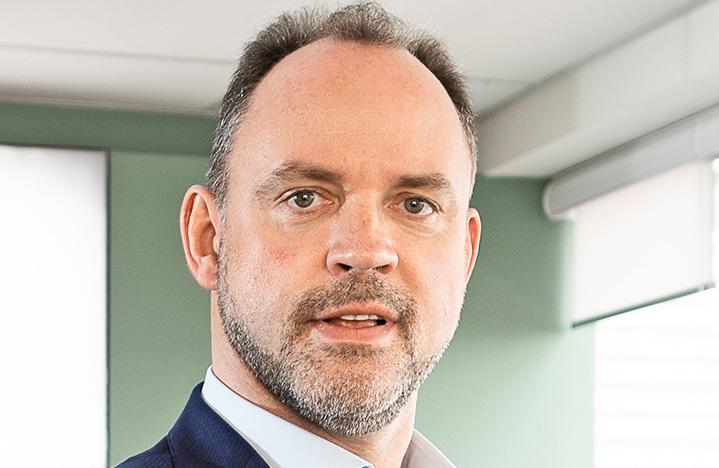
Analysts agree that commercial real estate projects are becoming more sustainable and efficient, notably in the office and industrial sectors. To what extent this is due to market demand, financial pressure, or regulatory influences remains to be seen. Gary Morrell, the Budapest Business Journal’s real estate editor, canvassed property professionals for their views on the progress of sustainability in the Hungarian market.
Máté Galambos
János Gárdai
Valter Kalaus
Csaba Zeley
Zsolt Jakab
Zsombor Barta
www.bbj.hu Budapest Business Journal | September 23 – October 6, 2022
Green Transition Comes with Challenges, Many Long-term Benefits
As Europe grapples with its energy crisis, more businesses in Hungary are thinking about making their operations greener and more sustainable. What can they do, and what should they expect? The Budapest Business Journal talked with Károly Kovács, the man behind one of the leading sustainability conferences in Hungary.
Greener operations have been rising on businesses’ agendas as the understanding grows that there

are commercial benefits to be found. Running a more sustainable business can cut costs, improve output efficiency, drive better revenues, solidify reputation, and create healthier workplaces for employees. Undoubtedly,
the unfolding energy crisis is further boosting such motivations.
“Based on our conversations with local businesses, we can see that even the smallest companies are recognizing their responsibility and are thinking about turning to sustainability,” Kovács, the project leader for GreenTech Zalaegerszeg, tells the BBJ

GreenTech, held for the third time in Zalaegerszeg (227 km southwest of Budapest by road) in 2022,
is a green energy, sustainability and electromobility conference that has been growing in popularity among local businesses.
Organizations in the private and public sectors are realizing the importance of aligning their operations with sustainable practices. Creating an equilibrium between energy independence and economic competitiveness are the two main goals a business can set on its road to sustainability. While these goals are not incomparable, firms must find an optimal point between them to ensure progress.
“The Hungarian government’s standpoint is that these two need to be synchronized; they are both important but cannot hinder each other. In this regard, we have seen that businesses are becoming more
is
de Saint-Exupéry
tame buildings.
We love them, protect them, nurture them, make sure they can serve you as long as possible! The longer you use a building e ciently, the more you contribute to sustainable development.
CHRISTIAN KESZTHELYI
ADVERTISEMENT
Károly Kovács, the project leader for the GreenTech Zalaegerszeg sustainability conference. Photo by Péter Seres.
14 | 3 Special Report www.bbj.hu Budapest Business Journal | September 23 – October 6, 2022 COMPREHENSIVE FACILITY MANAGEMENT SERVICES bplusn.hu fmnewsroom.com
“You become responsible, forever, for what you have tamed.” Antoine
Our mission
to
ai166368009935_BN-109_Fenntarthatosagi_sajtohirdetes_252x158mm_2022-09-20_FG_press.pdf 1 9/20/2022 3:21:41 PM
efficient energy consumers, especially in the present market. They are looking for possibilities to become more independent and find alternative sources,” Kovács says.
Capital Requirements
From a macroeconomic perspective, this will be a challenging task in the short- to mid-term. Once the change of mindset has started, companies will need a significant amount of capital as the shift to greener operations requires considerable investment, which will, in turn, affect the economy.
“These investments will increase the demand for raw materials as well as for labor force, which will drive up wages and fuel consumption. As a result, it may drive inflation,” Kovács warns. However, he insists that this is natural.
In the long term, investing in sustainability is the only way to deal with hiking energy prices. As energy producers add green alternatives to their mix, energy production costs will decrease following the initial investment burden. Increasing energy independence will, for the energy producers, mean that they will see a capital surplus accumulating, which could lower energy prices for the consumer and leave the company with capital to reinvest. And they will need that money.
“Businesses, whether energy producers or not, now have to assess

and diagnose their operations before they start planning the green transition,” Kovács explains. They face two main challenges. Firstly, the transition will not happen overnight; it is a long process. Secondly, it is a never-ending task, requiring continuous maintenance and upgrades and hence further investment.
Pressure Abounds
But for companies, this is not a mere financial and sustainability conundrum. The pressure on them to change comes from all areas, beyond the European Union’s climate goals.
On the one hand, investors today are increasingly reluctant to expand their portfolio with companies where there is no clear environmental, social and governance strategy. On the other hand, consumers are becoming more ecoconscious and more likely to demand that product and service providers pay attention to sustainability.

“Businesses cannot solve these issues on their own. They need support. The state can help them via funding, tenders or issuing green bonds. The private sector can help them by offering services and expertise related to the transition,” Kovács says.
But there are still challenges to be faced. The range of companies specializing in the green transition and ESG services is still relatively small. Additionally, a specialized workforce is lacking. Put bluntly, the market needs more expertise.
Businesses in Hungary have recognized the economic potential of renewable energy and its benefits. They can start installing their own energy production systems, such as solar panels, purchase power from certified green sources, or use a mixture of these approaches.
“Nowadays, solar panels form the most popular green energy collection and storing alternative. But it is not the best solution in every single scenario and, in many cases, limitations prevent their installation,” Kovács points out.
“The green transition and sustainability are more multi-layered; it offers more



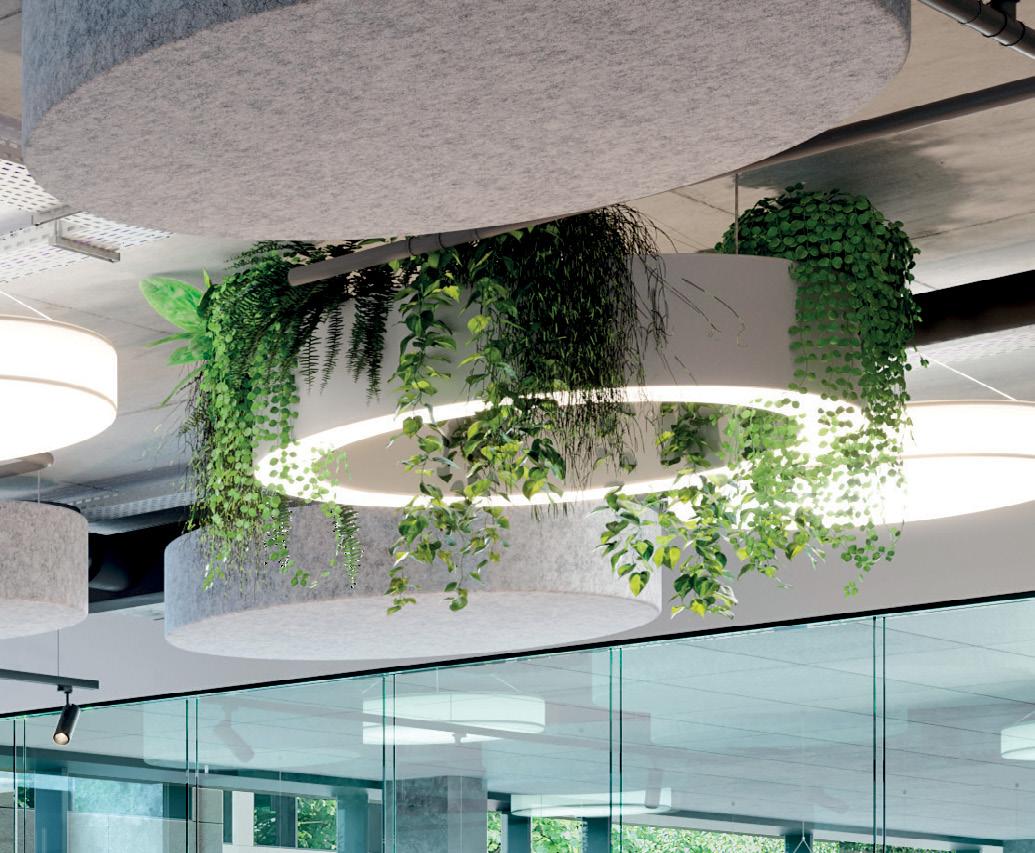

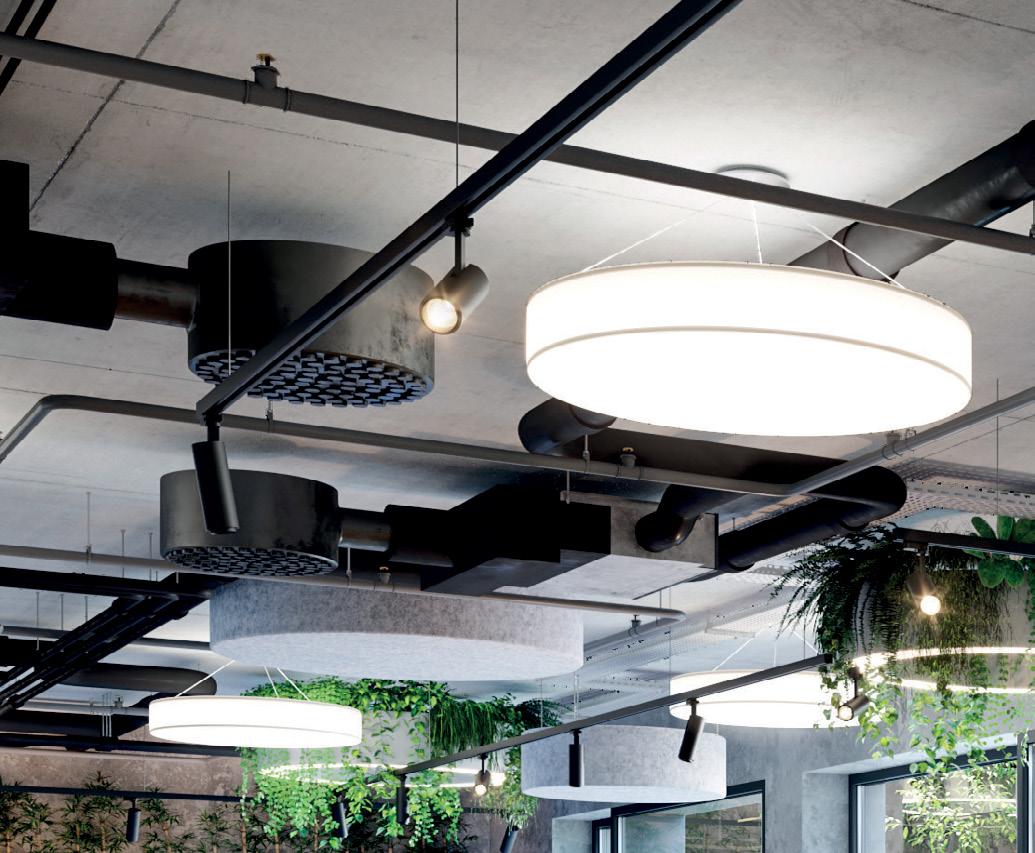
GreenTech Zalaegerszeg aims to showcase how climate and environmental issues can be resolved while prioritizing technological development and economic growth. The event covers industrial emissions, green and renewable energy, digital strategies, electromobility and public transport, waste management, and water purity.
Particular attention is paid to coordinating innovations in each area with sustainable development. For three years, the event has hosted the most important governmental, municipal, institutional, educational and corporate players in related professional fields, creating what the organizers insist is a unique opportunity to exchange professional experiences and strengthen relationships.
possibilities and comes with more options. Businesses today know very well that, sooner or later, they will have to employ in-house ESG experts to look after their sustainable operations and practices,” he adds.

“The green transition and sustainability […] offer more possibilities and come with more options. Businesses today know very well that, sooner or later, they will have to employ in-house ESG experts to look after their sustainable operations and practices.”
3 Special Report | 15www.bbj.hu Budapest Business Journal | September 23 – October 6, 2022 GREENERY • COMMUNITY • FLEXIBILITY
ADVERTISEMENT
Luxury, Sustainable Living Promised in new Riverside Jewel

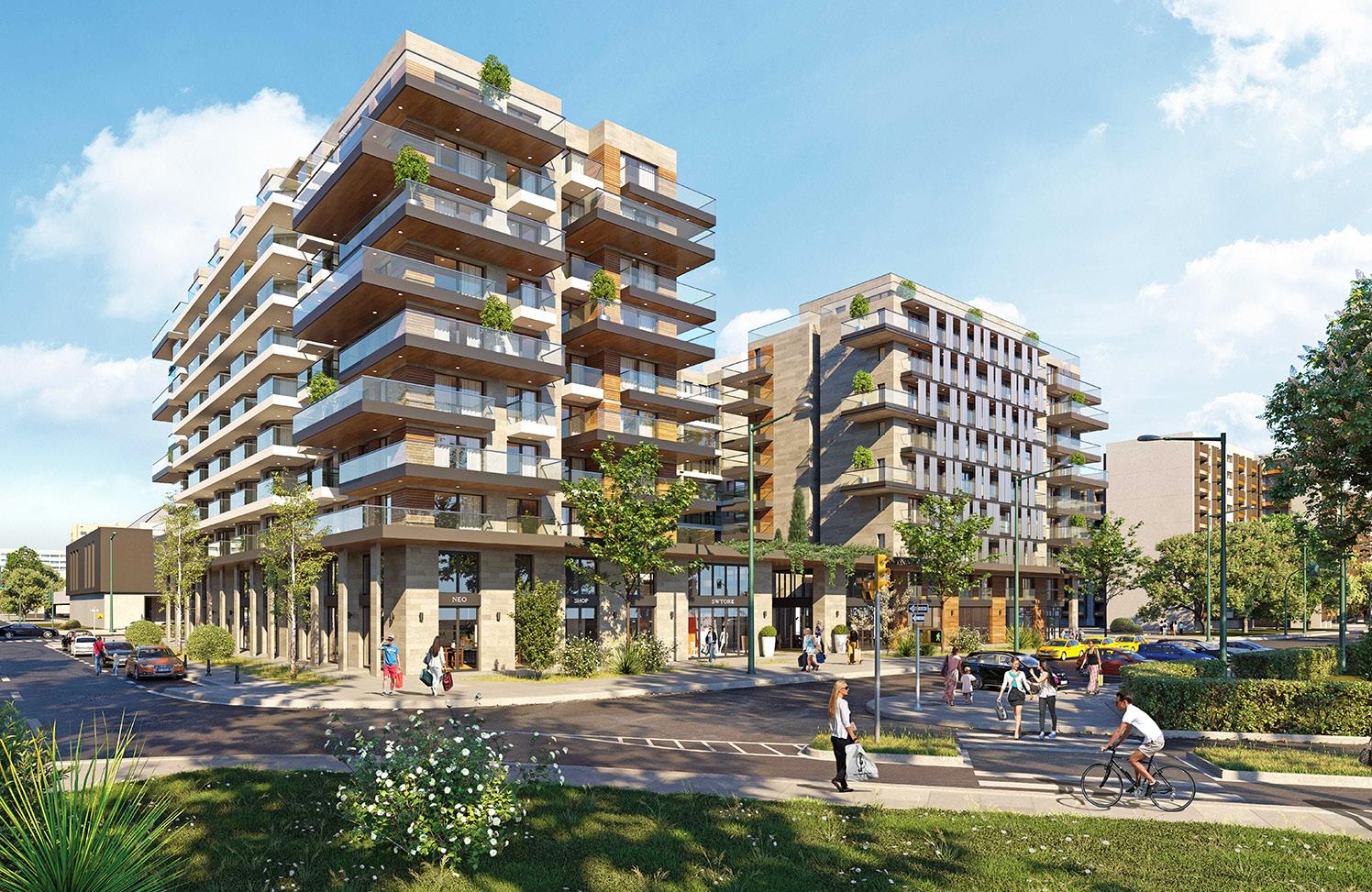
Take a walk in the Újlipótváros neighborhood of Budapest’s District XIII, and you will notice that the Duna Pearl development, on the corner of Kárpát utca and Pozsonyi út, is very near to completion. The Budapest Business Journal spoke with Kaan Yücel, the CEO of the Turkish developer Polat Holding, about the project.
BBJ: Each building has its own challenges. What are the most complex challenges for a luxury hotel chain in Budapest?
Kaan Yücel: It is a luxury product that will deliver 193 apartments and a fourstar business hotel, the first member of an international luxury hotel chain in Budapest with more than 100 rooms. We needed to ensure the quality and standards for both parts. There is also ground floor retail space and a restaurant, which will organically expand and enrich this fantastic district. The underground car park is a real treasure in such a congested city and will help alleviate
Újlipótváros’ notorious parking problems. The unique architectural solutions, waterfront panorama, and abundance of green spaces make this residential complex a piece of art, really, a new pearl on the Danube, hence the name. Residents will move into fully equipped apartments with premium kitchens, built-in furniture, automatic blinds, and the comfort of smart homes with IT solutions. The development includes the renewal of the surrounding streets, the renovation of pavements, the creation of new park areas, and the opening of green spaces on all sides. There are newly designed public and community spaces for residents and visitors to the neighborhood to offer quality daily living.
BBJ: Why should someone invest in property at Duna Pearl?
KY: It is safe to say that there will be no new housing available in this popular residential area for a long time, with
the Duna Pearl being the last buildable plot. We would argue that the surge in interest in apartments is no coincidence. Unfortunately, these are challenging times in Europe, with the pandemic, war, unfavorable economic prospects, and an unpredictable business environment. But, at such times, property, as a secure, value-proof form of investment, understandably becomes more valuable. This is a significant development of more than EUR 70 million, which will use renewable energy in line with EU building standards, including the very latest in heat pump cooling and heating systems. Investing in a property like this in the center of Europe now is a sure long-term return. But people should not just take my word for that. Delivery starts this fall, and we have owners ready to move into apartments. Clients can, of course, visit a show apartment where they can feel and touch what a home in Duna Pearl will look like.
BBJ: It is well known that the construction industry is one of the most significant contributors to carbon output. What are you doing to mitigate this?
KY: Although the construction sector, in general, is not famous for its greenconscious operations, in the case of Duna Pearl, we adhered to all the necessary regulations and ensured the building would be capable of keeping to the standards required for Leed certification, the most widely used green building rating system. We worked according to Leed practices and sourced materials in accordance with the Leed attitude. So in their operation as homes, they will be environmentally friendly. An essential part of this was that we made sure to properly and safely remove and dispose of the asbestos-contaminated topsoil during the first phase of construction.
BBJ: What other sustainability measures are you taking at Duna Pearl?
KY: We are providing EV charging solutions for more than half of our parking lots. Heat pumps will supply the heating and cooling system energy, a very modern but also convenient and green solution. Highly sealed glass panels and walls are further important features of the development.
BBJ: Are the energy crisis and rising costs for raw and finished materials posing any specific problems?
KY: When the energy crisis hit the region, we were already in the final phase of the construction, so we were less affected than had it arrived at the start of our project.
BBJ: Polat Holding is a Turkish group, although you are working in Budapest through your subsidiary. Are you exclusively using Hungarian subcontractors, or are you also bringing in workers from Türkiye and elsewhere?
KY: The general contractor is a 100% Hungarian-owned company; this is their responsibility rather than ours, but foreign workers were involved. Also, Turkish products that offer genuine value for money, such as premium tiles, sanitary ware, and built-in furniture, were chosen for their competitive prices.
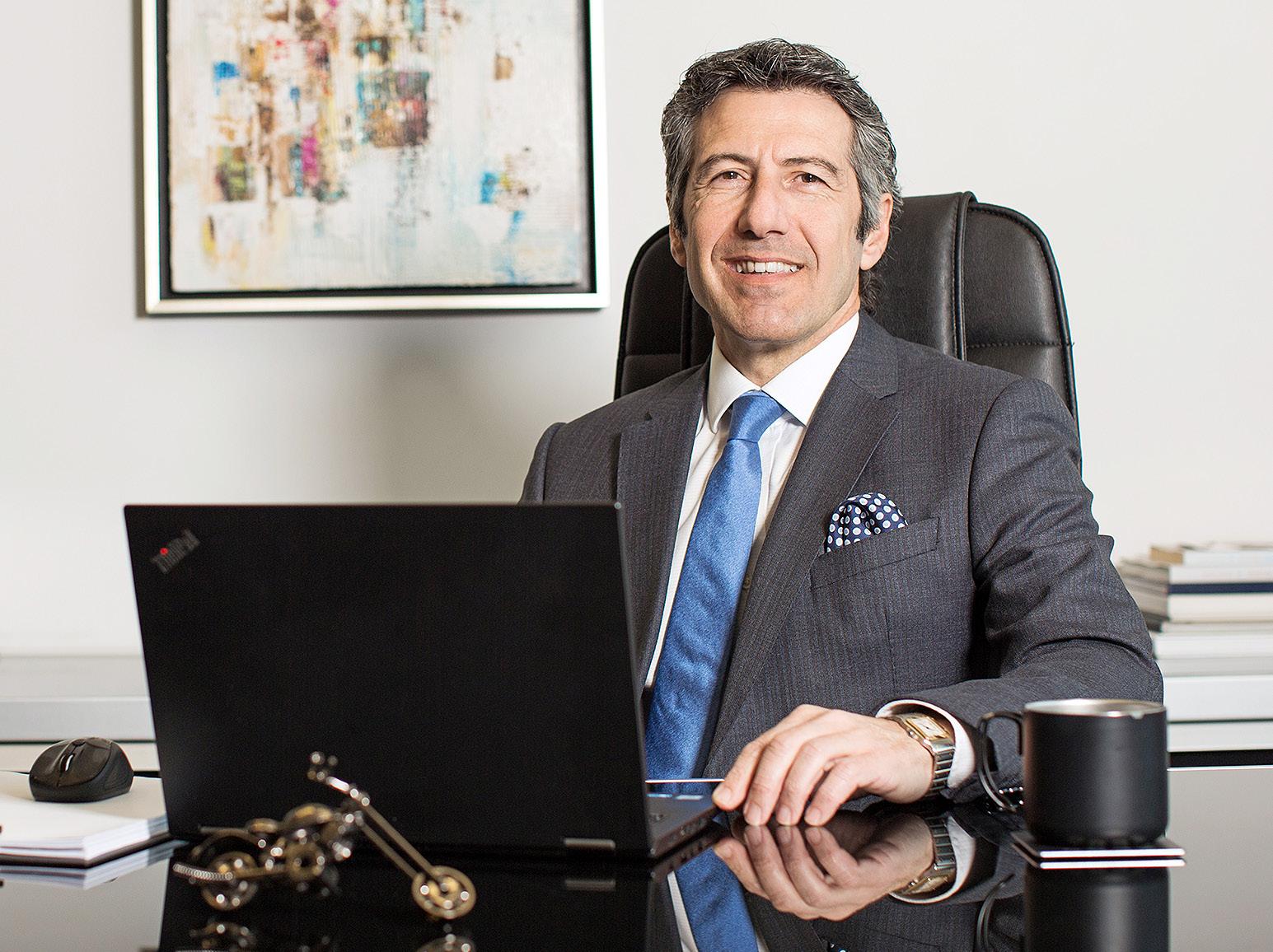 BBJ STAFF
BBJ STAFF
3 Special Report | 17www.bbj.hu Budapest Business Journal | September 23 – October 6, 2022
PRESENTED CONTENT
ESG: Local Steps in a Global Megatrend
sustainability, while the latter contains products with a sustainability goal.
The Future of ESG?
Although the capital market shock caused by the Russo-Ukrainian war also hit stocks with good ESG characteristics, ESG disclosures may become even more comprehensive and transparent in the coming period, which could give the market another impetus and clear it up. In mid-2023, financial market participants who claim to be sustainable must already publish the main adverse effects on sustainability factors, both in relation to climate and other environmental impacts, as well as negative social effects.
Today, almost every institutional investor, fund manager, and investment service provider takes the importance of ESG into account, most recently in real decision-making mechanisms too. ESG covers the areas of Environmental Protection, Social Impacts, and Responsible Corporate Governance.
Hungarian ESG
To understand the essence of ESG investments, we must retrace our steps a little. It is a cliche nowadays that our planet’s resources are finite and that global resource management in its current form is not sustainable in the long term. In recent years, various responses have been developed, and sustainability efforts have appeared in all areas of life, for example, selective waste collection, recycling and energy-saving.
As a result of the global energy crisis, the ESG approach may increase its importance in the real estate market; rising utility prices will grow the demand for sustainable, energy-efficient offices, commercial properties and warehouse buildings. Using gas-based vs. electricitybased solutions to ensure the energy needs of buildings will be a critical issue.
Property developers and owners who pay special attention to compliance with green and energy-efficiency standards will have an advantage in the market. Diófa Asset Management is fortunate in that the company was an early adopter and years ago anticipated that premium-rated buildings would become very valuable. For example, one of the outstanding properties of Torony Real Estate Investment Fund is the Leed “Platinum”certified Green House, acquired in 2014. The building was the first in Hungary to obtain such a prestigious certification. Features of the building include

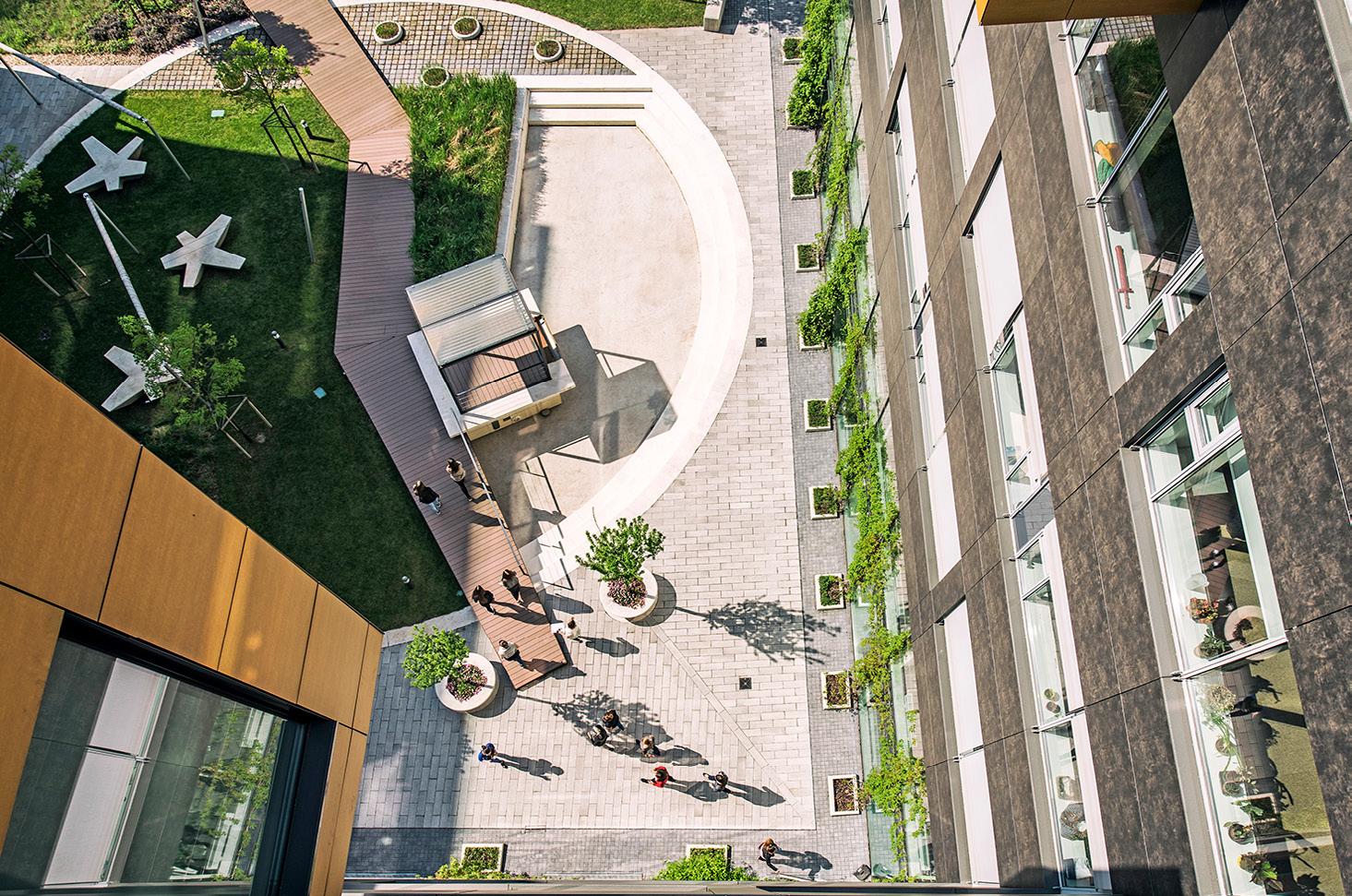
lavatories running on rainwater, a lowconsumption heating system, and an insect hotel on the top of the building.
This trend also influences several areas of the economy beyond the real estate market. The fundamental function of the world of investments (money and capital markets) is to connect savers with those looking for funds, the borrowers. If the assets flow in the direction of ESG activities, then sustainably operating companies get cheaper financing, which makes them more competitive against non-sustainable (for example, polluting) companies.
The market has been spectacularly open to these processes worldwide, with many products promoting themselves as supporting ESG. At the beginning of 2020, USD 35.3 billion flowed into ESG assets, making sustainability a global megatrend. Just as with real estate 10 years ago, ESG-based rating systems for investments have also appeared.
The ESG Paradox
There is a dilemma in the relationship between ESG and performance. Is a company performing well because it pays attention to ESG approaches? Or is it able to pay attention to ESG because it is in a profitable, comfortable position and can do so?
During the COVID lockdowns, ESG investments soared in inflows and yield performance, but many attribute this not to sustainability characteristics but the
significant overlap between ESG stocks and momentum and growth stocks.
Some of the larger Hungarian listed companies have serious sustainability reports, even by international standards, but overall, the more developed Western markets are still significantly ahead in this field. In Hungary, even among listed companies, only a few businesses and institutions provide adequate ESG data, and the scope and quality are very different.
The Budapest Stock Exchange (BÉT) also promotes the importance of incorporating ESG factors into investment decision-making. BÉT joined the United Nations Sustainable Stock Exchanges (SSE) initiative in 2018 and declared its commitment to implementing the UN Sustainable Development Goals (SDGs) by 2030. In 2021, an ESG reporting guide was also published, which helps Hungarian companies to start developing their ESG reporting practices.
Diófa Asset Management also has an ESG fund, the Diófa Jövőkép ESG Equity Investment Fund, which was among the first created on the domestic market. The fund’s yield since its launch in September 2020 is 17.6%.
Fifty Shades of Green
A Diófa Asset management expert recently admitted that it is difficult for investors to decide which investments have a genuinely sustainable effect. So-called “greenwashing” is an existing market process: market participants make claims that help them seem “green” to attract assets. To eliminate this, the EU introduced regulations according to which financial institutions must transparently and comprehensibly inform investors about the actual sustainability performance of their funds. These laws define the concept of sustainable investments precisely and record product- and institutional-level disclosures to educate investors.
Based on EU legislation, we can distinguish between do-called light green and dark green products. The main difference is that the former category includes products that promote
The EU Green Bond Standard, which is still being developed, could stimulate the green bond market. European Union regulations are centered around two main pieces of legislation: one is the so-called Sustainable Finance Disclosure Regulation (SFDR), and the other is the Taxonomy Regulation.
EU Regulation and GreenWashing
The SFDR aims to ensure transparency and comparability in relation to financial market products and services from a sustainability point of view, thus preventing greenwashing activities.
The Taxonomy Regulation specifically prioritizes the “E” of ESG. It regulates in detail what environmental objectives a product can have and what specific parameters can be used to decide whether a given investment is considered environmentally sustainable or not.
The previously mentioned legislation defines the concept of sustainable investments and records product-level and institutional-level disclosures to inform investors. It is very important to distinguish between light green (so-called SFDR 8) and dark green (so-called SFDR 9). SFDR 8 funds promote environmental or social characteristics, or a combination thereof, while SFDR 9 funds have a sustainable investment objective; there are nearly 100 such ETFs worldwide.
ESG (Environmental, Social, and Governance) is one of the best-known acronyms in financial and economic life.
BBJ STAFF
Proportion of Global Sustainable Investing Assets by Region 2020
and Australasia have enacted significant changes in the way sustainable investment is defined in these regions, so direct comparisons between regions and with previous versions of this report are not easily made.
18 | 3 Special Report www.bbj.hu Budapest Business Journal | September 23 – October 6, 2022PRESENTED CONTENT
*Europe
34% 48% 7% 3% 8% Europe* Japan Canada United States Australia/NZ*
EU Taxonomy and Real Estate Investments
As evidenced by recent CEE commercial office transactions, ESG investing (the integration of environmental, social and governance factors into the acquisition and exit process) is increasingly a concept adopted by investors as a central pillar of their investment strategies. Pressure to do so comes from shareholders and legislators and a wider need to be seen to be investing sustainably.
GARY J. MORRELL
Building owners and developers, therefore, need to adopt a longerterm sustainable strategy to have the option of an exit strategy with a sale to an investor. With ESG, the priority up till now has tended to be on the “E”
for environment, for example the use of green energy. Sustainability and financial issues are seen as moving closer together with energy efficiency, in the view of many analysts.
“You cannot really do an RE investment deal nowadays without implementing ESG-related criteria. EU Taxonomy is a major ‘game-changer’ on the EU Market,
as this criteria framework defines sustainable business activities within the EU,” says Zsombor Barta, president of the Hungarian Green Building Council (HuGBC), on the role of sustainability issues in the investment process.
“Only those who can demonstrate compliance are eligible for financial benefits. Sustainability means the reduction of financial risks as well. Therefore, I would say there is no other way than sustainable solutions, and this is now also one of the key factors when it comes to investments,” Barta argues.
Colliers estimates regional year-end investment volumes will reach EUR 9 billion-EUR 10 bln for 2022. The total for Hungary for this year is expected to be around EUR 1.2 bln in the view of consultants. The total investment volume for 2021 for Central European (which for Colliers encompasses Bulgaria, the Czech Republic, Hungary, Poland, Romania and Slovakia) was EUR 11.7 bln.
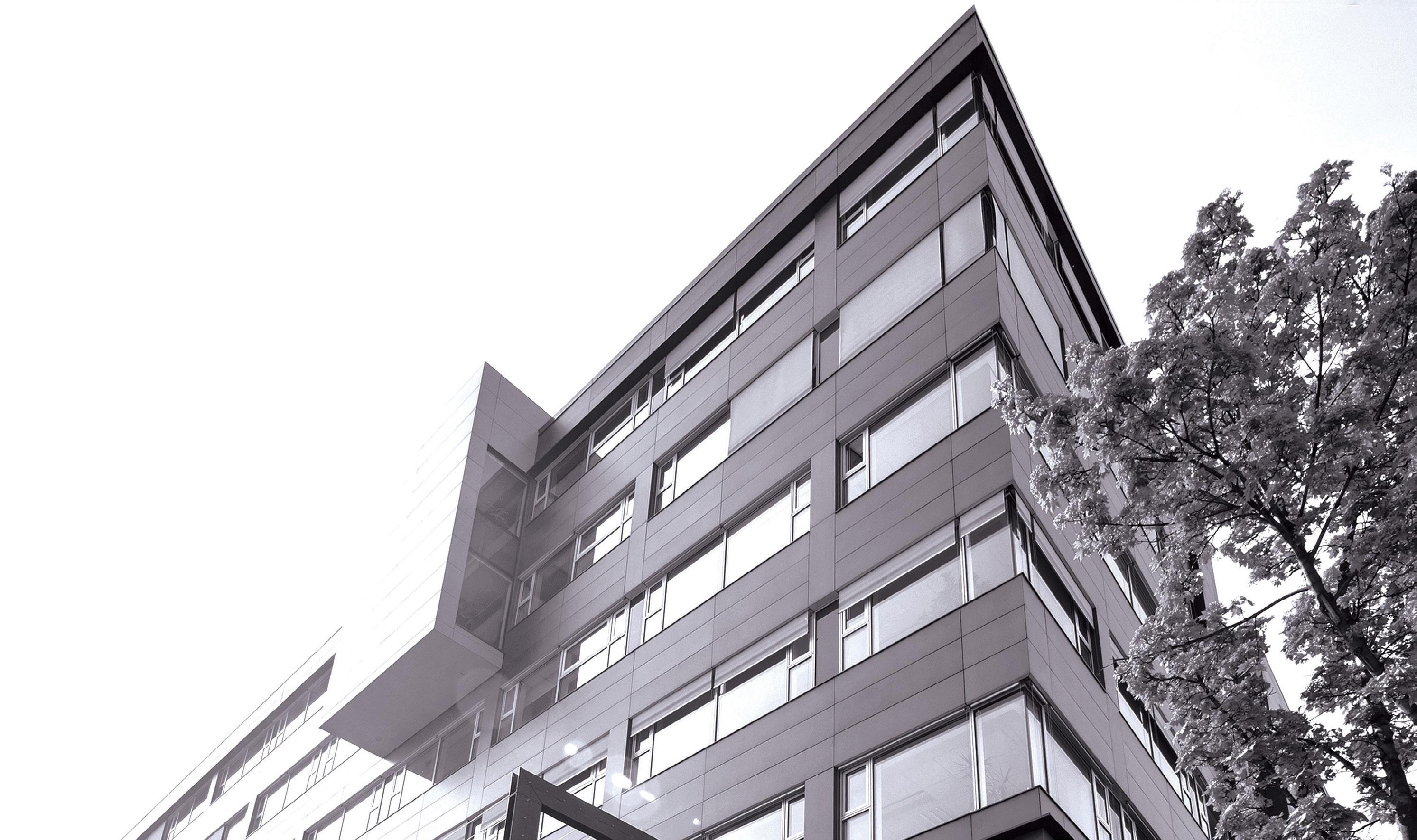
“I think that social and governance is more indirect, but investors are putting in place a program to make an asset compliant with SG regulations,” says Benjamin Perez-Ellischewitz, principal at Avison Young Hungary.
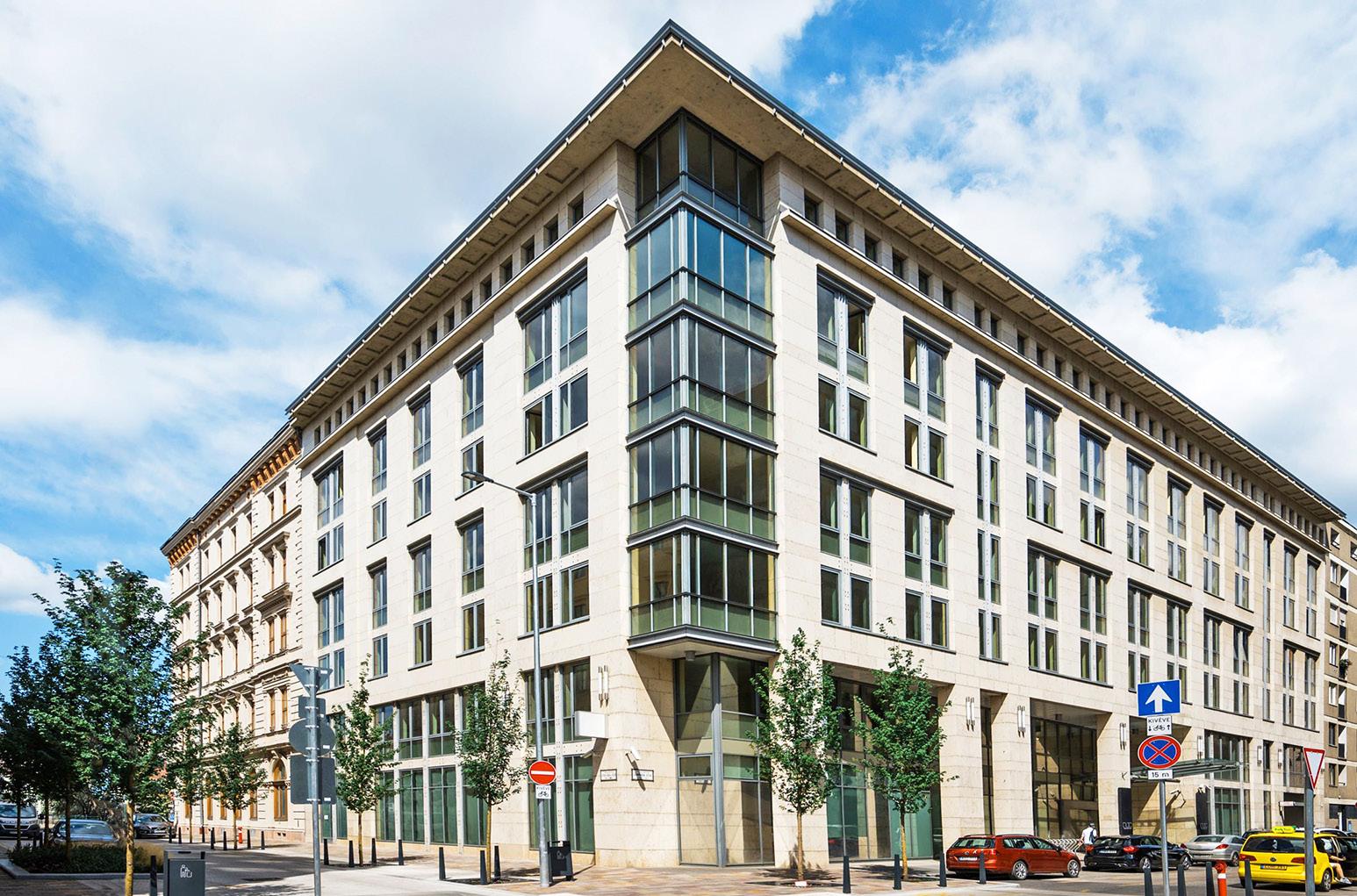 Academia office building, acquired by investors with ConvergenCE acting as asset managers.
Academia office building, acquired by investors with ConvergenCE acting as asset managers.
3 Special Report | 19www.bbj.hu Budapest Business Journal | September 23 – October 6, 2022
ADVERTISEMENT Continued on page 20 ›››
“This is still quite early in the Hungarian and Central European markets. ESG and EU taxonomy reports are now expected to be part of the information pack by some investors when presented with an acquisition opportunity,” he notes.
Sustainability Expectations
Investors obviously have yields and their return on investment as a central priority, although a commercially successful investment grade building tends to have attained sustainability accreditation. Sustainability expectations are now integral to the leasing process and asset management.
Indeed, the argument could be made that almost all assets at the higher end of the office and industrial sectors in Central Europe are now sustainability accredited and market pressures are, therefore, acting in parallel with sustainability regulations.
“ESG in Hungary is currently less of a buzzword than in the Western hemisphere,” comments Zsolt Jakab, portfolio manager at Diófa Asset Management. “The main reason is that local investors focus more on yields than, in some cases, distant targets represented by ESG. As a developer, it is much harder to omit ESG, as potential buyers could easily come from outside the country.” He argues
ADVERTISEMENT
that more standardized regulation will definitely help wider adoption.
Investors need to look to a longerterm rise in the value of an asset and the prospect of new national, regional, and international sustainability regulations being implemented. ESG investment strategies in all areas are seen as necessary to combat climate change and pandemic protection measures. In this way, building owners must expect constant regulatory changes and adapt their products and practices accordingly.
“As of now, ticking the ESG boxes as a developer is essential, but the emphasis is on the assets’ sustainability features and ‘future-proof-ness’ in real estate investment deals. Investors need to think of their future exit, as outdated assets are and will be more difficult to dispose of. Therefore, the market is definitely shifting towards a more sustainable mindset,” comments Máté Galambos, leasing manager at Atenor Hungary.

The prolific regional developer has a policy of developing large-scale, phased developments and selling on to investors once an asset has been completed and is substantially leased.
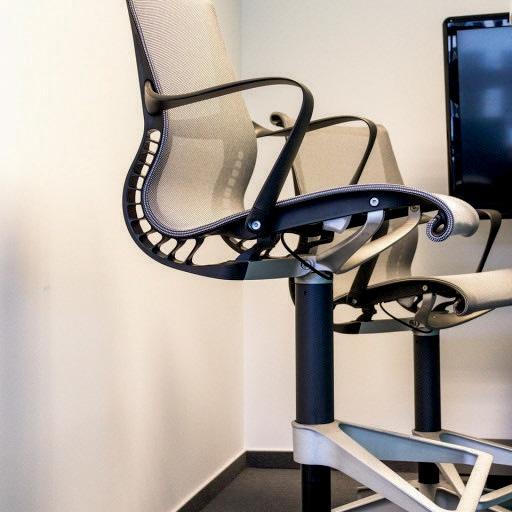
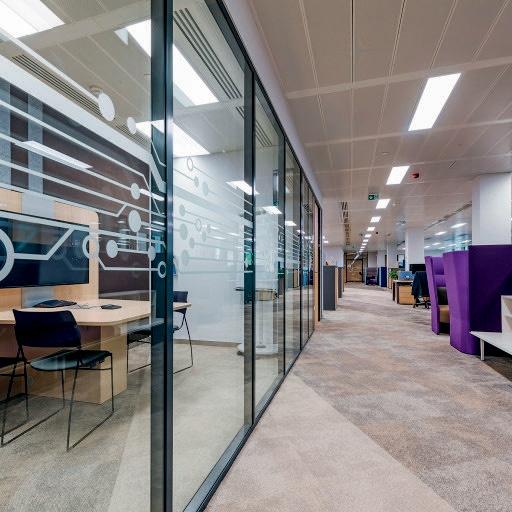
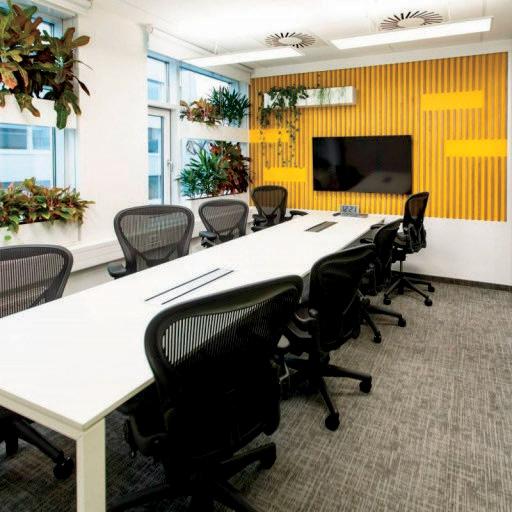
ESG elements are increasingly influential in the investment market, agrees Csaba Zeley, managing director at ConvergenCE, the developer and asset manager.
Walk the Walk
“However, as with ‘greenwashing,’ investors and tenants are quickly realizing that there is a big difference
between ‘talking the talk and walking the walk.’ In other words, ESG should only really be part of the market where it is appropriate and effective,” he says.
“ESG in Hungary is currently less of a buzzword than in the Western hemisphere. The main reason is that local investors focus more on yields than, in some cases, distant targets represented by ESG. As a developer, it is much harder to omit ESG, as potential buyers could easily come from outside the country.”

While ESG reporting is not yet mandatory for all listed companies, GTC has been preparing them for two years and became the first commercial developer in Central and Eastern Europe to publish an ESG report in June 2021. Moreover, ESG standards have been an essential criterion for GTC in making project-financing decisions for many years. This has a

substantial impact on investor interest in supporting sustainable businesses, according to the company.
Financing is also ever more connected to sustainability criteria compliance. If developers can prove compliance with EU taxonomy, financing or re-financing will be more likely and much more straightforward.
However, Barta of HuGBC pointed out the danger in owners trying to keep pace with demands that tenant specifications change and be updated, as this requires a lot of resources in materials, labor, and energy and generates waste.
“ESG is increasingly higher up the list for investors and developers. This is partially driven by changing attitudes on responsibility towards the impact of real estate on the environment, but also by increasing requirements on the financing and reporting side of things that will ultimately impact the feasibility of business models going forward,” concludes Kevin Turpin, regional head of CEE at Colliers.


“But we also see sustainability and green ratings moving from a ‘nice to have’ to a ‘must have’ for various players active on the market, in particular from tenants and banks. This means that investors and developers will need to react and adapt if they want their buildings to continue to be competitive and attractive in the future,” he adds.
P R Ó B Á L J A K I A Z Ü L É S E R G O N Ó M I A C S Ú C S Á T !

20 | 3 Special Report www.bbj.hu Budapest Business Journal | September 23 – October 6, 2022
Magyarországon! 25 ÉVE www Designoffice hu
Continued from page 19 ›››
Location a Vital Element to Sustainable Buildings
open green spaces or a post office. Moreover, when designing the greenery, we try to enrich the native flora. We are well aware of how good plants are for people’s health, both physical and mental,” Gárdai comments.
The office content of the project is Leed “Gold” accredited and aims for further energy efficiency. The concept was developed by the Danish Adept Studio, with sustainability elements included from the planning stage.
GARY J. MORRELL
The Breeam Communities standard provides a framework to support planners, local authorities, developers and investors to integrate and assess sustainable elements in the master planning of new communities and regeneration projects, the third-party accreditation organization says.
“Sustainability regulations increase the liveability of urban spaces enormously. More green surfaces, less fuel-based traffic, and more alternative options are changing cities,” comments Zsombor Barta, president of the Hungarian Green Building Council (HuGBC).

“Also, it is expected that fewer individual cars will use the inner districts; therefore, a new concept needs to be developed on how to utilize the former parking spaces or garages wisely. This type of thinking is already in discussion in Vienna, for example. The CEE region is a bit more behind that, as individual cars are still very important in this region. But I am sure there is no other way than sustainability; sooner or later, we also have to re-think our city’s space utilization,” he insists.
Office development is being undertaken in urban locations integrated into the broader city as new business districts such as the outer boulevard in Budapest are emerging. Developers are delivering projects that are perceived as providing a reciprocal benefit for themselves, staff and residents in the vicinity.
At the same time, city authorities are looking to attract development that improves the economic environment, provides employment opportunities,
PROMOTION
and upgrades the infrastructure of an area, as has been the case with the Váci Corridor in recent years.
Core Factors
“With regard to the development of, for example, an office project, the most important factors are seen as the proximity and variety of public transport [options], the different amenities within walking distance, the business nature of the district and also accessible green areas nearby. With regard to transportation links, the most favorable is a metro within 400 meters; however, other fixed track modes of transportation are also advantageous,” says integrated building services provider DVM.
János Gárdai, CEO at GTC Hungary, says a guiding principle for it as a developer is to minimize the impact on the natural environment, local community and surroundings at every stage of the investment.
“In the process of our projects’ development, we revitalize the area and integrate it with the urban tissue. Examples of this type of project include Centerpoint, built on the site of a wood carpentry, and the White House, built on the site of a former crane factory,” he explains.
“When designing the foundations, we look for solutions to reduce energy consumption. We manage our buildings using BMS [building management system], which contributes to achieving energy efficiency.”
Gárdai says it is essential to adapt new projects to the existing urban environment to ensure they interact with the local community.
“We want the residents to benefit from our office buildings, whether through
Customer trust is the best investment
A happy workplace helps employees to be mentally and physically fit to perform at their best in a stress-free environment. A healthy workplace is an investment that pays off; ConvergenCE has recognized this and provides it for its tenants.
ConvergenCE has won several awards over the years, focusing on every detail of the market to earn tenant satisfaction and trust, which are the most critical aspects of the company’s philosophy. In this spirit, employees and their health have been at the forefront of designing
and constructing its new project for 2022, the Academia Office Building.
To eliminate air pollution from the inner city, air quality is improved by mechanical ventilation in addition to the windbreak at the entrance. Interior design, material choices, plants, and unique artwork ensure visual ergonomics and an overall aesthetic appeal.
With the interior design drawing attention to the water supply options and encouraging the consumption of fruit and vegetables, a healthy lifestyle and diet are called to mind. The restaurant operator will ensure less sugar and salt are used and prioritize ingredients from organic and small-scale producers in preparing meals.
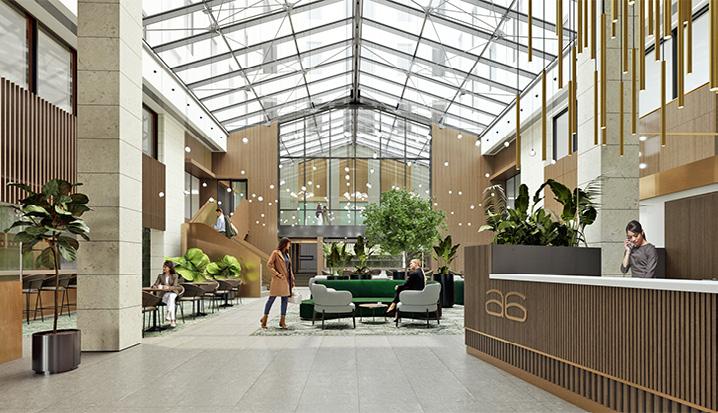
Hotel developments such as the Párisi Udvar project by Mellow Mood have contributed to the redevelopment of the infrastructure of the historic center, giving a commercial value while enabling the renovation and preservation of listed buildings, therefore enhancing and preserving the classic Central European look of the city.
Mixed-use Development
An example of a mixed-use development that integrates office, residential, services and leisure is BudaPart by Property Market on a 54-hectare site on the southern Buda bank of the Danube at Kopaszi Gát [Dam]. The project includes retail and hotel elements in addition to large green areas based on the concept of developing a new city quarter on what would be a prime development site in any city.
“In the latest phase of the BudaPart development, the focus is on the implementation of the project’s transport and community space improvements, further expanding the city center’s wide range of services and functions, and taking another step towards the realization of the 15-minute city concept,” says Mihály Schrancz, managing director of Property Market.
“Residents can enjoy the proximity of nature – the plants, the waterfront – in a real green belt. But, of course, adequate services are also needed so that the tens of thousands of people who will live and work here in a few years’ time will be able to find a crèche, kindergarten, and doctor’s office locally.”
BudaPart is expected to be completed by 2030, by which time it will feature 3,000 apartments in 15 residential buildings, around 250,000 sqm of office space in 12
office buildings, and 23,800 sqm of commercial space, all supporting around 25,000-30,000 city dwellers, according to Property Market.
“The new model of urban living here will shift the focus from cars to pedestrians on the surface, with more space for community activities and a healthier environment. BudaPark also offers energy-saving and environmentally friendly public transport, electric car chargers are available as well as major car sharing services,” adds Schrancz.
Focus on Sports and Technology
The property developer envisages providing daily exercise, sport and recreation by organizing various events and cooperating with nearby service providers.
The VTS Rise tenant engagement platform places a strong emphasis on connecting people, spaces and technology. In addition to this collaboration, several comfort and efficiency-enhancing features will be
Máté Galambos, leasing manager at Atenor, argues that the principles of sustainability in terms of location are pretty simple: An urban office district is best located where it is easily and quickly accessible from residential and retail areas, and there are means of public transport that support commuting to these destinations, all while being cost and energy-efficient.
“When it comes to architectural design, there is no single solution that supports sustainability; luckily, there are plenty of available resources and technologies that are extremely ecofriendly, and it is great to see that more developers and real estate funds decide to apply these. At Atenor, being the first office developer to obtain the Breeam “Excellent” sustainability rating in Hungary, we have been seeking solutions of architectural excellence to support sustainability efforts from day one,” Galambos concludes.
incorporated: presence-sensitive, lowenergy lighting, ceiling-mounted cooling and heating systems that ensure a constant temperature without noise and disturbing air flows, and the use of limestone and other high-grade materials for sustainability, so that Academia will also meet the highest environmental standards and requirements.
Four-legged and Four-wheeled Visitors Welcome
The building has been designed to be dogfriendly, and in addition to four-legged visitors, the designers have also paid great attention to four-wheeled access, so the building is also applying for Access4You certification. The car wash, located in the underground car park, uses 99% biodegradable products without any environmental pollution and without producing any wastewater.
Buildings that respond to the needs of the users while simultaneously interconnecting with their environment can be said to be sustainable. From the demand side, tenants and staff require offices that have direct public transportation access and are integrated into the urban infrastructure.
The BudaPart megaproject by Property Market on the Danube.
3 Special Report | 21www.bbj.hu Budapest Business Journal | September 23 – October 6, 2022
The ESG Approach in Real Estate Investment Deals
Zsolt Berényi has been acting as development director for GTC Hungary since September 1. With a more than 15-year track record in commercial real estate, he is responsible for the company’s existing and new developments in Budapest and liaising with business partners and authorities. His extensive experience includes office and retail projects, 5-star hotels and student residences, and acquisitions. An architect by training, he was also a visiting lecturer at the Budapest University of Technology and Economics from 2006 to 2013.
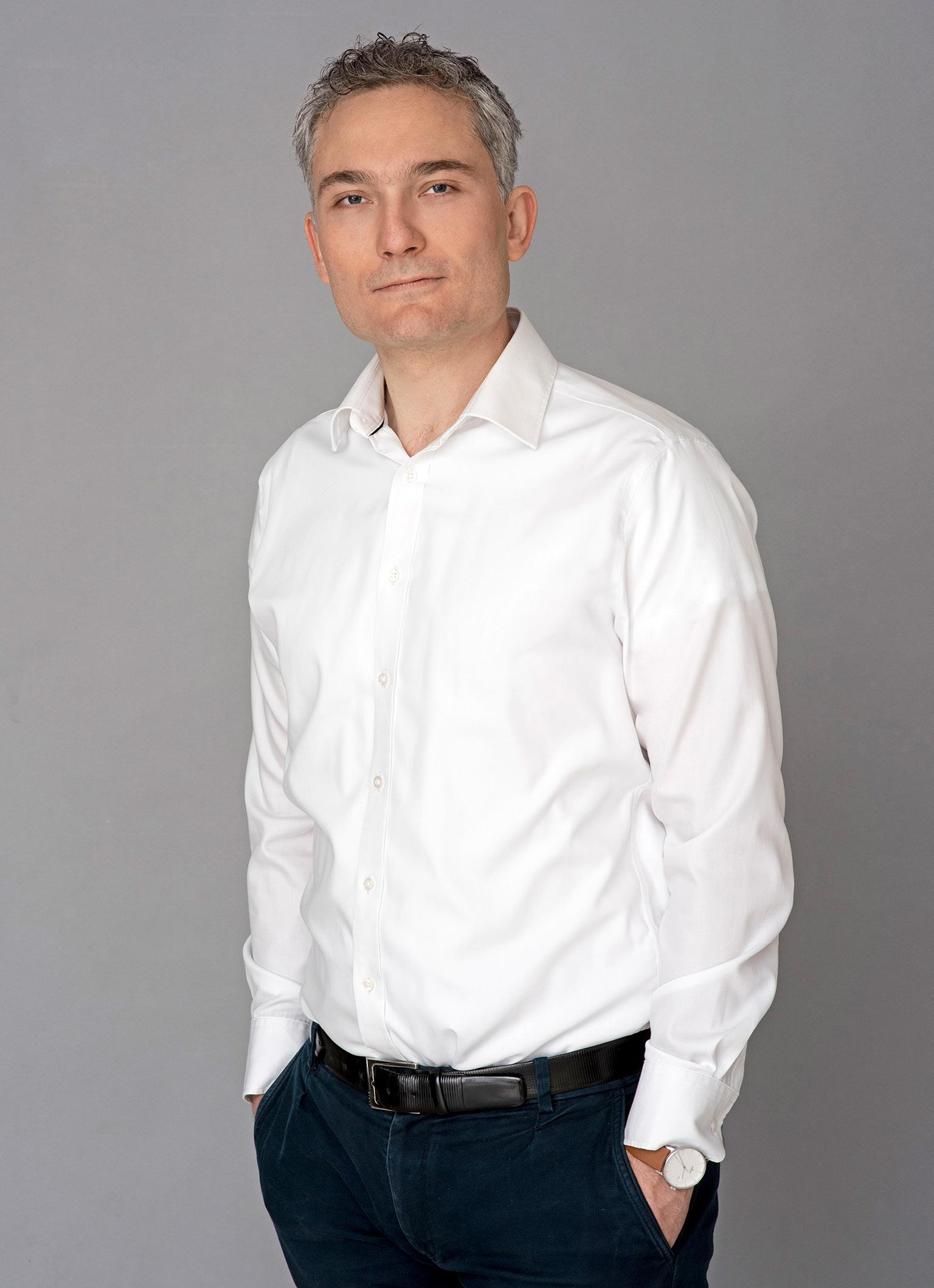
Environmental awareness emerged in the commercial property market and in legislation in the mid-2000s. In Hungary, environmental, sustainability, and wellbeing considerations are increasingly moving to the forefront of investment, and rapid adaptation is a significant competitive advantage in the market.
Investors are pushing developers towards the ESG approach, strongly emphasizing social responsibility and environmental impact.
The approach has come into focus over the last decade but gained massive momentum during recent years. Operating along ESG principles, especially its environmental part, is not a new thing; however, nowadays, it is no longer an option but a must.
Many well-known certification bodies, such as Leed or Breeam,
environment for everyone in our office buildings. Although we no longer own it, the GTC White House office building on Váci út is a prime example of this: we transformed an existing structure using state-of-the-art operating principles, taking into account the needs of all the people who work here. Our current flagship development under construction, Centerpoint 3, was designed with sustainability, energy efficiency and the ESG approach in mind. We aim to operate Centerpoint 1, 2 and 3 as a complex working environment in one single development.
Centerpoint 3, along with Centerpoint 1 and 2, belongs to a small group of developments in Hungary: it has enough scale to provide frames for social life and community spaces. Social awareness means supporting our tenants by creating community spaces, sports and shopping facilities.
An ESG-harmonious construction is underway: we are upgrading Centerpoint 1 and 2, creating one large unit together with Centerpoint 3. It will be a prime example of a building complex that is ideal both functionally and visually for the workplace and a variety of community activities.
Worth Renovating/ Refurbishing
We will also renovate the existing building stock according to ESG principles. I believe it is crucial to maintain our present buildings, simply because it is worth it even in the short run.
focus mainly on sustainable energy efficiency and others, such as Well, place a great emphasis on the people living and working in the building.
Energy Efficiency in Focus
However, with the large-scale energy crisis that will remain with us in the coming years, the whole issue has suddenly become vital, and energy efficiency has become a critical issue. While the consequences of environmental impacts will take decades to unfold, companies will, without exception, have to react immediately to the up to 10 times higher energy prices. ESG is, therefore, now very much a practical issue, with tenants looking for energy-efficient buildings.
GTC is committed to sustainability and green office buildings at a group level. Investor pressure on ESG has given a considerable boost and raised the bar regarding building expectations and the need to create community value. The energy crisis has also shifted the priority towards energy efficiency and energy security. We are working to make energy costs predictable for our tenants
and to create a solution within the group to reassure tenants and maintain their sense of security. We are committed to providing stable, long-term solutions.
Energy management now plays a prominent role in ensuring the longterm efficient operation of energy systems. Efficiency drives include, for example, developing a long-term sustainable heating/cooling system. This has recently become a key consideration in the residential market, too, with buyers and tenants increasingly looking for new-build homes.
How new is This Approach at GTC?
Not very; this way of thinking has always characterized the group, a trend that the unfolding energy crisis is accelerating. Our Leed “Gold”-certified Pillar office building, which opened in March, was built using environmentally conscious, sustainable solutions, with the maximum attention to tenants’ needs.
At GTC, we have always been committed to tenant comfort and creating a motivating working
Today, maintaining the energyefficient operation of the existing housing stock is a significant competitive edge. This development has unexpectedly created a new order of speculative property development. The aim when constructing a building is to achieve long-term energy efficiency, with a view to its subsequent operation from the design stage. This has also become an essential consideration in GTC’s new investments.
Food for Thought
As far as legislation is concerned, we have to reiterate that policymakers should consider that regulation should not distort competition. When drafting new legislation, the aim must be to ensure that it does not affect market players or put some of them in a more or less favorable position.
Regarding environmental impact, accessibility and transport options are also crucial issues; whether a building is conveniently accessible by public transport, as well as the strict requirements for the number of parking spaces to be provided.
Current legislation, for example, stipulates the construction of two, three or even four-storey underground car parks. However, it is a perfectly legitimate question to ask whether these will still be needed in 10-20 years as traffic and car use patterns change.
Zsolt Berényi, Development Director of GTC Hungary.
22 | 3 Special Report www.bbj.hu Budapest Business Journal | September 23 – October 6, 2022
PRESENTED CONTENT
Sustainability a Central Element in Development Cycle
“Hungary has a Net Zero target in place, and its financial sector is working to stimulate the flow of capital to decarbonization efforts. Much of its electricity is generated by nuclear power, and it is developing solar capacity, energy efficiency and use of electric vehicles,” said István Szabó, a senior manager at KPMG Hungary. Buildings represent 17% of emissions, industry 21%, transport 23% and electricity and heating 23%, according to KPMG.
As reported in the July 29 issue of the Budapest Business Journal, Pál Dános, head of real estate advisory at KPMG Hungary, explained that the Net Zero Readiness Index compares the progress of 32 countries in reducing the greenhouse gas emissions that cause climate change, and assesses preparedness and ability to achieve Net Zero Emissions of these gases by
net zero buildings or other strategies as well in the near future,” Barta says.
GARY J. MORRELL
This is evident in the office market and is increasingly also so for logistics and other sectors like hotel and residential. There is also now a perceived need for sustainability elements in public buildings.
Sustainability requirements are now extended to include environmental, social and governmental (ESG) and EU taxonomy issues in planning, design, permitting, financing, leasing, property management, and an exit strategy. All this, in turn, requires benchmarking, transparency and accountability systems.
ESG-related advisory services have thus become a growing business and specialty: KPMG, for example, has a dedicated property sustainability advisory department.
ESG and EU taxonomy act as roadmaps or frameworks for more sustainable and green products.

“We can clearly see that sustainability has become one of the major criteria for the real estate sector. Non-compliance with sustainability frameworks can even be a deal breaker nowadays, which is a new trend,” comments Zsombor Barta, president of the Hungarian Green Building Council (HuGBC).
“The EU taxonomy plays a very important role when it comes to the real estate sector’s sustainability, and the big international green building schemes also realize that; therefore, all have announced compliance routes with the Taxonomy requirements with similarities to the certifications,” the president explains.
“This will further evolve in the future for sure. Also, the net zero targets are clearly influencing the certification schemes, and more options and possibilities will be developed to certify
“It is still highly important that sustainability frameworks and holistic guidelines are implemented for all built environment projects because everywhere materials, resources, energy or land is used […], the active integration of sustainability aspects and measures are essential. Overall, third-party accreditations are a very useful tool for systematic thinking and the active integration of holistic sustainability aspects,” he adds.
Most Used
Breeam is the most used sustainability system in Central Europe by office developers, although Skanska, for example, prefers Leed across its whole international portfolio, including this region. The prolific developer was also one of the first to utilize the Well system in Hungary in its office projects. Most recently, Skanska has received Well “Core & Shell” pre-certification for the first phase of its H2Offices complex in the Váci Corridor.
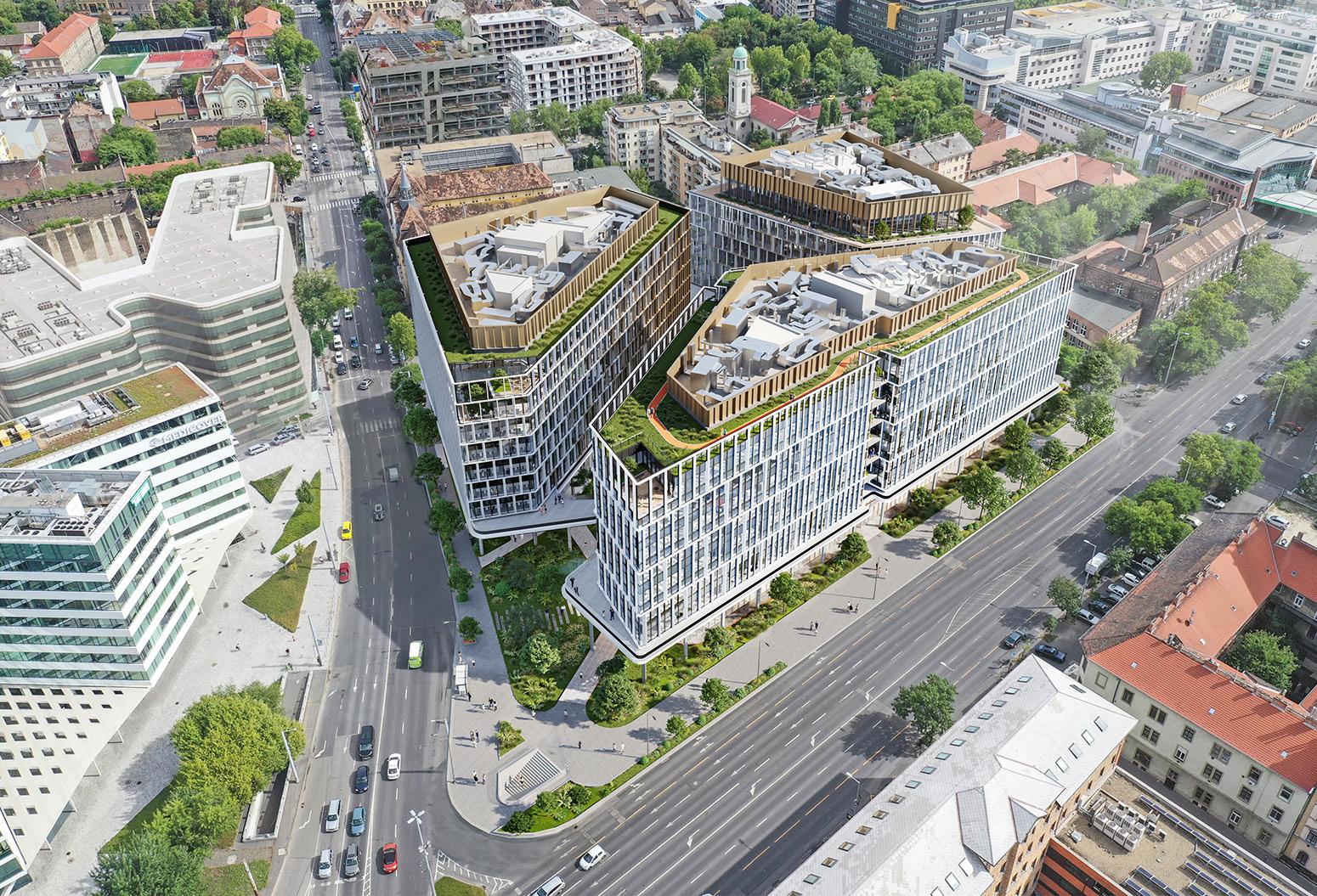
The project is on course to be awarded the highest level “Platinum” accreditation for both Leed and Well and WELL platinum accreditation, according to the developer.
A similar trend can be found in the logistics sector, where seeking third-party sustainability accreditation is rapidly becoming the norm at the top end of the market for leading national and international industrial park developers and operators.
Prologis is developing in accordance with at least Breeam “Very Good” accreditation for its entire regional portfolio. Tenants are looking to save on utility costs, recognize the importance of staff wellbeing, provision of green areas, cycle parking and changing facilities, as well as electric vehicle charging units. Other factors include observing precautions concerning the transmissible viruses and the need to reduce the carbon footprint of their projects, said Prologis.
The Maglód and Fót HelloParks industrial developments in the Greater Budapest area are the first industrial buildings in Hungary to achieve Breeam “Excellent” certification in the “New Construction” category, according to the developer. For more on this, see page five.
Legislators are also impacting the landscape, with the EU introducing a common taxonomy for the single market.
“We are very proud and happy as the HuGBC collaborated with the Hungarian National Bank (MNB) on the adaptation of the EU taxonomy for the real estate sector in Hungary. Further, the HuGBC can also verify taxonomy compliances in this sector, which is again an important milestone related to the third-party verification of EU Taxonomy compliances,” comments Barta.
Net Zero Progress
Hungary is ranked 13th in KPMG’s “Net Zero Readiness Index.” Poland, for example, ranks 19th.
2050.
With regard to the construction market, professionals emphasize the need for a circular economy that eliminates or reduces waste in materials used.
The view expressed at the recent Poland Urban Land Institute (ULI) meeting was that the real estate industry “needs to produce adaptive and regenerative designs that make sustainable use of natural resources. Every developer needs first to ask if the project is actually needed, and if it is, then it needs to be built for longterm value, efficiently and with the right materials.” There is progress, but more is needed.
“Currently, the real estate sector is not one of the greenest sectors; however, it is clear that the sector is doing more year by year,” Barta acknowledges.
“As this sector’s negative environmental impact is huge, there are still enormous challenges to overcome; there is lots of work to do in the future. The good news is that there are positive trends and directions; there is a lot of knowledge about how we could do much better within this sector,” he says.
“As long as non-sustainable solutions (such as materials, products, services, etc.) are financially the more beneficial options, sustainability cannot be implemented widely and for the entire sector. Sustainable options need to become the new norm, the financially attractive and, therefore, cheaper solution,” Barta concludes.
Accreditation from an independent, third-party sustainability organization such as the U.K.-based Breeam and the U.S.-based Leed, and increasingly the interior and human health specialized Well, has become so much the norm it is integral for the entire life-cycle of a development project.
Artist’s rendering of the H2Offices by Skanska.
3 Special Report | 23www.bbj.hu Budapest Business Journal | September 23 – October 6, 2022
Breeam Well Leed Hungary 232 3 73 Czech Republic 579 3 73 Poland 1,466 11 242 Source: HuGBC Sustainability Certified Office Buildings in Central Europe
Shedding Light on Environmentally Sound Interiors
Developers are striving to deliver ever more highly specified and sustainable complexes as interior and exterior design and development have essentially become part of the same process.
GARY J. MORRELL
“Individual work is almost dead in offices, but privacy should not be disregarded. Collaborative spaces will have the lion’s share within the general rentable area.
Regulations may become tougher in the coming years, but, overall, demand may fluctuate as companies have still not figured out their real needs,” said Valter Kalaus, managing partner at Newmark VLK Hungary.
János Gárdai, Member of GTC Management Board & COO, GTC, puts the view from the landlord’s perspective.
“We are very attentive to the changes that occur in the behavior of tenants because, at GTC, we focus on partnership and the highest possible level of service to our tenants,” he comments.
“At the same time, we remain open to suggestions for changes, as well as the implementation of new services or amenities requested by tenants. Our approach is met with great acceptance by tenants, as reflected in long-term partnerships,” Gárdai adds.
Well, the accreditation system dedicated to interiors and related elements is increasingly being utilized in the highend office sector as developers need to react to changing working practices and the use of space and increasingly stringent sustainability regulations.
Leading office developers such as Skanska, Horizon Development and Futureal are committed to developing their projects in line with Well accreditation, in addition to the established Leed and Breeam systems.
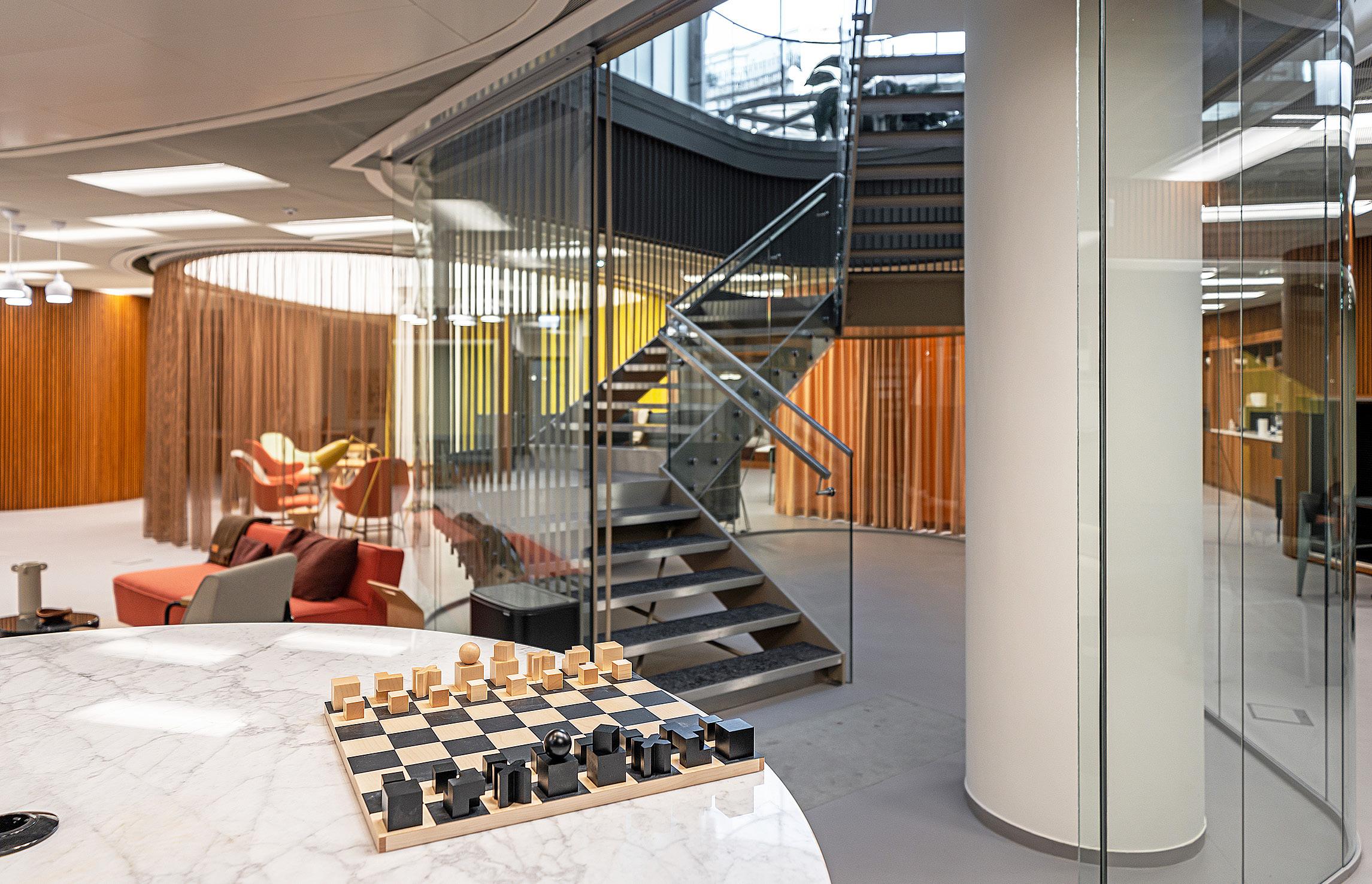
According to the Hungarian Green Building Council (HuGBC), around 10 projects are in the process of assessment for Well pre-certification or certification. This system focuses on the wellbeing of staff, the provision of amenities, use of space and accessibility.
Vivid Ecosystems
“We have to create a vivid ecosystem of workspaces that truly address our needs. Well-designed spaces will be more aligned with the specific needs of the users – be that in the office or other environment used for work,” comments Regina Kurucz, head of the Well working group at HuGBC.
“Office design should evolve from fixed to fluid, so they can meet the needs of the users as they evolve over time. The workplace should be inclusive for all,” she explains.
Advance Tower by Futureal, which was sold to the Erste Open-Ended Euro Real Estate Investment Fund, is the third office complex in Budapest to be awarded Well accreditation.
“ESG principles will continue to be a key priority in the operation of our properties. We have solid sustainability requirements, and we are working with our tenants in order to meet them,” says
Balázs Pázmány, chairman of the board of Erste Asset Management.
“Advance Tower’s Well rating is also an indication that ESG is becoming more prominent in our investment decisions, and we are striving to increase the ESG compliance of our real estate funds in their day-to-day operations. We intend to continue to play a pioneering role in the compliance of Hungarian real estate funds with ESG criteria,” he adds.
“Individual work is almost dead in offices, but privacy should not be disregarded. Collaborative spaces will have the lion’s share within the general rentable area. Regulations may become tougher in the coming years, but, overall, demand may fluctuate as companies have still not figured out their real needs.”
attract and retain talents as well as improve ESG performance,” explains Gábor Radványi, chief architect of Futureal Development, on the development policy of the company.
“This is demonstrated by the fact that two out of the three Well-certified office buildings in Hungary were realized by our company. The building standard will define the next decade of the real estate industry, and we are committed to building all of our forthcoming office projects in line with it, as we focus on advancing comfort, wellbeing and health,” Radványi said.
Sustainability elements are also impacting the role of property and facility management.
“Property management of the buildings will need to be more reactive to the actual use of the building, based on smart metering,” argues Zsolt Jakab, portfolio manager at Diófa Asset Management.
“For example, if fewer people are in the building on certain days, the building’s ventilation/heating/cooling could be adjusted to save on operational costs. It is important to understand, though, that most of the currently built buildings in Hungary are very limited to fit such a flexible use,” he adds.
As indicated above, several Budapest office projects are at the pre-certification stage in the Well certification process.
At the Forefront
“Futureal aims to be at the forefront of sustainable development to create healthy, environmentally-friendly, creative and productive spaces that
Kalaus, of Newmark VLK, argues that tenants will welcome any significant change that makes their life easier and healthier. Government regulations will concentrate on environmental issues and energy saving across the EU. This will be a major driver for the upcoming years as the whole continent faces dramatic climate change; the EU has made it clear it is increasingly willing to address those issues.
Commercial property interiors bring together a plethora of issues regarding the general environment, the internal atmosphere and layout, staff wellbeing (impacting staff retention) and hygiene.
24 | 3 Special Report www.bbj.hu Budapest Business Journal | September 23 – October 6, 2022
Growth, Creative Benchmarking, and the Cost of Sustainability
He also came up with a term he says he has trademarked: crenchmarking or creative benchmarking.
“Everybody is speaking about innovation and disruptive technology, but sometimes you can move quicker if you use the crenchmarking approach,” he says.
“If you look at big breakthrough examples, we say that they develop disruptive technology. But in fact, it’s not; it’s crenchmarking, when you benchmark your competitors, but you try to find ideas from elsewhere. Uber was a taxi company that ignored the old way of organization. It took the possibility it found in IT and made this blended solution.” Károlyi even wrote a book on the subject and presented the idea to his group HQ.
Profit Proposal
“In 2012, we lost turnover in the market. And I said, ‘Okay, I have a proposal; give me some free space to organize the local structure, and I promise that in the following three years, we will grow in our local market at double the GDP.’”
In the early ’90s, just after the change from a communist command economy to a democratic free market, the then family-owned company with its base in Limoges in central France was looking for business opportunities in the region. It found a Hungarian state-owned company that matched its core business; making household electrical switches, and, in December 1992, the acquisition agreement was signed Ironically, Károlyi was being considered for the position of business manager by the previous management at the Hungarian firm. He arrived for the final three interviews in January 1993 to find new French owners in place.
Legrand had already picked a business manager, another Hungarian who had worked for them in Algeria but was eyeing Károlyi for the role of modernization project manager, responsible for “docking” the Hungarian entity within the French group. But the change in ownership meant the process became more drawn out, and in March ’93, Károly was flown to Limoges to meet with the family owners.
“For me, it really was not easy. I was working in computer technology, and although I knew French, other than Hungarian, I was mainly used to speaking English. That first night I met the big boss for dinner. Over the following three days, I was interviewed by more than 15 people, from various departments, with lots of questions, and all day we spoke French.” Two weeks later, he was working for Legrand. Much has changed since then.
“When I joined the company, there were around
people. At that time, many functions were integrated inside the company; it was a classical socialist-era organization. We had park keepers and a lot of drivers.”
Today’s direct head count is 560. But Károlyi adds that another 600-700 people work for subcontractors that rely primarily on Legrand, meaning the overall total of those dependent on the company is broadly the same.
The business has been split into two. The business unit, covering local sales, has doubled its turnover to EUR 26 million since the end of the 2008-12 financial crisis. The original business in household switches now represents less than 50% of the total, as Legrand has moved into sectors like energy distribution, power installation, IT datacom structured cabling, and data center products.
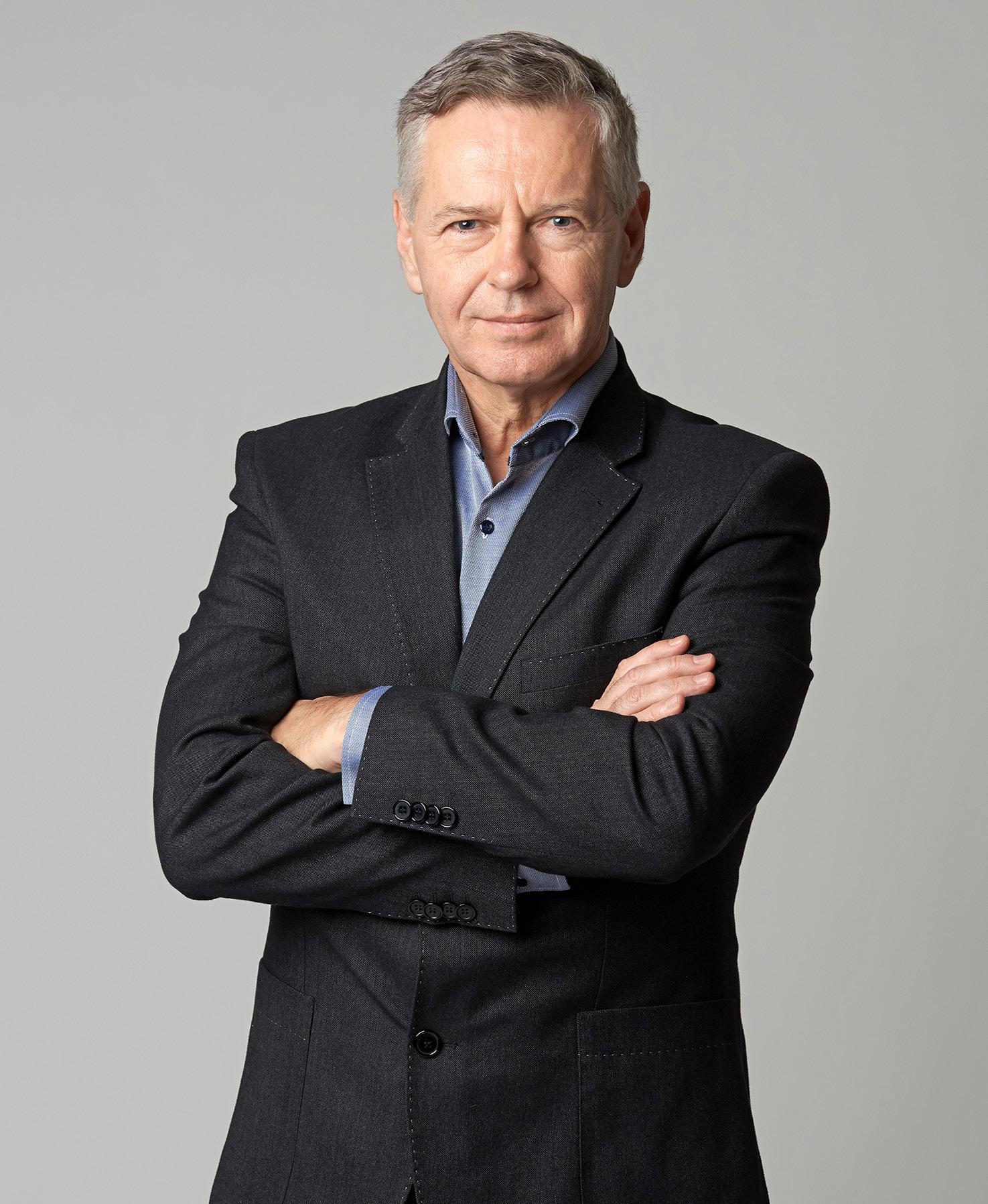
Most recently, EV chargers have been added through the acquisitions last year of Netherlands-based EV charging solution provider Ecotap and the Finnish Ensto Building Systems, which has the fastest growing EV charging stations business in Scandinavia.
The engineering and development or operations unit, meanwhile, had a turnover of EUR 60 mln last year, working for customers across Europe.
3 Key Phases
Károlyi identifies three critical phases in the past 30 years. The first was the six or seven years it took to complete
the “docking” period that he oversaw, integrating the Hungarian unit into its French parent.
The second significant period came in the next 10 years, with the restructuring that separated the units. The engineering/operations division, which previously serviced only the local market, quickly became more internationally significant for the group.
“On the one hand, there were a lot of investments, but on the other hand, we balanced development and are now generating profit for the company, and that has been the practice for the last 10
years.”
That brings us to the third critical phase.
“Since 2012 and the end of the financial crisis, I was working on how we could create a company culture that generates revenue even in difficult times,” Károlyi explains.
Concentrate on one national market, and you are dependent on its cycles, he says. But cover a region like Europe, and you can find different development trends in different countries at different times.
“That has proven true because, even in COVID, I don’t say it was easy, but we were able to keep pace in terms of evolution and development.”
With 2012 as the baseline, the idea was to grow the business twice as fast as the GDP percentage growth each year in 2013, ’14, and ’15. “But we realized 12%; not double but four times more growth in the local market!” He says the way Legrand is currently attacking the market, and opening new sectors with new products, is a continuation of that.
“During the COVID-era, we had 13-14% growth. This year, we expect
20%.
It’s a clear proof of this approach: that we try to get inspiration from different areas and businesses.” For the future, Károlyi wants to future-proof the company.
“We should be very open to change, even change that is unexpected: COVID, a war, whatever. We have to create some kind of early warning system.” He envisions a dashboard that tracks risk. If a red light starts flashing, it is a warning to be prepared.
The second step is to adapt the business to be flexible and open to reorganizing and acting on what is happening.
Thirdly, he says it is essential to keep up with technology “because, if you delay in the market, you lose your ability to change. If you wait to use or understand it, you miss your opportunity.”
Finally, there is a commitment to sustainability. Legrand Hungary is a member of the Business Council for Sustainable Development in Hungary, and Károly is a climate ambassador.
“If we want to save the world, we should agree that it has a cost. There are three main players: the people, the companies, and the governments. Everybody has a role, and everybody has to pay a bit more. The government should create regulations supporting activities that keep the world as it is. Companies should accept that, for these kinds of products, you may reach less profit. And for the people, well, everybody’s a consumer, so we should accept that green products are sometimes a bit more expensive than non-green products. Nobody can win alone.”
French-based industrial group Legrand is celebrating 30 years on the Hungarian market. László Károlyi, who became CEO in 2004, has been at the heart of it all during this period, and he tells Legrand’s story to the Budapest Business Journal in this exclusive interview.
ROBIN MARSHALL
László Károlyi, CEO of Legrand.
3 Special Report | 25www.bbj.hu Budapest Business Journal | September 23 – October 6, 2022
1,100
PRESENTED CONTENT
Green Matters: Financial Drivers Must be Aligned With Environmental Issues
On the matter of how the concept of sustainability accreditation will develop and how green and sustainability issues will further impact the real estate development markets, Ida Kiss, design director at DVM group, argues that ESG ratings, having gained broad attention, are and will be dominant in the near future.
 GARY J. MORRELL
GARY J. MORRELL
“The scheme, though, still lacks some clear benchmarking and therefore can be subject to creative application. Green building certifications can be incorporated into the ESG rating scheme and be reported as part of an efficient building stock that contributes to a better performance in terms of carbon impact,” she comments.
“Sustainability rating has become an essential component of any commercial

real estate development. Nevertheless, the actual environmental performance and energy efficiency of a building cannot be clearly connected to the rating level of a building as costs are strong drivers for the selection of technical solutions,” she adds.
“The soaring energy prices, on the other hand, are putting energy efficiency in the forefront and will surely be an urging factor for building ever more efficient buildings.”
In terms of design from a sustainable architectural and locational perspective, Kiss says that passive building components are the most efficient.
Better Modeling
“Orientation, the appropriate proportion of windows and shading; MEP [mechanical, electrical and plumbing] systems and lighting can be fine-
tuned and supported by intelligent building management systems that are now the bottleneck of narrowing the gap between the designed and real-life performance of buildings. Dynamic energy simulations can help the better modeling of energy needs and performance, and more precise engineering will come to the forefront,” Kiss explains.
According to the current Hungarian legislation on the energy efficiency of buildings, 25% must be supplied from renewables. However, seeing the soaring energy prices, this is a moderate requirement; we should and will aim higher, the design director insists.
As to how the city’s look, atmosphere, and quality of life can be improved through sustainability regulations, she says the three bottom lines of sustainability are economic, social and environmental measures.
“Cities are complex structures providing not just the architectural and infrastructural background of our lives, but also accommodate businesses and institutions. The urban design of a city has a high influence on the potential for prosperity and inclusivity that are the essence of a good quality of life for our urban dwellers,” Kiss argues.
Multi-centered, Mixed-use
“This is via improving small city centers and generating large-scale urban development toward a multi-centered, mixed-use structure that will result in more efficient use of the transportation network. A 24-hour urban district with good walkability will enable small businesses to thrive and help maintain a healthy social mix,” she says.
One significant result of raising sustainability awareness can be experienced in publicly accessible green areas becoming an integral part of commercial developments. Good quality parks and urban spaces attract small retail units and coworking offices that help the disruption of a too homogenous environment.
With regard to how an office interior will look in the next five years, Kiss argues that there must be an excellent reason for corporates to maintain large offices.
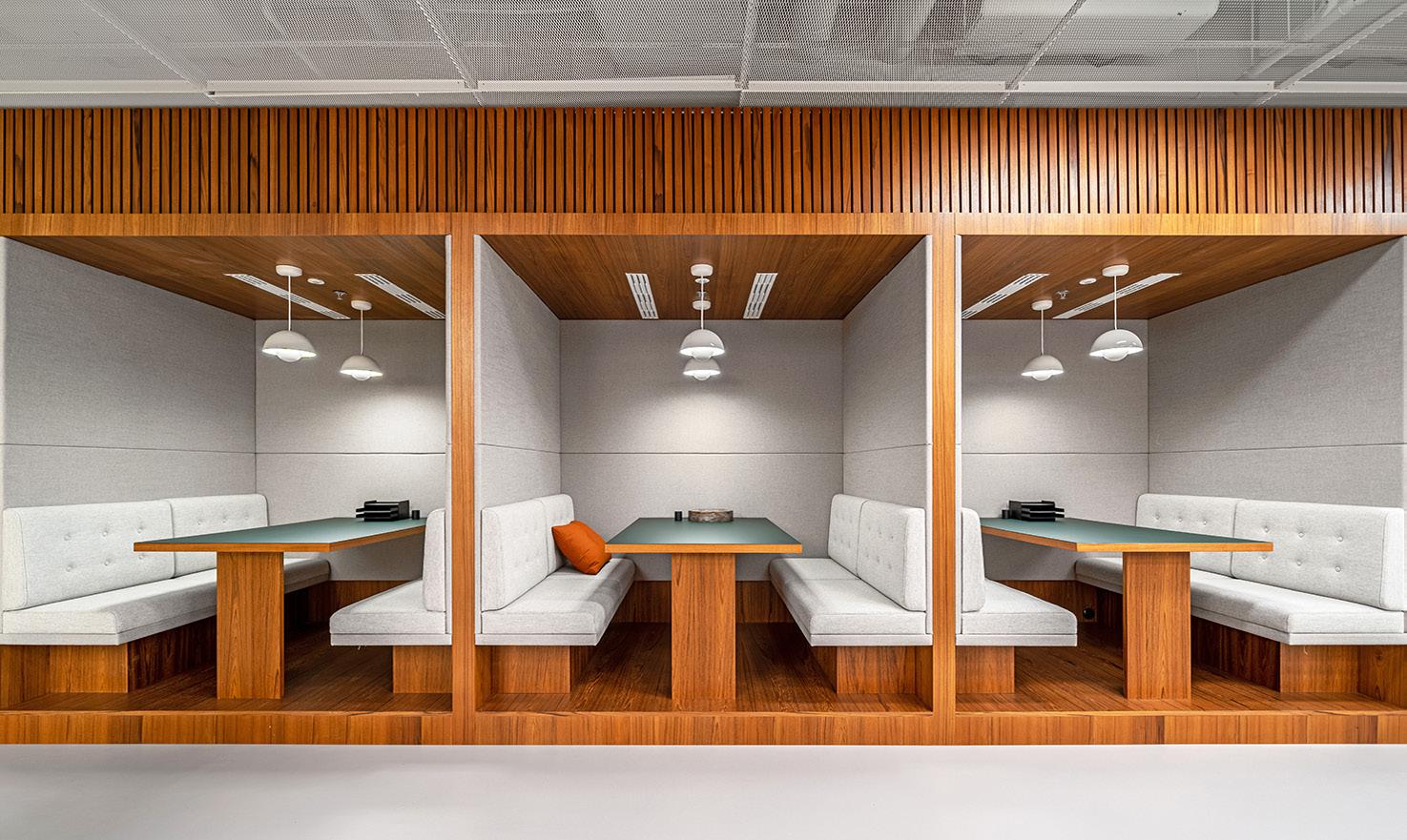
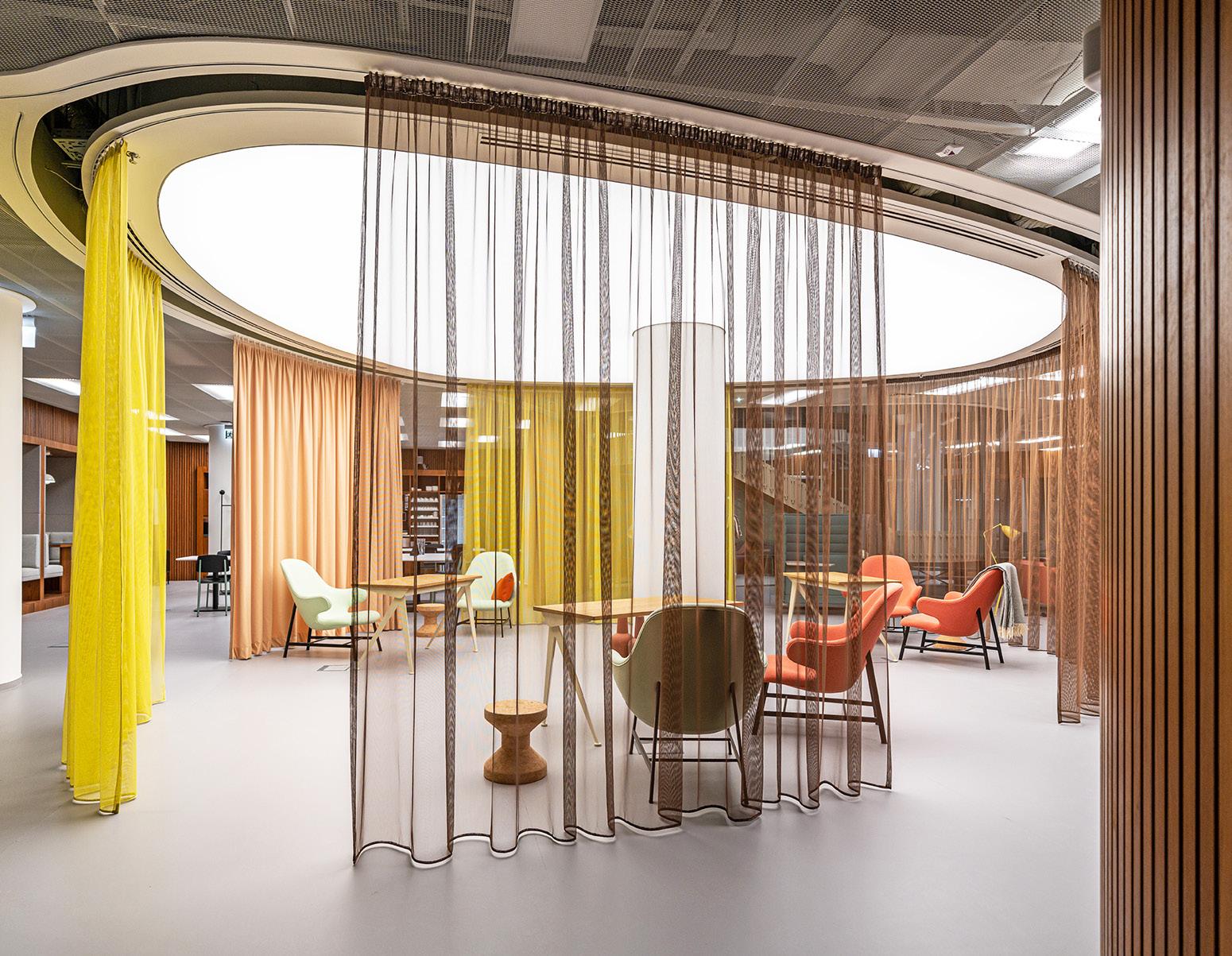
“Hyperconnectivity and hybrid working modes, along with increasing maintenance and operation costs, are leading to the reduction of office spaces. These will still be ‘the home’ of businesses, as they are the main interface between the business, their clients and employees. Their experiences should be addressed; whether it is about security, caring, collaboration or comfort, it is a question of emphasis on what will be aligned with the DNA of the company,” the director says.
“When financial drivers are aligned with urgent environmental issues, it will be the time when businesses really become green.
Increasing energy prices mean a significant change in the financial models. In reality, these are stronger drivers of behavioral change in operation than the climate emergency or our endangered biodiversity. It is delightful to see leading examples like the outdoor clothing retailer Patagonia [whose owner recently gave away the company to a charitable foundation to fight climate change], showing that green business can be real,” Kiss concludes.
This article is supported by:
Ida Kiss, design director at DVM group.
Photos show Szervita Square Building interiors design.
26 | 3 Special Report www.bbj.hu Budapest Business Journal | September 23 – October 6, 2022
in BriefNews
Electricity Produced by Solar Panels up 25.2% y.o.y. in June
The amount of electricity produced by solar panels increased by 25.2% in June compared to the same period of the previous year, according to the latest energy statistics report of the Hungarian Energy and Public Works Regulatory Office (MEKH), writes novekedes.hu [Growth].
It added that solar energy accounted for three-quarters of the electricity produced from renewable energy sources and 22% of the total gross electricity produced. According to the announcement, national primary energy production was 32.14 petajoules (PJ) in June, a decrease of 1.39 PJ compared to the same period of the previous year.
Production of primary renewable energy sources increased by 0.37 PJ, while energy production from nuclear sources increased by 1.15 PJ, primary fossil energy sources by 0.44 PJ, and other non-renewable sources decreased by 0.18 compared to last June.
NAP Books HUF
522 mln Profit
NAP, a solar power company listed on the Budapest Stock Exchange’s Xtend platform for SMEs, projects
a significant increase in full-year earnings, based on first-half results posted on the BSE’s website.
In its announcement, the firm said it had an after-tax profit of HUF 522 million on net revenue of HUF 1.1 billion in H1. For the full 2021 calendar year, it had an after-tax profit of HUF 99 mln on net revenue of HUF 581 mln. NAP estimated it would finish 2022 with an after-tax
profit of HUF 1.1 bln-1.3 bln on net revenue of HUF 2.4 bln-2.5 bln.
The company noted that it had decided to move its 23 MW capacity solar power portfolio out of Hungary’s feed-in tariff system and signed a one-year contract with a local energy trader at a higher, fixed price, effective from May 1. Nap added that its board plans to extend the contract for the capacity for the 20232024 period.
Event Organizers Worried by Rising Energy Costs
There are big question marks in the minds of event organizers because no one knows how the new energy

prices will affect the exhibition industry, Gábor Ganczer, president of the Association of Hungarian Event Organizers and Service Providers (MaReSz), and CEO of Hungexpo Zrt. told business daily Világgazdaság. After a successful first half of the year and an eventful summer, the event organizers in Hungary expect a much quieter H2, he said. Due to the explosion in energy prices, they have been forced to re-plan and set flexible pricing based on the stock exchange rates of electricity and gas. Additionally, hotels preparing to go into “utility quarantine” could push the entire sector into the red, Ganczer added.
Alteo Announces Intent to Launch HUF 20 bln Bond Program
Listed alternative energy company Alteo on September 14, announced its intention to launch a HUF 20 bln bond program in the fall, according to a report by state news wire MTI.
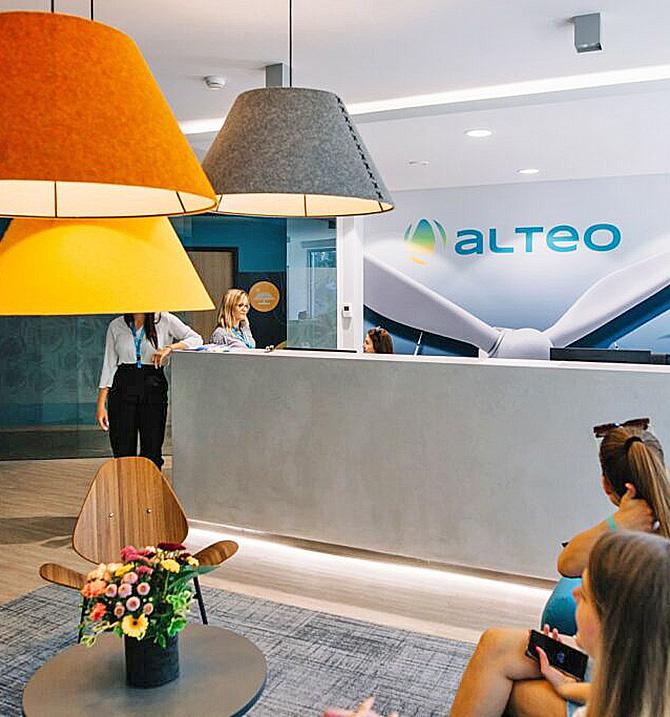
Alteo aims to tap the market for as much as HUF 15 bln in Q4 2022, in the first phase of the bond program. It could issue bonds denominated in forints or euros with a term of between 1.5 and three years. As part of the proceeds will be used for “green” investments, green bonds could
be issued in the framework of the program. The securities would be listed on the Budapest Stock Exchange’s XBond platform.
With the program, Alteo aims to ensure the resources to grow its business, finance increased needs for working capital, and boost security reserves to allow the company to react “with maximum flexibility” to future opportunities and challenges in the extraordinary market situation. Erste Bank Hungary is supporting Alteo in its bond program.
 Green Business
Green Business
EXCLUSIVE DISTRIBUTOR
BREEAM Excellent, Access4You Gold CBRE, Cushman & Wakefield

https://www.futurealgroup.
Hungária Greens Kft. (100) 1087 Budapest, Hungária körút 30. (1) 785-5208 info@atenor.hu
BREEAM Very Good Futureal (100) 1112 Budapest, Boldizsár utca 1–3. (1) 266-2181 info@ futurealgroup.com
BREEAM Outstanding / Excellent; BREEAM Communities

HB Reavis Ingatlan fejlesztési Alap (100)
1133 Budapest, Árbóc utca 1–3. (1) 238-0359 info@hbreavis.com
LEED Gold A (100) 2051 Biatorbágy, Sasbérc út 1. (1) 382-7560, (70) 370-6666 meszarosg@ topark.hu
LEED GOLD operation and maintenance Cushman & Wakefield, CBRE A A
1139 Budapest, Váci út 81–83. (1) 412-3680 leasing@gtc.hu
(100)
Hungary, Akzo-Nobel
Gladiátor
Befektetési Alap (100)
1138 Budapest, Dunavirág utca 2–6. (1) 225-6600 hungary@ cpipg.com
1095 Budapest, Lechner Ödön fasor 10/B (20) 950-2585 dmakk@ trigranit.com
1133 Budapest, Váci
(1) 501-2800 office@caimmo.hu

1143 Budapest, Gizella út 51–57. (1) 451-4760 sales@wing.hu
1134 Budapest, Váci út 45. (1) 236-0435 mail@ immofinanz.com
28 | 3 Special Report www.bbj.hu Budapest Business Journal | September 23 – October 6, 2022 Green Office Buildings Ranked by net office space Rank COmpany WeBsite n et O ffi C e spa C e (sqm) tO tal GRO ss B uildin G a R ea (sqm) nO O f levels a ve R a G e level size (sqm) Cu RR ently leasa B le O ffi C e spa C e ( sqm ) m inimum lease te R ms (yea R s) a ve R a G e m O nthly R ent O n a u G . 1, 2022 ( e u RO /sqm) a ve R a G e m O nthly se R vi C e C ha RG e O n a u G . 1, 2022 ( e u RO /sqm) y ea R esta B lished CuRRent majOR tenants GReen seRviCes Stage of green certification rating l evel O f Ce R tifi C ati O n (BR eeam ) Real estate a G en C y(ies) OR a G ent(s) OWneRship (%) hunGaRian nOn hunGaRian addRess phOne email G R een ene RG y Bi C y C le st OR a G e p u B li C t R ansp OR tati O n O W n se W a G e mana G ement i ndependent p OW e R supply e ne RG y effi C ien C y p ROGR am n atu R al ventilati O n d ayli G ht and m O ti O n sens OR s lOC al R e C y C lin G G R ey W ate R R euse e le C t R i C / h y BR id C a R C ha RG e R s i nte R nal ya R d W ith pa R k G R een ROO f Rene W a B le ene RG y n et WOR kin G hu B p lannin G phase f inal phase Classifi C ati O n O f existin G B uildin G 1 aRéna Business Campus www.arenabusinesscampus.hu 66,984 71,859 9 2,600 A 5 15.50–16.50 1,300 HUF A ✓ ✓ ✓ ✓ ✓ ✓ ✓ ✓
2 Budapest One
com/hu/projects/budapestone/ 66,299 107,424 8 7,300 A 5 A A A ✓ ✓ ✓ ✓ ✓ ✓ ✓ ✓ ✓ ✓ ✓ ✓ ✓
3 aGORa Budapest www.agorabudapest.com 65,000 126,500 17 A 4,000 5 A A Raiffeisen Bank, bp, Huawei, Novy Steel, Qubes, Relay, Manna ABC ✓ ✓ ✓ ✓ ✓ ✓ ✓ ✓ ✓ ✓ ✓ ✓ ✓
4 tópaRk Be my City www.topark.hu 55,000 220,000 4 Max. 48 A 5 A A A A ✓ ✓ ✓ ✓ ✓ ✓ ✓ ✓ ✓ ✓ ✓ ✓ A A A A A
5 CenteRpOint www.gtc.hu 36,916 40,900 9 5,600 18,000 5 15.50 4.30 Honeywell, Ecolab ✓ ✓ ✓ ✓ ✓ ✓ ✓ ✓ ✓ ✓ ✓
6 GateWay OffiCe paRk www.gatewaybc.hu www.cpipgroup.hu 35,900 50,800 9 1,500 402 5 13–14.50 1,590 HUF 2008 Samsung, Magyar Posta, Atmedia, KRKA, Mortoff, Opten, Randstad, Techwave, La Vida Event, Orbico, AmRest, Sonova, Prémium Pénztárak, CPI
✓ ✓ ✓ ✓ ✓ ✓ A A ✓ BREEAM Very Good CPI Property Group
7 millennium GaRdens https://millenniumgardens.hu 32,910 37,370 11 3,850 A 5 A A 2018 A ✓ ✓ ✓ ✓ ✓ ✓ ✓ ✓ ✓ A A ✓ BREEAM Very Good A Revetas Capital (100)
8 Capital squaRe www.caimmo.com www.capitalsquare.hu 32,000 38,000 9 A A 3 14,50–15,50 1,820 HUF Albemarle, House of Business, Ferrero A A A A A A A A A A A A A A A A A A BREEAM in use Excellent Cushman & Wakefield CA IMMO (100)
út 76.
9 hunGáRia OffiCe paRk www.wing.hu 31,432 39,900 6 A 4,945 3 11–13.50 3.40 1999–2000 Siemens, TÜV Rheinland, TK Elevator ✓ ✓ ✓ ✓ ✓ ✓ ✓ ✓ ✓ ✓ ✓ A A A
III Ingatlan
10 myhive átRium paRk www.myhive-offices.com/hu 31,200 38,669 9 4,500 A 5 14.50–17 1,900 HUF 2009 A ✓ ✓ ✓ ✓ ✓ ✓ ✓ A A ✓ BREEAM Very Good JLL, Robertson Immofinanz AG (100)
Erste Nyíltvégű Ingatlan Befektetési Alap (100)
BREEAM Very Good Avestus Real Estate (100)
1095 Budapest, Soroksári út 44. (1) 920-2193 erstealapkezelo@ erstealapkezelo.hu
1054 Budapest, Szabadság tér 7. (1) 302-9010 anett.eles@ bankcenter.hu
BREEAM in
Excellent Cushman & Wakefield A A

BREEAM Very Good Futureal (100)
1138 Budapest, Népfürdő utca 22. (1) 412-3680 leasing@gtc.hu
1083 Budapest, Szigony utca 26–30. (1) 266-2181 office@ futurealgroup.com
BREEAM Very Good; Access4you JLL, Cushman & Wakefield IMMOFINANZ AG (100)
BREEAM Excellent
BREEAM Very Good
JLL, hungary@ eu.jll.com, Cushman & Wakefield, liberty@ cushwake.com

1095 Budapest, Soroksári út 30–34. (1) 236-0435 mail@ immofinanz.com
Gladiátor VII. Ingatlan Befektetési Alap (100)
Infogroup (100)
1097 Budapest, Könyves Kálmán körút 34. (1) 451-4760 sales@wing.hu
1115 Budapest, Bartók Béla út 105–113. (1) 481-4530 info@infogroup.hu
1117 Budapest, Budafoki út 91–93. (1) 501-2800 office@caimmo.hu
1134 Budapest, Dózsa György út 61–63. (1) 412-3680 leasing@gtc.hu
1117 Budapest, Irinyi József utca 4–20. (1) 374-3040 office.hungary@ cbre.com
1097 Budapest, Könyves Kálmán körút 11. balazs.szecsy@ cbre.com
1113 Budapest, Bocskai út 134–146. (1) 888-0395 gabor.kertesz@ cbre.com
3 Special Report | 29www.bbj.hu Budapest Business Journal | September 23 – October 6, 2022 Rank COmpany WeBsite n et O ffi C e spa C e (sqm) tO tal GRO ss B uildin G a R ea (sqm) nO . O f levels a ve R a G e level size (sqm) Cu RR ently leasa B le O ffi C e spa C e ( sqm ) m inimum lease te R ms (yea R s) a ve R a G e m O nthly R ent O n a u G 1, 2022 ( e u RO /sqm) a ve R a G e m O nthly se R vi C e C ha RG e O n a u G 1, 2022 ( e u RO /sqm) y ea R esta B lished CuRRent majOR tenants GReen seRviCes Stage of green certification rating l evel O f Ce R tifi C ati O n (BR eeam ) Real estate a G en C y(ies) OR a G ent(s) OWneRship (%) hunGaRian nOn hunGaRian addRess phOne email G R een ene RG y Bi C y C le st OR a G e p u B li C t R ansp OR tati O n O W n se W a G e mana G ement i ndependent p OW e R supply e ne RG y effi C ien C y p ROGR am n atu R al ventilati O n d ayli G ht and m O ti O n sens OR s lOC al R e C y C lin G G R ey W ate R R euse e le C t R i C / h y BR id C a R C ha RG e R s i nte R nal ya R d W ith pa R k G R een ROO f Rene W a B le ene RG y n et WOR kin G hu B p lannin G phase f inal phase Classifi C ati O n O f existin G B uildin G 11 mill paRk www.millpark.hu 30,315 50,026 8 A A 5 A A 2018 A ✓ ✓ ✓ ✓ ✓ ✓ ✓ ✓ A A ✓
12 Bank CenteR www.bankcenter.hu 30,041 52,180 11 700–1400 A 5 A A 1996 A ✓ ✓ ✓ ✓ ✓ ✓ ✓ ✓ A A ✓
13 duna tOWeR www.dunatower.hu 29,800 31,500 15 850 2,800 3 16.80 4.67 2006 IBM, Metlife, TMF Group, GTC ✓ ✓ ✓ ✓ ✓ ✓ ✓ ✓ ✓ ✓ ✓ ✓
use
14 CORvin innOvatiOn Campus https:// www.futurealgroup.com 29,280 31,833 8 A A 5 A A A ✓ ✓ ✓ ✓ ✓ ✓ ✓ ✓ ✓ ✓ ✓ ✓ ✓
15 myhive halleR GaRdens www.myhive-offices.com/hu 28,520 34,217 8 4,000 A 5 14.50–17.50 1,900 HUF 2009 A ✓ ✓ ✓ ✓ ✓ ✓ ✓ A A ✓
16 liBeRty iROdaház www.wing.hu 28,480 67,827 9 2,400 21,614 5 15.75–16.75 4.50 A ✓ ✓ ✓ ✓ ✓ ✓ ✓ ✓ ✓ ✓ A A ✓ ✓
17 BaRtók udvaR ii www.bartokudvar.hu 27,000 37,300 9 2,500–4000 A 5 A A 2019 NAK, Multisoft, Innobyte, MindentMent, MCBauchemie ✓ ✓ ✓ ✓ ✓ ✓ ✓ ✓ ✓ A A ✓
18 ip West www.caimmo.com www.ipwest.hu 26,500 31,900 8 A A 3 14.50–15 2,060 HUF 2009 A A A A A A A A A A A A A A A A A A A BREEAM in Use Very Good Avison Young CA IMMO (100)
19 pillaR www.gtc.hu 26,309 29,043 7 4,200 315 3 15.90 A ExxonMobil ✓ ✓ ✓ ✓ ✓ ✓ ✓ ✓ ✓ ✓ ✓ ✓ ✓ LEED Gold A A
20 sCienCe paRk www.sciencepark.hu 26,102 29,498 8 900 A 5 A A 2002 A ✓ ✓ ✓ ✓ ✓ ✓ A A A A ✓ BREEAM in Use Very Good CBRE Woodpecker Acquisitions (100)
21 népliGet CenteR www.nepligetcenter.com 26,000 28,800 8 900 A 5 A A 2010 A ✓ ✓ ✓ ✓ ✓ ✓ ✓ ✓ ✓ A A ✓ BREEAM Very Good Cushman & Wakefield MCAP Global Finance (100)
22 dOROttya udvaR www.dorottya.net 25,977 29,073 4 6,250 A 5 A A 2002 A ✓ ✓ ✓ ✓ ✓ A A ✓ BREEAM Excellent Cushman & Wakefield (100)
BREEAM
Property
Kopaszi Gát Kft. (100)
OTP Prime Ingatlan befektetési Alap (100)
1117 Budapest, Budafoki út (1) 241-0100 sales@budapart.hu
1138 Budapest, Bence utca 1. (1) 336-0900 alapkezelo@ otpingatlanalap.hu
BREEAM
Very Good Cushman & Wakefield, ESTON CA IMMO (100)
BREEAM Very Good (100)
1092 Budapest, Köztelek utca 6. (1) 501-2800 office@caimmo.hu
1082 Budapest, Bókay utca (1) 266-2181 office@futureal.hu, farkas.hajnalka@ otpingatlanalap.hu
BREEAM Very Good, LEED Gold
BREEAM Excellent, Access4You Gold CBRE, Cushman & Wakefield
Erste Nyíltvégű Ingatlan Befektetési Alap (100)
VGF Invest Kft. (100)
1133 Budapest, Váci út 80. (1) 920-2193 erstealapkezelo@ erstealapkezelo.hu
1139 Budapest, Fiastyúk utca 4–8. (1) 785-5208 info@atenor.hu
LEED Gold for
Interiors Horizon Development (100)
1068 Budapest, Dózsa György út 84/B (1) 473-1209 leasing@horizon development.hu
BREEAM
Cushman & Wakefield, CBRE SkyGreen Buildings Kft. (100)
Torony Ingatlan Befektetési
1138 Budapest, Váci út 129–133. (1) 785-5208 info@atenor.hu
1123 Budapest, Alkotás utca 50. (70) 773-2690 szoboszlai.roland@ atq.hu
1117 Budapest, Magyar Tudósok körútja 11. (1) 412-3680 leasing@gtc.hu
Váci Corner Offices Kft. (100)
1138 Budapest, Váci út 144–150. (1) 580-2280 info@ vacicorneroffices.hu

30 | 3 Special Report www.bbj.hu Budapest Business Journal | September 23 – October 6, 2022 Rank COmpany WeBsite n et O ffi C e spa C e (sqm) tO tal GRO ss B uildin G a R ea (sqm) nO . O f levels a ve R a G e level size (sqm) Cu RR ently leasa B le O ffi C e spa C e ( sqm ) m inimum lease te R ms (yea R s) a ve R a G e m O nthly R ent O n a u G . 1, 2022 ( e u RO /sqm) a ve R a G e m O nthly se R vi C e C ha RG e O n a u G . 1, 2022 ( e u RO /sqm) y ea R esta B lished CuRRent majOR tenants GReen seRviCes Stage of green certification rating l evel O f Ce R tifi C ati O n (BR eeam ) Real estate a G en C y(ies) OR a G ent(s) OWneRship (%) hunGaRian nOn hunGaRian addRess phOne email G R een ene RG y Bi C y C le st OR a G e p u B li C t R ansp OR tati O n O W n se W a G e mana G ement i ndependent p OW e R supply e ne RG y effi C ien C y p ROGR am n atu R al ventilati O n d ayli G ht and m O ti O n sens OR s lOC al R e C y C lin G G R ey W ate R R euse e le C t R i C / h y BR id C a R C ha RG e R s i nte R nal ya R d W ith pa R k G R een ROO f Rene W a B le ene RG y n et WOR kin G hu B p lannin G phase f inal phase Classifi C ati O n O f existin G B uildin G 23 BudapaRt CentRal www.budapart.hu/hu/irodak 25,793 28,247 7 3,500 25,793 5 18–19 1,800 HUF 20212023 A ✓ ✓ ✓ ✓ ✓ ✓ ✓ ✓ ✓ ✓ ✓ ✓ ✓
Market
24 váCi GReens B épület www.vacigreens.hu 24,770 25,303 6 A A 5 A A 2016 A ✓ ✓ ✓ ✓ ✓ ✓ ✓ ✓ ✓ ✓ ✓ ✓ A A ✓
Excellent
25 City Gate www.caimmo.com www.citygate.hu 24,000 26,000 8 A A 5 15.50–16.50 2,040 HUF 1999 TresorIT, Continental A A A A A A A A A A A A A A A A A A
in Use
26 CORvin teChnOlOGy paRk 1-2 www.futurealgroup.com 23,749 27,390 8 A A A A A A ✓ ✓ ✓ ✓ ✓ ✓ ✓ ✓ ✓ ✓ A A ✓
27 pROmenade GaRdens www.promenadegardens.hu 23,311 A 5 A A A A A 2017 A ✓ ✓ ✓ ✓ ✓ ✓ ✓ ✓ ✓ ✓ A A ✓
28 váCi GReens f épület www.vacigreens.hu 23,305 25,053 8 3,100 3,938 5 17–18 1,450 HUF 2020 Bonduelle, Intrum, Mazars, Mott MacDonald, NN, Sanofi ✓ ✓ ✓ ✓ ✓ ✓ ✓ ✓
29 paRk atRium www.parkatrium.hu 22,500 42,000 8 3,400 A A A A 2004 A ✓ ✓ ✓ ✓ ✓ ✓ ✓ ✓ ✓ A A ✓
Commercial
30 váCi GReens e épület www.vacigreens.hu 21,525 23,445 8 2,900 A 5 A A 2020 A ✓ ✓ ✓ ✓ ✓ ✓ ✓ ✓ ✓ ✓ ✓ A A ✓
Excellent, Access4you
31 alkOtás pOint www.alkotaspoint.hu ASSET MANAGEMENT 21,260 25,100 8+3 A 260 5 A A 2002 Euronet, Medicover, NuSkin, Signal, Eclipse, Hold Alapkezelő ✓ ✓ ✓ ✓ ✓ ✓ ✓ ✓ A A ✓ ✓ BREEAM Very Good, A4Y ATQ Property Zrt.
Alap (100)
32 eRiCssOn hOuse www.gtc.hu 21,100 21,100 8 3,500 A 5 A A 2017 Ericsson ✓ ✓ ✓ ✓ ✓ ✓ ✓ ✓ ✓ ✓ ✓ ✓ ✓ LEED Gold A A
33 váCi CORneR OffiCes www.vacicorneroffices.hu 21,047 33,000 8 2,882 A A A A 2014 A ✓ ✓ ✓ ✓ ✓ A A A A ✓ BREEAM Excellent
A A A
A A A A A A A A A A A A A A
Erste Nyíltvégű Ingatlan Befektetési Alap (100)
1117 Budapest, Magyar Tudósok kórútja 11. (1) 412-3680 leasing@gtc.hu
1134 Budapest, Váci út 47. (1) 374-3040
1134 Budapest, Váci út 29–31. (1) 920-2161 erstealapkezelo@ erstealapkezelo.hu
Good
IMMO AG (100)
(100)
1134 Budapest, Váci út 35. (1) 429-5050 office@simmoag.hu
1134 Budapest, Váci út 23-27. (1) 382-9100 property@ skanska.hu

1117 Budapest, Alíz utca 3. (1) 327-2050 office@robertson.hu
1123 Budapest, Alkotás utca 55–61. (70) 451-2589 szajlai.ipacs. andrea@wfacility.hu
Erste Nyíltvégű Ingatlan Befektetési Alap (100)
1133 Budapest, Váci út 96–98. (1) 920-2161 erstealapkezelo@ erstealapkezelo.hu
Zrt.
Erste Nyíltvégű Euró Ingatlan Befektetési Alap (100)
ZFP Realitní Fond (100)
1134 Budapest, Váci út 43. (1) 920 2161 erstealapkezelo@ erstealapkezelo.hu
1138 Budapest, Bence utca 3. info@zfpinvest.com
1074 Budapest, Rákóczi út 70–72. (1) 422-3550 info@epkar.hu
1062 Budapest, Teréz körút 55–57. (1) 785-4985 info@celand.hu
(100)
Cushman
1117 Budapest, Gábor Dénes utca 2. (30) 822-5466
1095 Budapest, Lechner Ödön fasor 8. (1) 501-2800 office@caimmo.hu
3 Special Report | 31www.bbj.hu Budapest Business Journal | September 23 – October 6, 2022 Rank COmpany WeBsite n et O ffi C e spa C e (sqm) tO tal GRO ss B uildin G a R ea (sqm) nO . O f levels a ve R a G e level size (sqm) Cu RR ently leasa B le O ffi C e spa C e ( sqm ) m inimum lease te R ms (yea R s) a ve R a G e m O nthly R ent O n a u G . 1, 2022 ( e u RO /sqm) a ve R a G e m O nthly se R vi C e C ha RG e O n a u G . 1, 2022 ( e u RO /sqm) y ea R esta B lished CuRRent majOR tenants GReen seRviCes Stage of green certification rating l evel O f Ce R tifi C ati O n (BR eeam ) Real estate a G en C y(ies) OR a G ent(s) OWneRship (%) hunGaRian nOn hunGaRian addRess phOne email G R een ene RG y Bi C y C le st OR a G e p u B li C t R ansp OR tati O n O W n se W a G e mana G ement i ndependent p OW e R supply e ne RG y effi C ien C y p ROGR am n atu R al ventilati O n d ayli G ht and m O ti O n sens OR s lOC al R e C y C lin G G R ey W ate R R euse e le C t R i C / h y BR id C a R C ha RG e R s i nte R nal ya R d W ith pa R k G R een ROO f Rene W a B le ene RG y n et WOR kin G hu B p lannin G phase f inal phase Classifi C ati O n O f existin G B uildin G 34 univeRzum www.gtc.hu 20,700 20,700 6 A 5 A A 2020 evosoft ✓ ✓ ✓ ✓ ✓ ✓ ✓ ✓ ✓ ✓ ✓ ✓ ✓ LEED Gold A A
35 White hOuse www.whitehousebudapest.hu 20,404 21,574 9 A A A A A A ✓ ✓ ✓ ✓ ✓ ✓ ✓ ✓ ✓ ✓ ✓ A
A LEED Gold CBRE A A
36 visiOn tOWeRs 20,312 25,178 8 A A A A A A A A A A A
37 RiveR estates www.simmoag.hu 20,245 30,141 10 2,700 A A A A 1998 A ✓ ✓ ✓ ✓ ✓ ✓ ✓ BREEAM Very
S
38 h2OffiCes - i. fázis www.skanska.hu 20,114 26,820 9 2,500 5 17 4 A ✓ ✓ ✓ ✓ ✓ ✓ ✓ ✓ ✓ ✓ ✓ ✓ A A
39 OffiCe GaRden iv www.officegarden.hu 19,663 21,200 7 A A A A A 2019 A ✓ ✓ ✓ ✓ A A ✓ LEED Gold
40 hillside OffiCes www.hillsideoffices.hu 19,656 21,923 8 2,740 A A A A 2018 A ✓ ✓ ✓ ✓ ✓ ✓ ✓ ✓ A A ✓ LEED Gold W-Facility Kft. A A
41 nORdiC liGht 19,629 19,668 8 A A A A A 2016 A ✓ ✓ ✓ ✓ ✓ ✓ ✓ ✓ ✓ A A A A ✓ Pre-LEED Gold
42 advanCe tOWeR i ii www.erstealapkezelo.hu 18,920 19,981 8 A A A A A A ✓ ✓ ✓ ✓ ✓ ✓ ✓ ✓ ✓ ✓ ✓ A A ✓ BREEAM Very Good, WELL Előminősítés Eston
42 váCi GReens C épület www.vacigreens.hu 18,920 20,035 6 A A A A A 2015 A ✓ ✓ ✓ ✓ ✓ ✓ ✓ ✓ ✓ ✓ A A ✓ BREEAM Excellent
44 R70 OffiCe COmplex www.epkar.hu 18,700 19,000 10 A A 3 A A 2002 A A A A A A A A A A A A A A A A A A A BREEAM in Use Very Good Colliers Épkar Zrt. (100)
45 eiffel téR iROdaház www.eiffelter.hu 18,500 23,500 7 3,200 A A A A 2008 A ✓ ✓ ✓ ✓ ✓ ✓ ✓ ✓ A A ✓ BREEAM Excellent A A
45 infOpaRk d épület 18,500 A 7 A A A A A 2007 A ✓ ✓ ✓ ✓ ✓ ✓ ✓ ✓ A A A A A A ✓ LEED Silver A
47 millennium tOWeR iii www.millennium-towers.hu www.caimmo.com 18,000 21,000 8 A A 5 15.50–17 A 2008 A A A A A A A A A A A A A A A A A A A BREEAM in Use Very Good
& Wakefield, Robertson CA IMMO (100)
BREEAM
Very Good
(100)
Development (100)
1117 Budapest, Buda-part tér 2. (1) 429-5050 office@simmoag.hu
1113 Budapest, Diószegi út 37. (1) 473-1209 leasing@horizon development.hu
BREEAM
Very
(100)
Cushman & Wakefield, ESTON International Bpart Aspius Kft. (100)
Codic Hungary (100)
1036 Budapest, Lajos utca 48–66. (1) 266-9441 info@adventum.hu
1117 Budapest, Dombóvári út 27. (1) 241-0081 sales@budapart.hu
1134 Budapest, Dózsa György út 144–148. (1) 266-6000 info.hungary@ codic.eu
(100)
CA IMMO (100)
Cushman & Wakefield, Robertson CA IMMO (100)
Group (100)
1027 Budapest, Henger utca 2. (1) 266-9441 info@adventum.hu
1114 Budapest, Bartók Béla út 43–47. (1) 501-2800 office@caimmo.hu
1093 Budapest, Lechner Ödön fasor 6. (1) 501-2800 office@caimmo.hu
1117 Budapest, Alíz utca 4. (1) 382-7020 grtgroup@ grtgroup.hu
Torony Ingatlan Befektetési Alap (100)
(100)
1134 Budapest, Kassák Lajos utca 19. (70) 773-2690 szoboszlai.roland@ atq.hu
1082 Budapest, Futó utca 47–53. (1) 266-2181 office@futureal.hu, farkas.hajnalka@ otpingatlanalap.hu
Cushman
IMMO (100)
1095 Budapest, Lechner Ödön fasor 6. (1) 501-2800 office@ caimmo.com
1138 Budapest, Váci út 193. (1) 412-3680 leasing@gtc.hu
1138 Budapest, Váci út 117–119.
32 | 3 Special Report www.bbj.hu Budapest Business Journal | September 23 – October 6, 2022 Rank COmpany WeBsite n et O ffi C e spa C e (sqm) tO tal GRO ss B uildin G a R ea (sqm) nO O f levels a ve R a G e level size (sqm) Cu RR ently leasa B le O ffi C e spa C e ( sqm ) m inimum lease te R ms (yea R s) a ve R a G e m O nthly R ent O n a u G 1, 2022 ( e u RO /sqm) a ve R a G e m O nthly se R vi C e C ha RG e O n a u G 1, 2022 ( e u RO /sqm) y ea R esta B lished CuRRent majOR tenants GReen seRviCes Stage of green certification rating l evel O f Ce R tifi C ati O n (BR eeam ) Real estate a G en C y(ies) OR a G ent(s) OWneRship (%) hunGaRian nOn hunGaRian addRess phOne email G R een ene RG y Bi C y C le st OR a G e p u B li C t R ansp OR tati O n O W n se W a G e mana G ement i ndependent p OW e R supply e ne RG y effi C ien C y p ROGR am n atu R al ventilati O n d ayli G ht and m O ti O n sens OR s lOC al R e C y C lin G G R ey W ate R R euse e le C t R i C / h y BR id C a R C ha RG e R s i nte R nal ya R d W ith pa R k G R een ROO f Rene W a B le ene RG y n et WOR kin G hu B p lannin G phase f inal phase Classifi C ati O n O f existin G B uildin G 48 BudapaRt Gate www.budapartgate.hu 17,838 30,266 12 A A A A A 2018–2020 A ✓ ✓ ✓ ✓ ✓ ✓ ✓ ✓ ✓ ✓ ✓ LEED GOLD S IMMO AG
49 paRkside OffiCes 17,500 28,000 5 4,000 17,500 5 18–20 A 2025 A ✓ ✓ ✓ ✓ ✓ ✓ ✓ ✓ ✓ ✓ ✓ ✓ ✓ A A ✓ A A LEED Platinum, Access4You Horizon
50 Buda squaRe 17,400 18,400 6 A A A A A A ✓ ✓ ✓ ✓ ✓ ✓ ✓ A A ✓ BREEAM Very Good A
51 BudapaRt City https://www.budapart.hu/hu/ irodak 17,260 19,752 7 A 3,196 5 16.50 1,800 HUF 20192021 A ✓ ✓ ✓ ✓ ✓ ✓ ✓ ✓ ✓ ✓ ✓ ✓ ✓ LEED Gold
52 GReen COuRt OffiCe www.greencourtoffice.hu 17,249 18,490 8 1,267 2,200 5 16.75 4.10 A A ✓ ✓ ✓ ✓ ✓ ✓ ✓ ✓ ✓ ✓ ✓ ✓ Excellent
53 maRGit palaCe www.margitpalace.com 17,047 19,227 8 A A A A A 2005 A ✓ ✓ ✓ ✓ ✓ ✓ ✓ A A ✓
A
54 BaRtók ház www.caimmo.com www.bartok-haz.hu 17,000 30,000 9 A A 3 14–14.50 1,630 HUF 2003 DXC, Novartis A A A A A A A A A A A A A A A A A A BREEAM in Use Very Good
54 millennium tOWeR ii www.caimmo.com 17,000 18,600 8 A A 5 15.50–17 A 2008 Nestlé, KLM A A A A A A A A A A A A A A A A A A
in Use
Good
56 OffiCe GaRden iii www.officegarden.hu 16,922 18,500 6 A A A A A 2017 A ✓ ✓ ✓ ✓ A A ✓ LEED Gold GRT
57 GReen hOuse www.diofaalapkezelo.hu ASSET MANAGEMENT 16,528 18,300 8+3 2,500 5 A A 2012 Avis Budget Group, MSCI, Deichmann, Isys-On, ABRS Holding, Diófa Alapkezelő ✓ ✓ ✓ ✓ ✓ ✓ ✓ ✓ ✓ ✓ ✓ ✓ A A ✓ ✓ LEED Platinum, A4Y ATQ Property Zrt.
58 CORvin One www.futurealgroup.com 16,352 17,867 7 A A A A A A ✓ ✓ ✓ ✓ ✓ ✓ ✓ ✓ ✓ ✓ A A ✓ BREEAM Very Good
59 millennium tOWeR i www.millennium-towers.hu www.caimmo.com 16,300 18,800 7 A A 5 15.50–17 A 2006 Cognizant, Vodafone A A A A A A A A A A A A A A A A A A BREEAM in Use Very Good
& Wakefield, Robertson CA
60 GtC metRO www.gtc.hu 16,182 16,182 9 A A 5 A A 2008 MKB ✓ ✓ ✓ ✓ ✓ ✓ ✓ ✓ ✓ ✓ ✓ ✓ BREEAM in use Excellent A A
61 váCi GReens a épület www.vacigreens.hu 15,693 24,803 6 A A A A A 2013 A ✓ ✓ ✓ ✓ ✓ ✓ ✓ ✓ ✓ ✓ A A ✓ BREEAM Excellent VG 117 Ingatlankezelő Kft. (100)
BREEAM Excellent,
1138 Budapest,
412-3680 leasing@gtc.hu
www.diofaalapkezelo.hu
kRisztina palaCe
www.ersteingatlanalap. hu/hu/erste-ingatlan-alap/ irodahazaink/krisztina-palace
LEED Silver,


Colliers
Szerémi Greens Kft. (100)
1117 Budapest, Hengermalom út 18–20. (1) 785-5208 info@atenor.hu
Zrt.
BREEAM
Magyar Posta Takarék Ingatlan Befektetési Alap (100)
Erste Nyíltvégű Ingatlan Befektetési Alap (100)
1117 Budapest, Neumann János utca 1/E (70) 773-2690 szoboszlai.roland@ atq.hu
1123 Budapest, Nagyenyed utca 8–14. (1) 920-2161 erstealapkezelo@ erstealapkezelo.hu
Excellent
ESTON International Kft. www.eston.hu
A A 1062 Budapest, Váci út 1-3. (1) 877-1000 alexandra.virag@ eston.hu
BREEAM Excellent, Access4you Cushman & Wakefield, Eston Bécsi Greens Kft. (100)
BREEAM Very Good, LEED Gold Horizon Development (100)
Gladiátor I. Ingatlan Befektetési Alap (100)
Erste Ingatlan Kft. (100)
1034 Budapest, Bécsi út 68–84. (1) 785-5208 info@atenor.hu
1055 Budapest, Bajcsy-Zsilinszky út 78. (1) 473-1209 leasing@horizon development.hu
1134 Budapest, Róbert Károly körút 54–58. (1) 451-4280 sales@wing.hu
1103 Budapest, Kőér utca 2/A (1) 268-4300 info@ ersteingatlan.hu
IMMOFINANZ AG (100)
1075 Budapest, Kéthly Anna tér 1. (1) 236-0435 mail@ immofinanz.com
1138 Budapest, Váci út 188. (1) 412-3680 leasing@gtc.hu
2220 Vecsés, Lőrinci út 59–61.

3 Special Report | 33www.bbj.hu Budapest Business Journal | September 23 – October 6, 2022 Rank COmpany WeBsite n et O ffi C e spa C e (sqm) tO tal GRO ss B uildin G a R ea (sqm) nO O f levels a ve R a G e level size (sqm) Cu RR ently leasa B le O ffi C e spa C e ( sqm ) m inimum lease te R ms (yea R s) a ve R a G e m O nthly R ent O n a u G 1, 2022 ( e u RO /sqm) a ve R a G e m O nthly se R vi C e C ha RG e O n a u G 1, 2022 ( e u RO /sqm) y ea R esta B lished CuRRent majOR tenants GReen seRviCes Stage of green certification rating l evel O f Ce R tifi C ati O n (BR eeam ) Real estate a G en C y(ies) OR a G ent(s) OWneRship (%) hunGaRian nOn hunGaRian addRess phOne email G R een ene RG y Bi C y C le st OR a G e p u B li C t R ansp OR tati O n O W n se W a G e mana G ement i ndependent p OW e R supply e ne RG y effi C ien C y p ROGR am n atu R al ventilati O n d ayli G ht and m O ti O n sens OR s lOC al R e C y C lin G G R ey W ate R R euse e le C t R i C / h y BR id C a R C ha RG e R s i nte R nal ya R d W ith pa R k G R een ROO f Rene W a B le ene RG y n et WOR kin G hu B p lannin G phase f inal phase Classifi C ati O n O f existin G B uildin G 62 váCi GReens d épület www.gtc.hu 15,635 17,721 6 2,400 1,200 3 15 2.65 Ford, Unilever ✓ ✓ ✓ ✓ ✓ ✓ ✓ ✓ ✓ ✓ ✓ ✓ ✓ BREEAM in use Excellent A A
Váci út 121–127. (1)
63 BakeRstReet www.atenor.eu/en/projects/ bakery-3/ 15,606 16,572 9 1,840 A A A A A ✓ ✓ ✓ ✓ ✓ ✓ ✓ ✓ ✓ ✓ ✓ A A ✓
Access4you Gold CBRE,
64 infOpaRk e épület
ASSET MANAGEMENT 15,591 17,300 7+3 2,500 1,100 5 A A –Lufthansa Systems, EIT, National Instruments, 3M ✓ ✓ ✓ ✓ ✓ ✓ ✓ ✓ ✓ A A ✓ ✓
A4Y ATQ Property
65
15,500 18,000 6 A A A A A 1999 A ✓ ✓ ✓ ✓ ✓ ✓ A A A A ✓
in Use Very Good
66 Westend City CenteR OffiCes www.westendiroda.hu 15,400 16,700 6 2,500 A 5 A A Unisys, Avaya, Servier ✓ ✓ ✓ ✓ ✓ ✓ ✓ ✓ ✓
67 ROseville www.roseville.hu 14,521 15,538 4 3,600 A 5 A A A ✓ ✓ ✓ ✓ ✓ ✓ ✓ ✓ ✓ ✓ ✓ A A ✓
68 eiffel palaCe www.eiffelpalace.hu 14,500 32,000 8 1,600 A A A A 2013 A ✓ ✓ ✓ ✓ ✓ ✓ ✓ ✓ ✓ ✓ A A A A ✓
69 skyliGht City www.skylightcity.hu 14,459 20,305 8 1,600 7,202 3 12–13.5 3.40 Alza.hu ✓ ✓ ✓ ✓ ✓ ✓ ✓ A A ✓ Breeam in Use very good
70 lauRus iROdaházak www.laurusoffices.hu 13,858 27,000 6–7 1,150 A 5 A A 2011 A ✓ ✓ ✓ ✓ ✓ ✓ ✓ A A ✓ BREEAM in Use Very Good
71 myhive GReenpOint 7 www.myhive-offices.com/hu 13,600 15,402 8 2,000 A 5 16 1,900 HUF 2003 A ✓ ✓ ✓ ✓ A A ✓ CBRE
72 v188 www.gtc.hu 13,401 15,645 6 A 600 5 13.50 4.30 A ✓ ✓ ✓ ✓ ✓ ✓ ✓ ✓ ✓ BREEAM in use Very Good A A
73 euROpOlis paRk Budapest aeROzOne 13,000 65,000 4 A A A A A 2004 A ✓ ✓ ✓ ✓ A A A A A A A A A A
BREEAM
(100)
1027 Budapest, Kapás utca 6–12. (1) 501-2800 office@caimmo.hu
Cushman
Zrt.
Group (100)
(100)
1139 Budapest, Váci út 99. (1) 225-6600 hungary@ cpipg.com
1132 Budapest, Váci út 48. (1) 266-6000 info.hungary@ codic.eu
1118 Budapest, Rétköz utca 5. (1) 309-0909 info@budawest.net
(100)
Magyar Posta Takarék Ingatlan Befektetési Alap (100)
1117 Budapest, Gábor Dénes utca 4. (1) 451-4760
1117 Budapest, Neumann János utca 1. (70) 773-2690 szoboszlai.roland@ atq.hu
Torony Ingatlan Befektetési Alap (100)
Propwin Kft. (100)
1134 Budapest, Váci út 17. (70) 773-2690 szoboszlai.roland@ atq.hu
1068 Budapest, Dózsa György út 84/A (1) 451-4760 sales@wing.hu
1054 Budapest, Akadémia utca
(1) 225-0912 academia@ convergen-ce.com

KGAL (100)
1134 Budapest, Váci út 37. (1) 225-0912 office@ convergen-ce.com

1133 Budapest, Véső utca 7.
1095 Budapest, Lechner Ödön fasor 9. (1) 501-2800 office@caimmo.hu
34 | 3 Special Report www.bbj.hu Budapest Business Journal | September 23 – October 6, 2022 Rank COmpany WeBsite n et O ffi C e spa C e (sqm) tO tal GRO ss B uildin G a R ea (sqm) nO O f levels a ve R a G e level size (sqm) Cu RR ently leasa B le O ffi C e spa C e ( sqm ) m inimum lease te R ms (yea R s) a ve R a G e m O nthly R ent O n a u G 1, 2022 ( e u RO /sqm) a ve R a G e m O nthly se R vi C e C ha RG e O n a u G 1, 2022 ( e u RO /sqm) y ea R esta B lished CuRRent majOR tenants GReen seRviCes Stage of green certification rating l evel O f Ce R tifi C ati O n (BR eeam ) Real estate a G en C y(ies) OR a G ent(s) OWneRship (%) hunGaRian nOn hunGaRian addRess phOne email G R een ene RG y Bi C y C le st OR a G e p u B li C t R ansp OR tati O n O W n se W a G e mana G ement i ndependent p OW e R supply e ne RG y effi C ien C y p ROGR am n atu R al ventilati O n d ayli G ht and m O ti O n sens OR s lOC al R e C y C lin G G R ey W ate R R euse e le C t R i C / h y BR id C a R C ha RG e R s i nte R nal ya R d W ith pa R k G R een ROO f Rene W a B le ene RG y n et WOR kin G hu B p lannin G phase f inal phase Classifi C ati O n O f existin G B uildin G 73 víziváROs OffiCe CenteR www.vizivaros.eu www.caimmo.com 13,000 14,600 7 A A 5 A A 2004 A A A A A A A A A A A A A A A A A A A BREEAM in Use Very Good CA IMMO
75 BalanCe hall www.balancehall.hu 12,997 27,500 8 2,300 478 5 14.80–16 1,650 HUF 2019 A ✓ ✓ ✓ ✓ ✓ ✓ ✓ ✓ ✓ A A ✓
Very Good CBRE CPI Property
76 mOdianO www.modiano.hu 12,855 13,587 7 2,200 13,587 5 A A A ✓ ✓ ✓ ✓ ✓ ✓ ✓ ✓ ✓ ✓ ✓ ✓ ✓ A A
77 BudaWest iROdaház www.budawest.net 12,680 27,000 8 A A A A A 2010 A ✓ ✓ ✓ ✓ ✓ ✓ ✓ ✓ ✓ A A ✓ BREEAM Excellent
78 infOpaRk C épület 12,478 13,250 7 1,930 A A A A 2005 A ✓ ✓ ✓ ✓ ✓ A A ✓ BREEAM in Use Very Good
79 infOpaRk a épület www.diofaalapkezelo.hu ASSET MANAGEMENT 12,379 13,700 5+1 4,000 250 5 A A IBM, ATOS Magyarország Kft., Invitech ✓ ✓ ✓ ✓ ✓ ✓ ✓ ✓ A A ✓ LEED Gold ATQ Property Zrt.
80 v17 www.v17.hu ASSET MANAGEMENT 11,959 18,000 8+3 1,638 5 A A A EON, Frei Café, OTP ✓ ✓ ✓ ✓ ✓ ✓ ✓ ✓ ✓ ✓ A A ✓ BREEAM Very Good ATQ Property
81 liGet CenteR www.wing.hu 11,604 20,842 5 A A A A A 2002 A ✓ ✓ ✓ ✓ A A ✓ BREEAM in Use
82 aCademia www.academiaoffices.hu 11,550 12,500 8 1,800 8,200 5 25 5.50 Aapogee (Kinstellar), Paks II., Knight Frank, MGYOSZ ✓ ✓ ✓ ✓ ✓ ✓ ✓ ✓ ✓ ✓ ✓ ConvergenCE ConvergenCE (5) Europa Capital (95)
6.
83 Cityzen OffiCes www.cityzenirodahaz.hu 11,474 12,338 10 1,450 383 5 A A 1996 DKÜ, Doktor24, Friesland Campina, Invitel, ODD, OTIS, Tech Mahindra ✓ ✓ ✓ ✓ ✓ ✓ ✓ ✓ ✓ Excellent ConvergenCE
84 nORdiC liGht tRiO 10,300 24,870 7 2,200 A A A A A A A ✓ ✓ A A ✓ A A ✓ A ✓ ✓ A A A ✓ A A A A
85 millennium tOWeR "h" épület www.millennium-towers.hu www.caimmo.com 10,000 12,300 7 A A 5 15.50–17 A 2011 K&H A A A A A A A A A A A A A A A A A A LEED Gold
& Wakefield, Robertson CA IMMO (100)
BREEAM Excellent
GAMMA Properties Kft.,
(100)
IMMO AG (100)
1093 Budapest, Közraktár utca 30–32. (1) 382-7560 office@ gamma-am.hu
1138 Budapest, Váci út 182. (1) 429-5050 office@simmoag.hu
BalanCe BuildinG
BREEAM
Very Good
Property Group (100)
BREEAM
Very Good IMMOFINANZ AG (100)
1139 Budapest, Váci út 99. (1) 225-6600 hungary@ cpipg.com
1037 Budapest, Szépvölgyi út 35–37. (1) 236-0435 mail@ immofinanz.com
AEGON Mo., Alpiq Csepel, Alpiq Energy, DBK, GEOX, Philip Morris, Risskov, Wolf Theiss
Adria Port, Bázis Office Center, MNV, BuildEXT, HumanField, MádiLáncos Studio, Salzgitter Mannesmann
BREEAM Excellent ConvergenCE KGAL (100)



Very good ConvergenCE
Property
CBC Ingatlan fejlesztő Kft. (100)
1085 Budapest, Kálvin tér 12. (1) 225-0912 office@ convergen-ce.com
1027 Budapest, Horvát utca 12–24. (1) 225-0912 office@ convergen-ce.com
BudaPart Silurus Kft. (100)
(100)
1117 Budapest, Dombóvári út 25. (1) 241-0081 sales@budapart.hu
1117 Budapest, Neumann János utca 1. (1) 451-4760
Kinnarps I Falköping AB (100)
(100)
1133 Budapest, Váci út 92. (1) 237-1251 recepcio@ kinnarps.hu
1052 Budapest, Szervita tér 8. (1) 473-1209 leasing@horizon development.hu
(100)
1117 Budapest, Infopark sétány 1. (1) 451-4760
3 Special Report | 35www.bbj.hu Budapest Business Journal | September 23 – October 6, 2022 Rank COmpany WeBsite n et O ffi C e spa C e (sqm) tO tal GRO ss B uildin G a R ea (sqm) nO . O f levels a ve R a G e level size (sqm) Cu RR ently leasa B le O ffi C e spa C e ( sqm ) m inimum lease te R ms (yea R s) a ve R a G e m O nthly R ent O n a u G 1, 2022 ( e u RO /sqm) a ve R a G e m O nthly se R vi C e C ha RG e O n a u G 1, 2022 ( e u RO /sqm) y ea R esta B lished CuRRent majOR tenants GReen seRviCes Stage of green certification rating l evel O f Ce R tifi C ati O n (BR eeam ) Real estate a G en C y(ies) OR a G ent(s) OWneRship (%) hunGaRian nOn hunGaRian addRess phOne email G R een ene RG y Bi C y C le st OR a G e p u B li C t R ansp OR tati O n O W n se W a G e mana G ement i ndependent p OW e R supply e ne RG y effi C ien C y p ROGR am n atu R al ventilati O n d ayli G ht and m O ti O n sens OR s lOC al R e C y C lin G G R ey W ate R R euse e le C t R i C / h y BR id C a R C ha RG e R s i nte R nal ya R d W ith pa R k G R een ROO f Rene W a B le ene RG y n et WOR kin G hu B p lannin G phase f inal phase Classifi C ati O n O f existin G B uildin G 86 RiveRpaRk iROdák www.riverpark.hu www.gamma-am.hu 9,965 A 8 A A A A A 2009 A ✓ ✓ ✓ ✓ ✓ A ✓ ✓ A A A A A A A
gamma-am.hu
87 Blue CuBe www.simmoag.hu 9,469 15,290 5 2,290 A A A A 2002 A ✓ ✓ ✓ ✓ ✓ ✓ ✓ ✓ ✓ ✓
S
88
www.balancebuilding.hu 9,400 14,450 10 999 642 A 13.40–14.50 2,050 HUF A ✓ ✓ ✓ ✓ ✓ ✓ ✓ A A ✓
CPI
89 szépvölGyi Business paRk www.immofinanz.com 8,900 10,351 5 2,000 A 5 12.50–13.50 1,900 HUF 2004 A ✓ ✓ ✓ ✓ ✓ ✓ A A ✓
90 kálvin squaRe www.kalvinsquare.hu 8,850 9,382 10 1,100 1,174+ 317 5 A A 2004
✓ ✓ ✓ ✓ ✓ ✓ ✓ ✓
91 zenGaRden www.zengardenoffices.hu 8,793 9,538 9 1,300 4,700 5 A A 1996
✓ ✓ ✓ ✓ ✓ ✓ ✓ ✓ ✓ ✓
92 BudapaRt dOWntOWn www.budapart.hu/hu/irodak 8,130 8,565 7 A 8,130 5 17.50 1,800 HUF 20212023 A ✓ ✓ ✓ ✓ ✓ ✓ ✓ ✓ ✓ ✓ ✓ ✓
Market
93 infOpaRk B épület 8,100 9,500 7 1,100 A A A A 2002 A ✓ ✓ ✓ ✓ ✓ A A ✓ BREEAM in Use Very Good
94 kinnaRps hOuse www.kinnarpshouse.hu 7,947 9,018 8 1,127 A A 2006 A ✓ ✓ ✓ ✓ ✓ ✓ ✓
95 szeRvita squaRe BuildinG www.szervita.com 7,800 25,000 7 1,850 A A A A 2020 A ✓ ✓ ✓ ✓ ✓ ✓ ✓ ✓ ✓ ✓ ✓ ✓ ✓ A A ✓ A A LEED Platinum, Access4You Horizon Development
96 infOpaRk i épület 7,116 7,500 7 1,200 A A A A 2002 A ✓ ✓ ✓ ✓ A A ✓ BREEAM in Use Very Good
Property Group (100)
Very Good
IMMO AG (100)
1139 Budapest, Váci út 99. (1) 225-6600 hungary@ cpipg.com
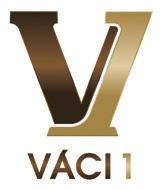
1016 Budapest, Hegyalja út 7–13. (1) 429-5050 office@simmoag.hu
Very Good
IMMO AG (100)
BREEAM in Use, LEED Gold for commercial interiors Horizon Development (100)
1065 Budapest, Nagymező utca 44. (1) 429-5050 office@simmoag.hu
1052 Budapest, Deák Ferenc utca 5. (1) 473-1209 leasing@horizon development.hu
BREEAM Very Good White Star Real Estate Kft.
Erste Ingatlan Alap (100)
BREEAM Very Good (100)
2220 Vecsés, Lincoln út 1. (1) 920-2193 erstealapkezelo@ erstealapkezelo.hu
1082 Budapest, Futó utca 31–33. (1) 266-2181 office@futureal.hu
BREEAM
Very Good ConvergenCE Investum (100)
Investum Kft. (100)
Alphagon Ingatlan fejlesztő Kft. (100)
1133 Budapest, Árbóc utca 6. (1) 225-0912 office@ convergen-ce.com
1027 Budapest, Ganz utca 16.
1117 Budapest, Dombóvári út 9. (1) 374-3040 office.hungary@ cbre.com
1024 Budapest, Margit körút 19–21. (1) 266-6000 info.hungary@ codic.eu
Zrt.
Magyar Posta Takarék Ingatlan Befektetési Alap (100)
1013 Budapest, Krisztina tér 1. (70) 773-2690 szoboszlai.roland@ atq.hu
36 | 3 Special Report www.bbj.hu Budapest Business Journal | September 23 – October 6, 2022 Rank COmpany WeBsite n et O ffi C e spa C e (sqm) tO tal GRO ss B uildin G a R ea (sqm) nO . O f levels a ve R a G e level size (sqm) Cu RR ently leasa B le O ffi C e spa C e ( sqm ) m inimum lease te R ms (yea R s) a ve R a G e m O nthly R ent O n a u G . 1, 2022 ( e u RO /sqm) a ve R a G e m O nthly se R vi C e C ha RG e O n a u G . 1, 2022 ( e u RO /sqm) y ea R esta B lished CuRRent majOR tenants GReen seRviCes Stage of green certification rating l evel O f Ce R tifi C ati O n (BR eeam ) Real estate a G en C y(ies) OR a G ent(s) OWneRship (%) hunGaRian nOn hunGaRian addRess phOne email G R een ene RG y Bi C y C le st OR a G e p u B li C t R ansp OR tati O n O W n se W a G e mana G ement i ndependent p OW e R supply e ne RG y effi C ien C y p ROGR am n atu R al ventilati O n d ayli G ht and m O ti O n sens OR s lOC al R e C y C lin G G R ey W ate R R euse e le C t R i C / h y BR id C a R C ha RG e R s i nte R nal ya R d W ith pa R k G R een ROO f Rene W a B le ene RG y n et WOR kin G hu B p lannin G phase f inal phase Classifi C ati O n O f existin G B uildin G 97 BalanCe lOft www.balanceloft.hu 6,500 7,325 4 1,530 1,991 5 13.50 1,950 HUF A ✓ ✓ ✓ ✓ ✓ ✓ ✓ ✓ A A ✓ BREEAM Very Good CPI
98 Buda CenteR www.simmoag.hu 5,946 8,343 7 850 A 5 A A A ✓ ✓ ✓ ✓ ✓ ✓
S
99 pódium www.simmoag.hu 5,749 8,289 9 800 A 5 A A A ✓ ✓ ✓ ✓ ✓ ✓
S
100 váCi 1 www.vaci1.hu 5,700 13,800 6 A A A A A A ✓ ✓ ✓ ✓ ✓ ✓ ✓ ✓ ✓ ✓ A A ✓
101 the quadRum www.erstealapkezelo.hu 5,390 13,226 5 900 101 3 12 5.83 2008 KEF, Robert Bosch, Secops, Somfy, TRUMPF ✓ ✓ ✓ ✓ ✓ ✓ ✓
102 CORvin CORneR www.futureal.hu 5,364 6,122 6 A A A A A 2014 A ✓ ✓ ✓ ✓ ✓ ✓ ✓ ✓ ✓ A A ✓
103 áRpád CenteR www.arpadcenter.hu 5,271 5,559 7 900 217+ 267 5 A A 1994 AG Mamas, Aurum, Billingo, CCE Hungary, DWP, Eurorisk, Fürgefutár. hu, EverDerm Laser Center, JOBGROUP, VS-Faktor ✓ ✓ ✓ ✓ ✓ ✓ ✓
In-Use
104 Canada squaRe 4,800 5,000 6 A A 5 14.50–15 A 2004 Canadian embassy A A A A A A A A A A A A A A A A A A BREEAM in Use Very Good
105 alphaGOn www.alphagon.hu 4,663 6,407 6 800 A A A A A A ✓ ✓ ✓ ✓ ✓ ✓ ✓ ✓ ✓ ✓ ✓ A A ✓ DGNB GOLD Certificate CBRE
106 hOmeWORk www.homework.hu 3,379 3,754 4 600–1000 3,754 5 A A A ✓ ✓ ✓ ✓ ✓ ✓ ✓ ✓ ✓ ✓ ✓ ✓ A A
107 taBán www.diofaalapkezelo.hu ASSET MANAGEMENT 1,812 2,107 6+25 402 A A A ✓ ✓ ✓ ✓ ✓ ✓ ✓ ✓ ✓ A A ✓ A ATQ Property
A = would not disclose, NR = not ranked, NA = not appliacable This list was compiled from responses to questionnaires received by September 21, 2022 and publicly available data. To the best of the Budapest Business Journal’s knowledge, the information is accurate as of press time. The list is based on companies’ voluntary data submissions. While every effort is made to ensure accuracy and thoroughness, omissions and typographical errors may occur. Additions or corrections to the list should be sent on letterhead to the research department, Budapest Business Journal, 1075 Budapest, Madách Imre út 13–14, or faxed to (1) 398-0345. The research department can be contacted at research@bbj.hu
4
Socialite
Black Ukrainian Refugee Fashion Designer Welcomed in Budapest
For Eno Enyieokpon, the upheaval caused by the war in Ukraine is the latest in a series of challenges on his journey to create a world-class fashion brand. But, after fleeing Ukraine and following the showcase of his brand Enno at Budapest Fashion Week back in April, he’s on the way to his next big adventure in Hungary.
DAVID HOLZER
Enyieokpon arrived in Budapest seven days after the war broke out on February 24, carrying only his official documents and academic qualifications. He began designing clothes back in his native Nigeria, but his mom was against the idea and wanted him to pursue an education that would set him up for what she felt was a “more sensible” career.
In 2012, Enyieokpon left Nigeria and headed for Belarus to study computer engineering. It’s not at all unusual for Africans to attend university in Eastern Europe. Under communism in the 1970s and ’80s, there were a large number of African students studying in Hungary. In 2018, Hungary had a black member of parliament, Olivio Kocsis-Cake of the then opposition Párbeszéd (Dialogue) party.
But, as a foreigner, Enno could not start a business in Belarus. In September 2017, after winning a fashion contest for young designers organized by Belarusian brand Mark Formelle, Enyieokpon moved to Ukraine.
“The dean of a university in Kyiv saw my winning collection and invited me to continue my masters’ program there,” explains Enyieokpon.
He says he encountered racism in Ukraine. “It was difficult finding a lawyer willing to work with a black man, a store
owner willing to rent to me, or workers willing to listen to me. But I had invested mentally, financially, and psychologically in Europe since I arrived in 2012. And most of the ideas that really changed my life as a designer came at this time, one of my toughest in Ukraine.”
Immediately after Enyieokpon opened his atelier and showroom, he started making statement collections. Business blossomed. He began designing and making clothes for top Ukrainian artists and dancers, such as Monatik and Vladimir Dentes, as well as TV presenters. Because he was focused on menswear, he also dressed significant Russian artists like Artik.
Growing Brand
By the end of 2021, Enyieokpon’s brand was doing even better. He had created a collection for Mitsubishi Motors Ukraine for a fashion show that was supposed to take place in March 2022.
Eno also participated in Ukrainian Fashion Week, held online because of COVID-19 in late March 2021. This event was affiliated with the prestigious Budapest Central European Fashion Week (not to be confused with Budapest Fashion Week), which aims to place Budapest on the fashion global fashion map.
Enyieokpon, his reputation growing, says he had no intention of ever leaving Ukraine. Then came the Russian invasion.
Forced to leave all his belongings in his showroom, when Enyieokpon arrived at Budapest’s Nyugati railway station in February, he knew no one in Hungary.
“I was getting ready to spend the night at Nyugati,” he says, “when a lady by the name of Ágnes walked up to me and asked me if I needed a place to say.”
When Enyieokpon replied that he did, the woman sent him to Anna Farquhar, a friend of hers who happened to know the
organizers of Budapest Fashion Week. As he says, “With just one phone call, I got to be part of April’s Budapest Fashion Week.”
It’s hardly surprising that Enyieokpon describes his brand as “A symbol of what is possible.”
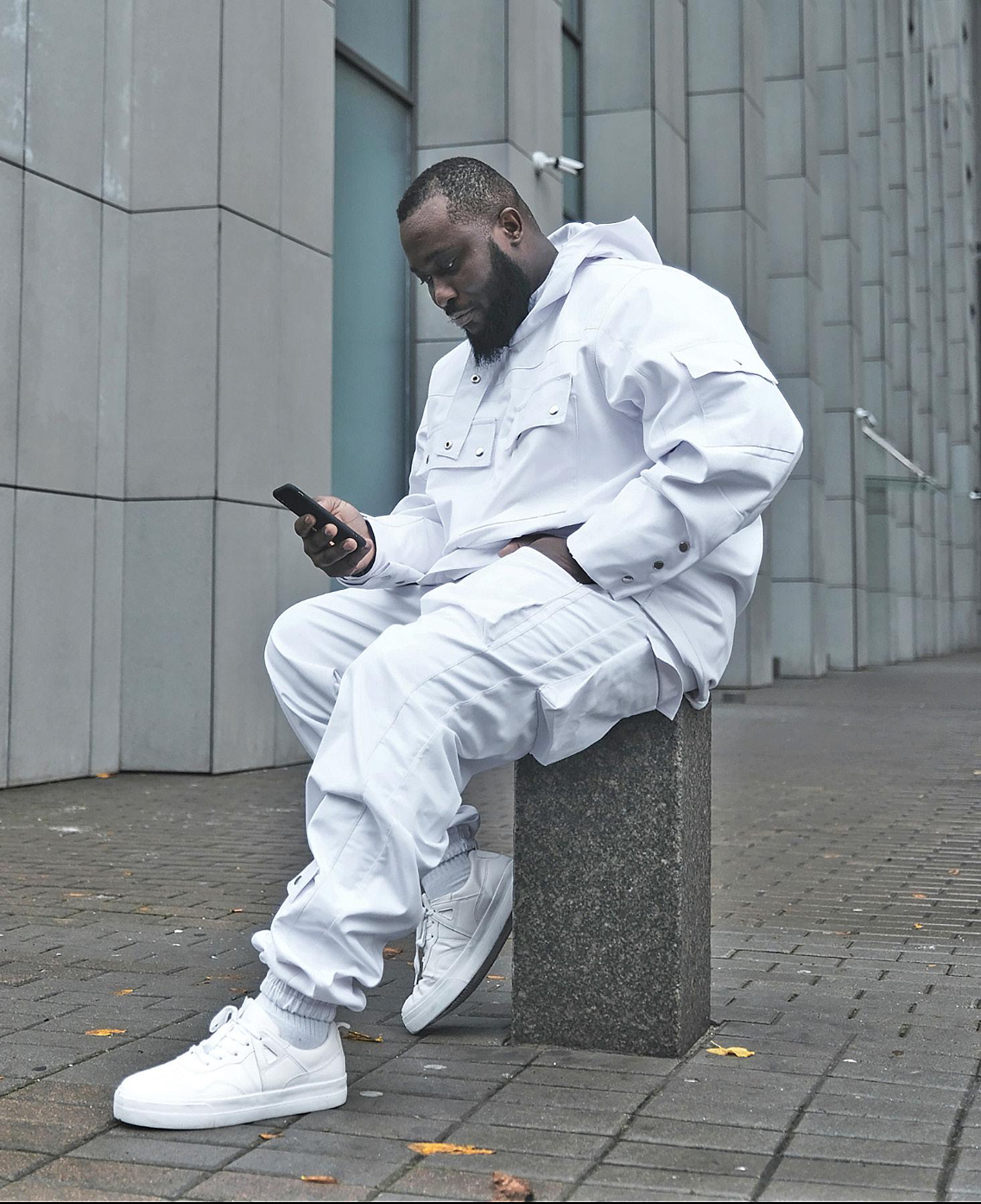
Budapest Platform
Enyieokpon inevitably misses his showroom and atelier, equipment that took him years to acquire, and, most of all, his workers. But, for him, Budapest is “like a platform for me to contribute my own quota of creativity and help put Hungary on the global fashion map.” He also appreciates that “the people here are open to foreigners.”
Now, in the month that he expected to receive his Ukrainian passport, Enyieokpon is starting from zero all over again. He admits he has no idea what the future holds. And, as he told The Guardian website, “As a black refugee, I have limited opportunity.”
“I want to tell the youth that irrespective of where you are located, you can still have a global impact. Your art and business shouldn’t be all about making money but also touching the souls and hearts of people.”
But, as Enyieokpon also said, “I’m trying to let every refugee out there know, I know it’s hard for you; new systems, no friends, no family, out there alone wondering if you can make it to the next day and stuff like that. But I want to say if you have willpower, if we had the will to withstand the Russians, we also have the willpower to move and forge ahead in life […]. I am 100% optimistic about the future.”
Right now, he’s selling Enno, Kyiv clothing on Instagram while he sets up a new atelier in Budapest and restructures his brand.
His message remains one of positivity. “The vision of my brand is to change the norms and make everyone see the possibility of becoming the person they want to be,” he says. “I want to tell the youth that irrespective of where you are located, you can still have a global impact. Your art and business shouldn’t be all about making money but also touching the souls and hearts of people.”
Following in Eno’s footsteps, other Ukrainian designers had the opportunity to present their collections in Budapest recently during September’s fall Budapest Central European Fashion Week as part of the “Support Ukrainian Fashion” initiative.
You can follow Eno and his brand Enno at eno_enyieokpon on Instagram. For more on the September Budapest Central European Fashion, see page 38.
Eno Enyieokpon in one of his creations.
www.bbj.hu Budapest Business Journal | September 23 – October 6, 2022
10th BCEFW Draws 4,000 Fashion Visitors
Altogether, 24 brands displayed their spring/summer 2023 pieces on a catwalk in the Museum of Fine Arts for the twice-yearly Budapest Central European Fashion Week (BCEFW), held for the 10th time this fall.

An audience of 2,000 for the main event saw collections from classic styles to streetwear with two Polish and seven Ukrainian designers represented alongside the Hungarian brands. Nearly 30 side events highlighted the Budapest fashion scene all over the city, drawing almost 4,000 visitors in total.
Organized by the Hungarian Fashion & Design Agency, BCEFW ran from August 29 to September 4, and included roundtable discussions, workshops, fashion shows, and even a yoga class, while designers offered unique discounts in their showrooms. For many years now, the event has been the number one meeting point for a broad audience that includes regional buyers, designers, influencers, and media.
The BCEFW’s highlight each season is the two- day fashion show, which this
year saw a support team of almost 600 people. Some designers imagined spring with traditional floral patterns and lively colors, while others were already celebrating summer with outfits inspired by travels to the East. Elegant pieces were not lacking either, whether it be sequined suits or satin evening gowns.
While there was understandable interest in the Ukrainian shows, the Polish designers also had great success, the Hungarian Fashion & Design Agency said.
Central Europe’s most prominent fashion gathering attracted both Hungarian celebrities and foreign experts, including the editors of the Italian L’Officiel, the British Forbes, the New York-based The Cut, and the Ukrainian Vogue. Front row guests included international influencers like India’s Farhana Bodi and the French stylist to the stars, Loicka Grace.
The event’s online audience was also significant, with the catwalk shows live
on the agency’s Facebook and TikTok platforms. The most viewed show on the latter attracted more than 66,000 people. BCEFW’s social media content reached over 600,000 users in two days.
Fashion Capital
One of the strategic goals of the Hungarian Fashion & Design Agency, founded in 2018, is to turn Budapest into the region’s fashion capital as
Time to Care: Express Medical Assistance at Doktor24 Multiklinika

The Budapest Business Journal speaks with Balázs Sárosi, head of Doktor24 Express, the urgent care unit of the leading local private healthcare provider Doktor24. Sárosi and his professional team of doctors offer instant medical care to walk-in patients at the company’s state-of-the-art Doktor24 Multiklinika in District XI, Budapest.
well as an attractive destination for travelers interested in fashion and design looking for products from the Hungarian creative industries.
Besides the promotional and commercial aspects, the event served a good cause again this year; the HFDA offers the amount received from ticket sales, which it put at almost HUF 2.3 million, to the Hungarian Interchurch Aid, which will use the proceeds for its program to help Ukrainians.
“The Hungarian Fashion & Design Agency joined the Support Ukrainian Fashion initiative created to help Ukrainian designers,” explains Anita Forintos-Szűcs, deputy CEO of the HFDA.
“We have been partners with the organizers of the Kyiv fashion week for several years, and this year, they are celebrating an important anniversary: they have been organizing the event in the Ukrainian capital for 25 years. But the Ukrainian fashion week was cancelled this year due to the war, so we offered Budapest as a venue to present the newest Ukrainian collections ahead of several other European fashion weeks,” Forintos-Szűcs adds.
BBJ: Who should turn to Doktor24 Express?
Balázs Sárosi: We give families peace of mind by offering easy and quick access to professional urgent medical care without long waiting times. We primarily treat walk-in clients with acute health issues, but we are also prepared to assist people who are simply not sure what kind of specialist they should see for a particular problem. Our Western European-trained, Englishspeaking team of ER doctors examine, test, diagnose, and treat clients on the spot. If needed, we can also give direct referrals to 50-plus in-house consultants and specialists within Multiklinika for secondary care. We intend to serve
families, so we also treat kids over the age of one, and we can also refer them to Doktor24’s strong team of pediatric specialists. Our clinic is open beyond regular business hours, from Monday to Friday between 10 a.m. and 8 p.m. Clients can secure a parking spot in our underground car park by phone, and we can also assist those with limited mobility to access our premises from the parking area. Our English-speaking doctors boast decades of experience in ER patient care from Western Europe and maintain a comprehensive knowledge of the U.K.’s NHS protocols.
BBJ: What kinds of injuries and illnesses do you treat at the clinic?
BS: We treat a long list of non-lifethreatening medical issues from fever, colds, coughs, minor burns, urinary
problems, allergic symptoms, slight head injuries, strains, sprains, and more. In other words, we cover typical sports injuries, domestic accidents, common illnesses, and conditions that require medical attention but do not require hospitalization. The “we treat” and “we do not treat” lists are available on our website, along with our fair and transparent pricing. Our clients cannot
anticipate when they will need to come to us, so no appointments are necessary to visit Doktor24 Express. We guarantee medical attention within 15 minutes from arrival, and a full cycle of treatment is completed within four hours.
If the client’s condition requires emergency care in a specialized facility, we will do our best to stabilize their condition and call an ambulance or refer them to the local emergency care department.
BBJ: What kind of care do you provide on-site?
BS: Clients are treated in their order of arrival, in line with ER triage protocols. Primary care includes triage classification, medication to relieve pain or fever, a preliminary medical examination, and, if necessary, an ECG and targeted emergency ultrasound to make a full assessment. On-site lab tests are also available to rule out certain diseases and conditions such as thromboembolism, myocardial infarction, or severe organ failures. We have a whole arsenal of diagnostic equipment at hand at Multiklinika, with ultrasound, X-ray, and additional laboratory tests. We treat sports and domestic injuries with state-of-the-art bracing and gait support. If necessary, we can administer intravenous infusion treatments and obturation, offer wound management and wound closure (in the vast majority of cases with sutureless closure) and remove foreign bodies.
BBJ STAFF
Photos by Hungarian Fashion & Design Agency
The designer collections from the Budapest event can be viewed on bcefw.com
Balázs Sárosi Sustainable
38 | 4 Socialite www.bbj.hu Budapest Business Journal | September 23 – October 6, 2022
PRESENTED CONTENT
BENCE GAÁL
Moonlighting at Home, With the Approval of the Boss
It is not unusual to find vintners for established labels who also make exciting wines under their own name, free of the constraints placed on them by the tastes and demands of their employer wineries.
But here, Robert Smyth selects a series of enologists who appear to have found owners whose vision closely matches their own.
Barta, the traditional method sparkling Pezsgő 2017 (HUF 7,210) is made from 100% Furmint. It is taut, linear, and pleasantly dry on the finish.
Varietally Pure
At a wine tasting recently, I was interested to note that the first two offerings were from winemakers better known for their full-time jobs at wineries elsewhere.
At the portfolio tasting organized at the N28 Wine and Kitchen earlier this month by BoReTT, which represents small boutique wineries across Hungary, the first wine came from Vivien Újvári, the chief winemaker for Barta Pince in Mád, in the Tokaj region, where she makes wines of delightful precision, tension and balance.
Újvári hails from the Badacsony region, where her ancestor János started making wine in the middle of the 19th century. Today, she and her family have 0.7 hectares of their own Olaszrizling and Pinot Gris (Szürkebarát in Hungarian), planted in 1955 on Szent György hegy.
Újvári Olaszrizling 2021 was pressed gently by a vertical press, with the must racked after 24 hours, then fermented under a controlled temperature in 1,000liter barrels. After fermentation, it was racked again and aged on fine lees.
It has appealing candy, pear drop and elderberry aromas, with a textured lemon and apple, almost cider-like palate. The on-trade price is HUF 3,450 from BoReTT.
Ujvári previously worked at Villa Sandahl in Badacsony, and in New Zealand, before taking off to Tokaj, where she first worked for Degenfeld in the village of Tarcal. From her work at
The second wine at the BoReTT tasting was Zsolt Palkó’s Furmint 2020, which is elegant and varietally pure, with classic Furmint quince notes, petrol and oil, a bit like a Riesling. It also has something of an untamed, natural wine feel, and, indeed, the sulfur added is minimal, according to Palkó.
It was spontaneously fermented, mostly in oak barrels, with a small portion fermented in the tank, followed by the whole lot being aged in oak for eight to nine months.
“Furmint is well-suited to oak, which rounds out the wine and also complements it,” he told the Budapest Business Journal. The on-trade price is HUF 2,300 from BoRett.
Palkó has two hectares of his own on Badacsony Hill, although his day job is as chief winemaker at Villa Sandahl From the 2021 vintage, his own Furmint will be grown organically, says Palkó, whose first vintage was in 2019. His vines are 10-12 years old.
Furmint is popping up all over the country as winemakers get on the vinous train fuelled by the success of dry wines made from the grape in the Tokaj region. A wave of planting has ensued across Hungary. In many cases, rather than being planted for the first time, Furmint is being re-established where it once thrived before the phylloxera louse that devastated European vineyards in the late-19th and early 20th centuries wiped it out.
Palkó notes that Furmint was present in Badacsony pre-phylloxera but that
it wasn’t the main grape. On the 2021 vintage, Palkó is highly sanguine.
“The grapes are in a good condition. The Olaszrizling ripened earlier than usual and the acidity dropped off a little; the wine will have softer acidity,” he said. “The Furmint will also have slightly lower acidity than usual, which I’m happy with as the acidity in Furmint can be too high,” he said.
Another Badacsony vintner, Péter Váli, of Válibor in Badacsonyörs, told me recently that despite the generally hot summer with drought conditions in parts of the country, the mesoclimate of Badacsony is unique, with “rain falling at the right times throughout the summer.”
He anticipates an outstanding vintage.
Incidentally, another former Villa Sandahl winemaker, Ambrus Bakó, is now winemaker at Petrányi Pince, in Csopak, heading west along the northern side of Lake Balaton, although he continues to make his own wine back in Badacsony.
He has been in good form recently, given the wines I tasted at the Budapest Wine Festival, including the Szita hegy Olaszrizling 2020. A spontaneouslyfermented, refined spice bomb of a Syrah from 2019, with notes of violets, ripe raspberry, blackberry and blueberry and aged for seven months in French and Hungarian oak barrels, also impressed. It costs HUF 4,690 from petranyipince.hu.
Music and Wine
Back in Badacsony, the ownerwinemaker team of Gábor Ádám and Bálint Földi at Sabar Borház not only like making wine together but also listening to music; the winery hosts blues evenings just below Sabar Hill.
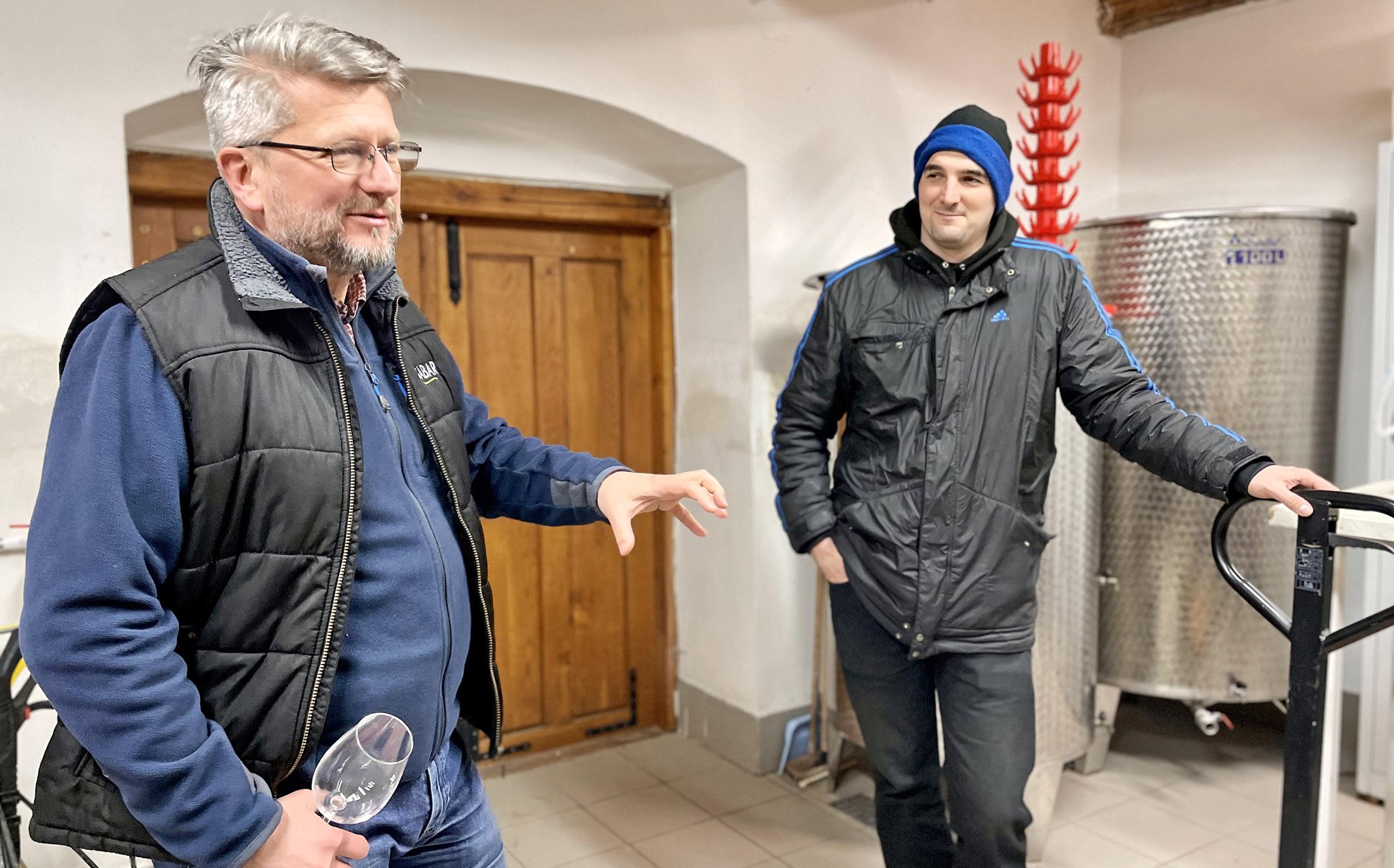
Földi’s first vintage as winemaker for Sabar was in 2016. Ádám realizes the value of a talented winemaker and is such a chilled boss that he is fine with Földi’s offerings being sold alongside the Sabar label at his winery. Both sets of wine are well worth seeking out.
From Sárospatak over in the Tokaj wine region, Pajzos is currently marking its 30th anniversary. Part of the celebrations was an amazing recent tasting whereby a series of six puttonyos aszú wines, and one aszúeszencia , were tasted.
These progressed in time back to 1999, also known as the vintage of the 20th century. These superb wines were paired with locally made macarons. The winery is Frenchowned and managed, although Hungarian Árpád Kolozsváry-Kiss will soon take over the reins from Laurent Comas, a long-term resident in Hungary, who is set to embark on new challenges back in France.
At Pajzos, winemaker Ferenc Naár, and viticulturist Pál Espák, both make their own wines in nearby Hercegkút. Their wines are available by the glass at Sárospatak’s A Boros wine bar and are well worth trying.
Also, in Tokaj, Dénes Szarka , winemaker for the excellent Pelle Pince in Mád, is another who makes wines that shine in their own right, such as his Szarka Pince 6 puttonyos aszú, which was ranked Number One in the Winelovers 100 in 2021.
Siblings István and Edit Bai, who ply their daily trade at the Dereszla winery, also have their own small family cellar, Carpinus, whose estate wines show that Furmint can taste fine, fresh and frisky when vinified only in the tank.
ROBERT SMYTH
Gábor Ádam left and Bálint Földi right, of Sabar winery. Photo by Or Szűcs.
4 Socialite | 39www.bbj.hu Budapest Business Journal | September 23 – October 6, 2022
